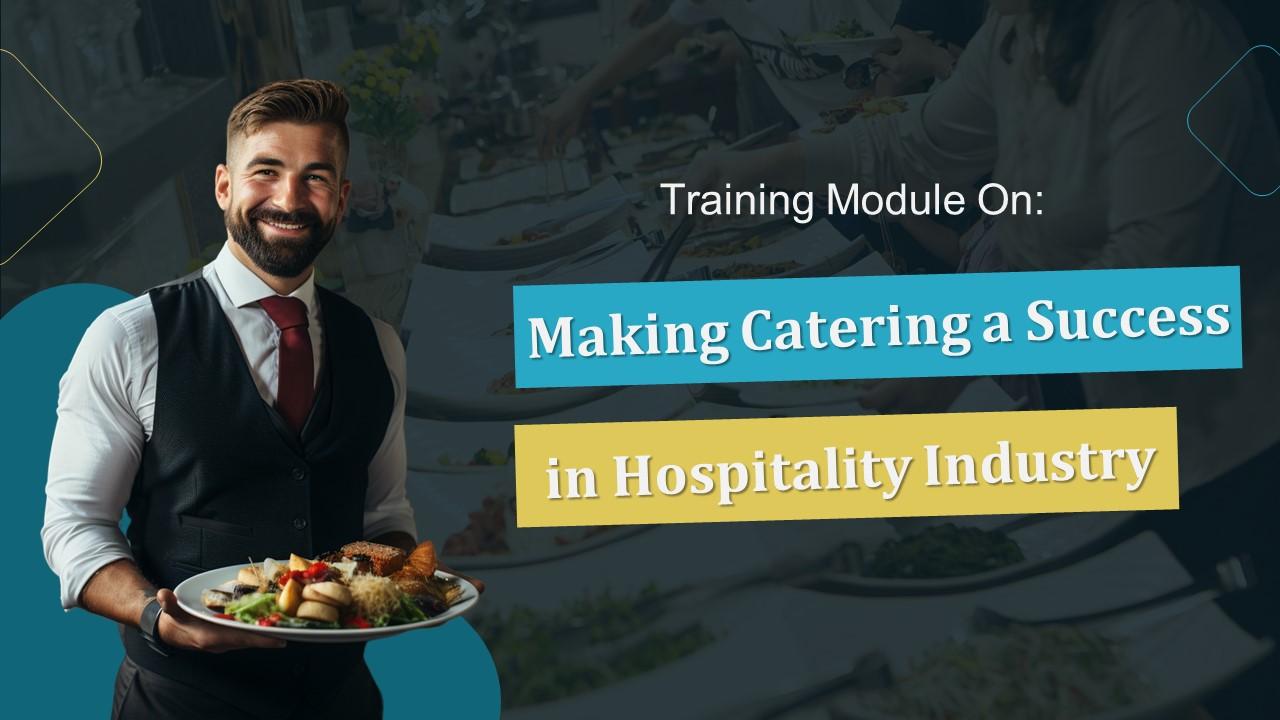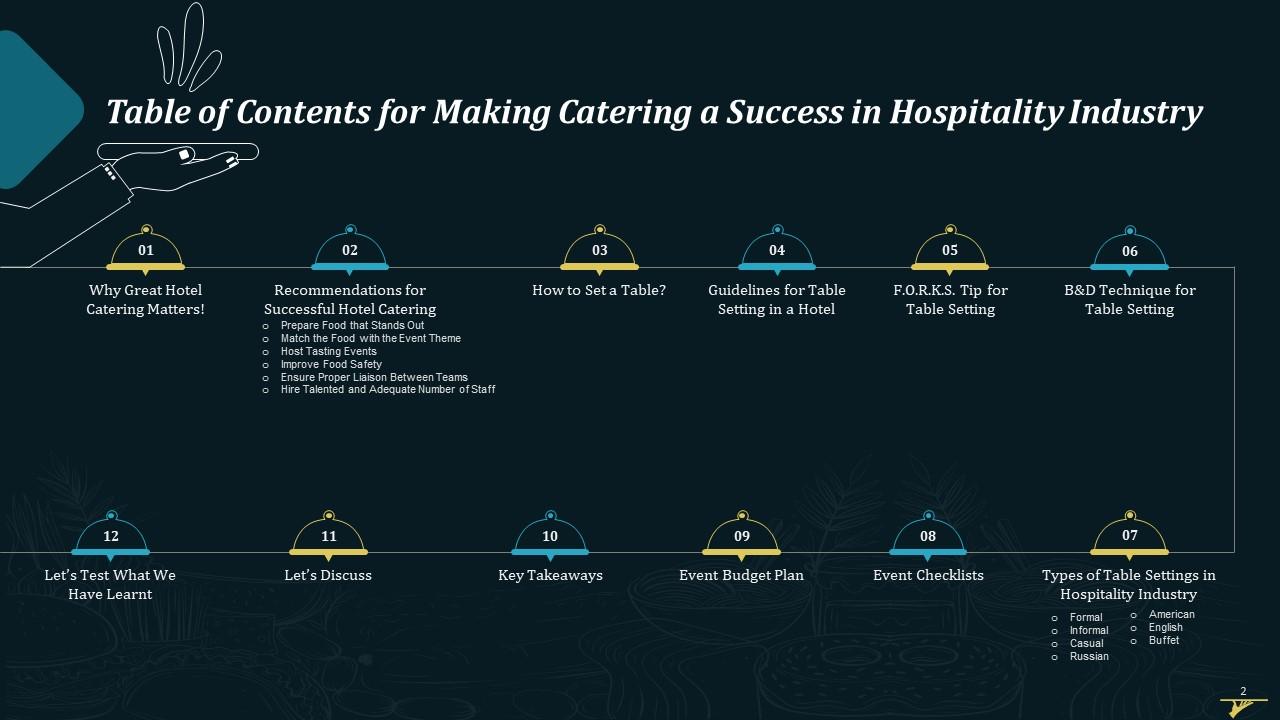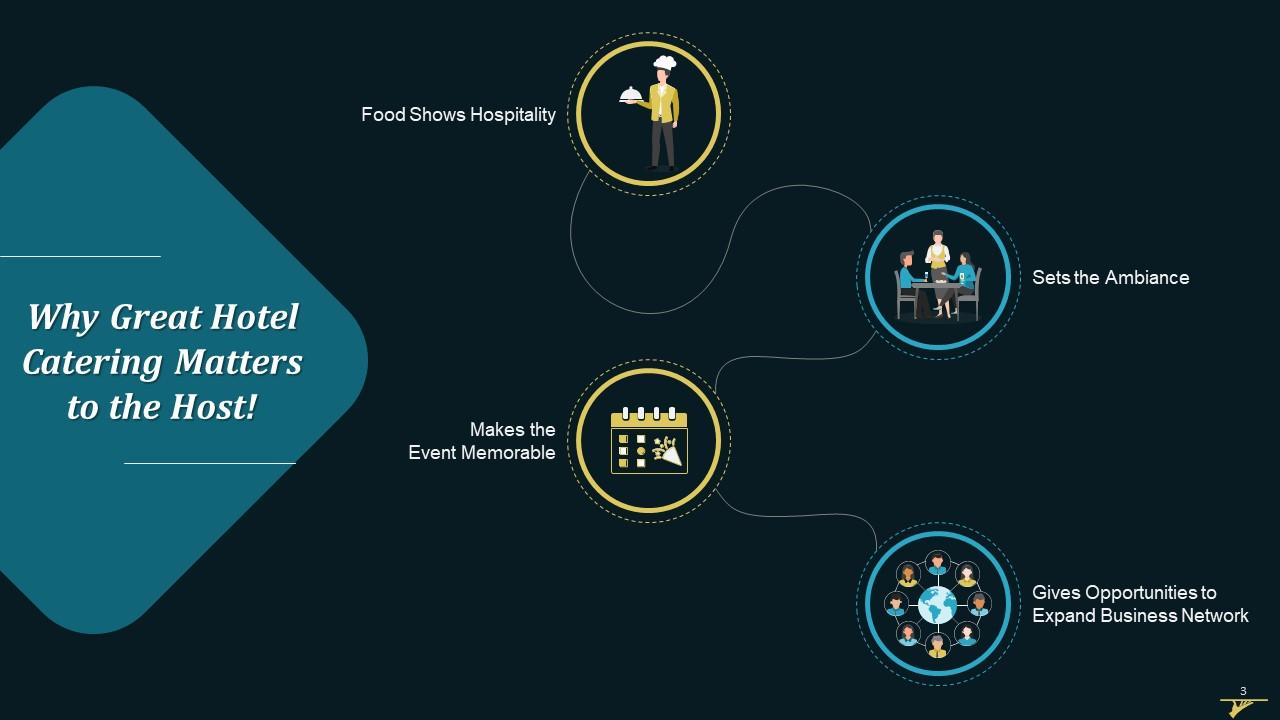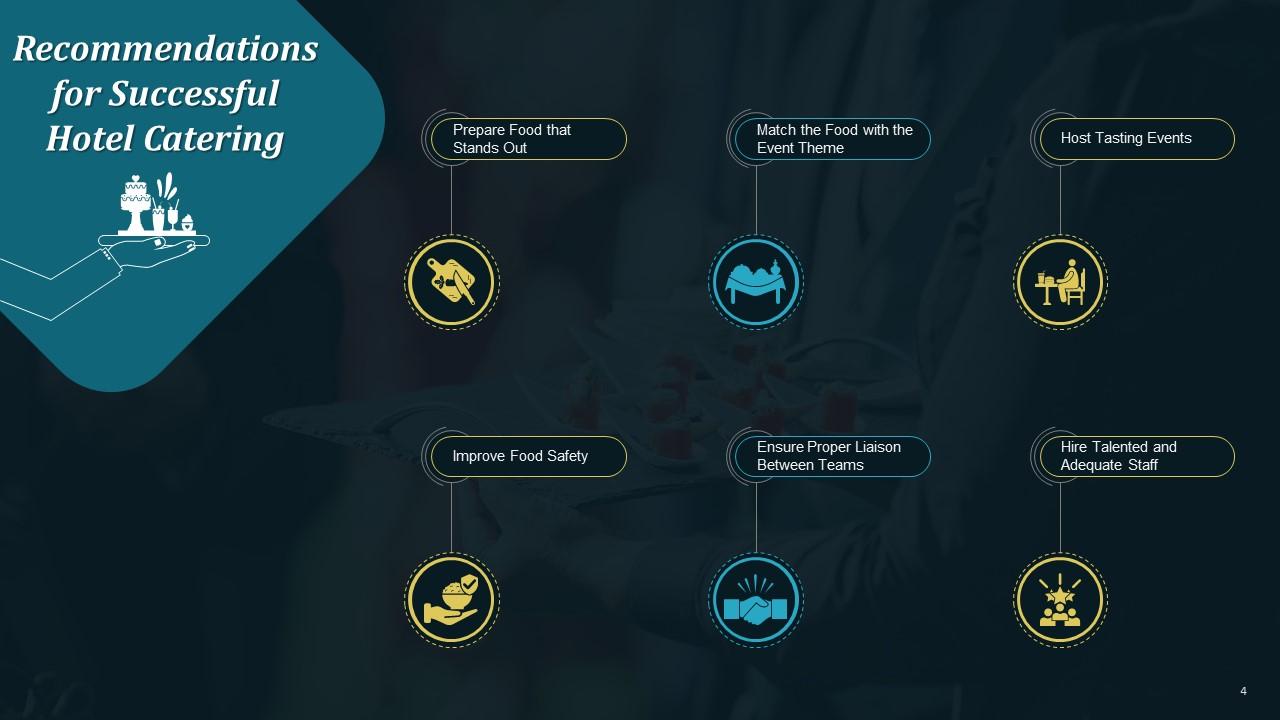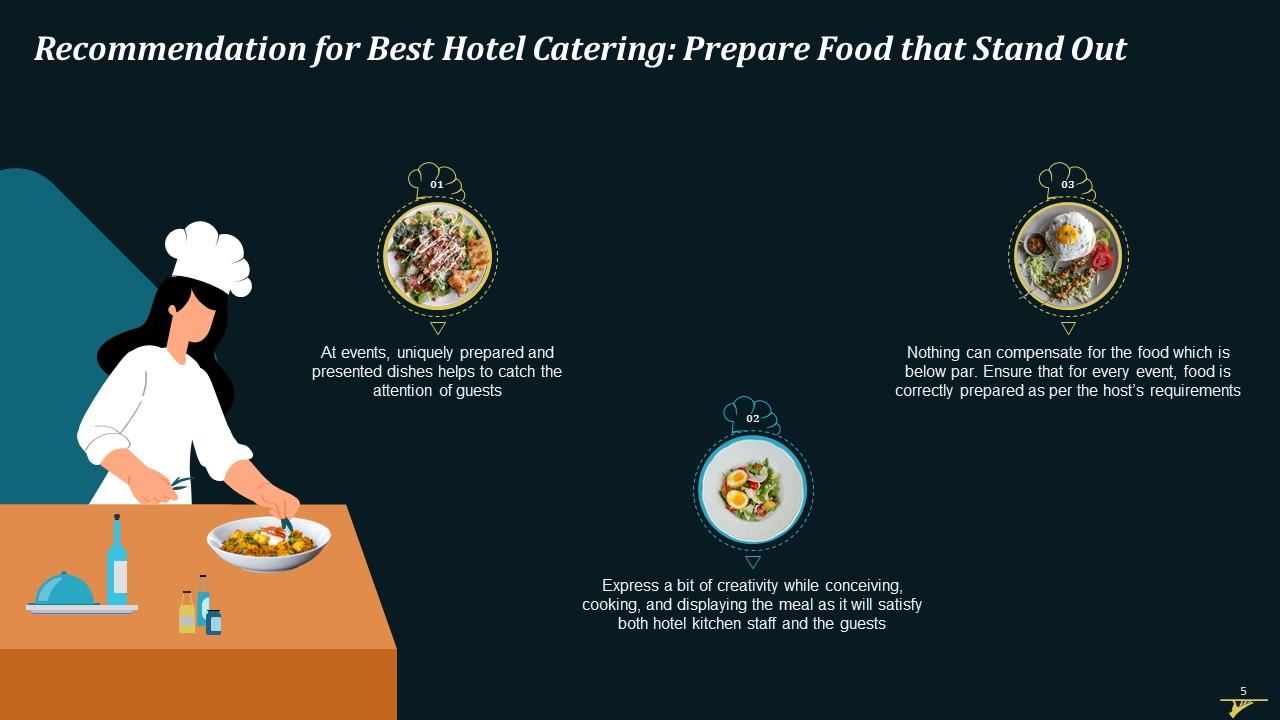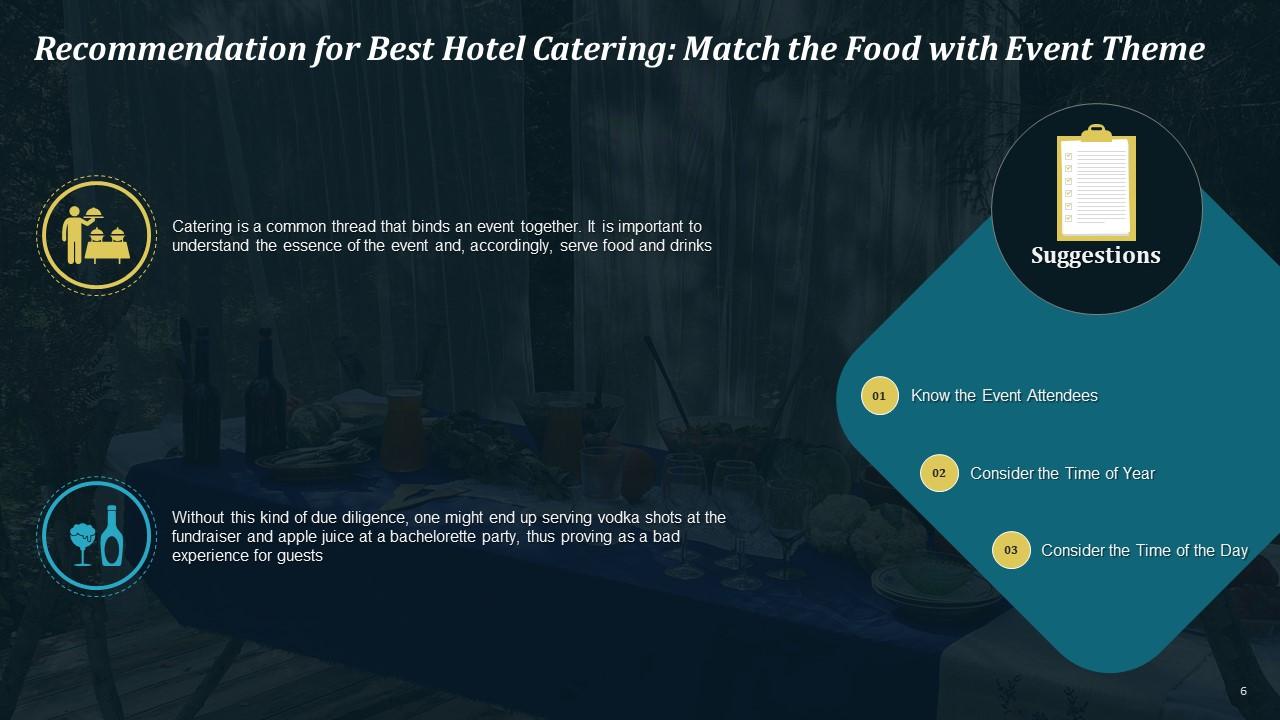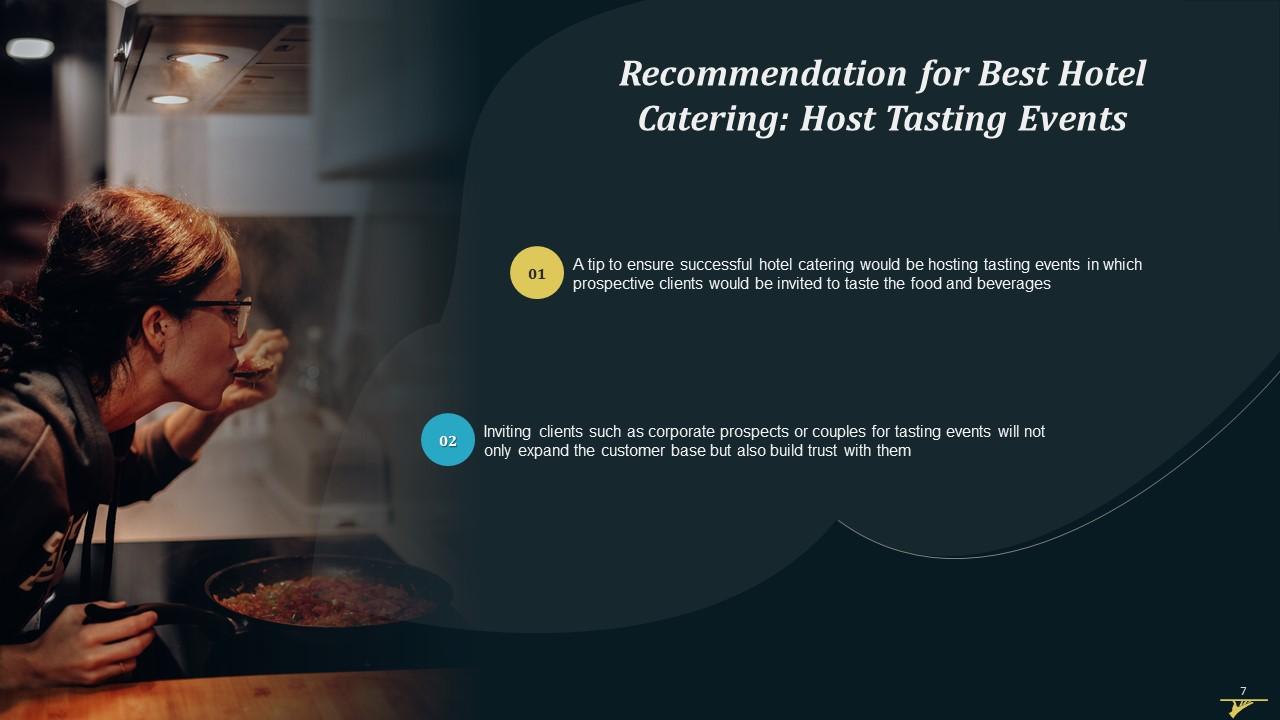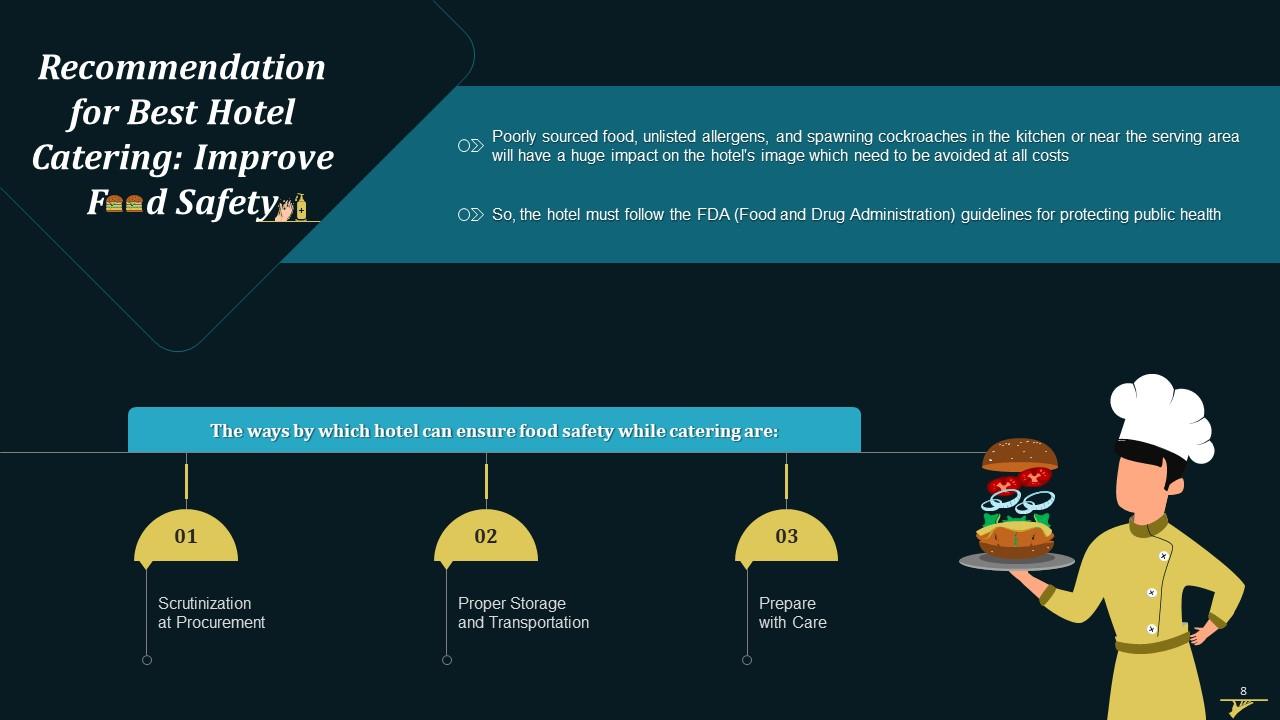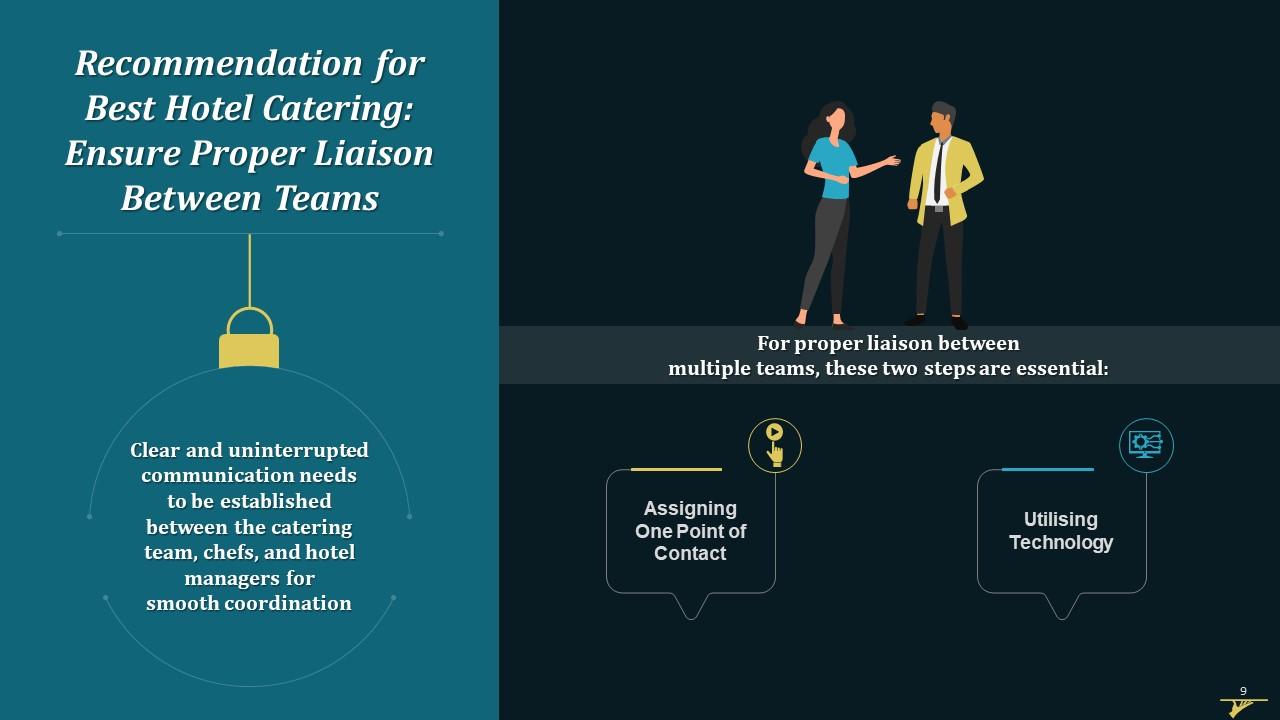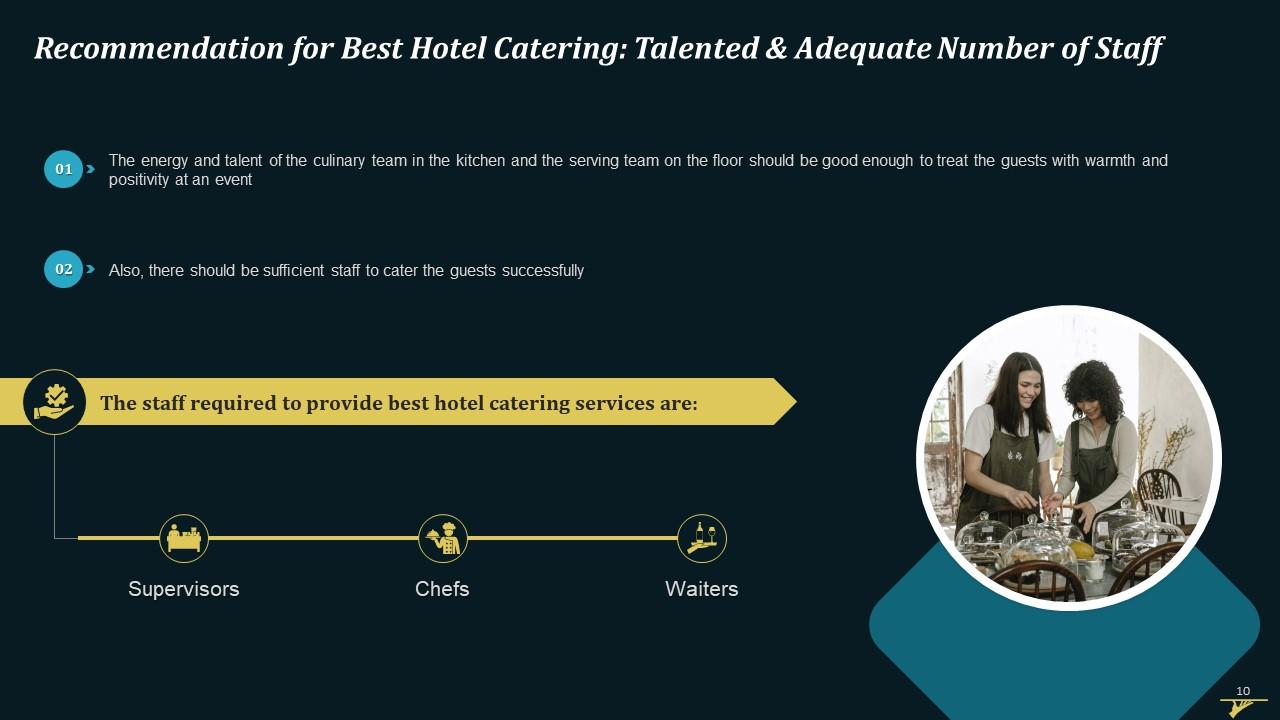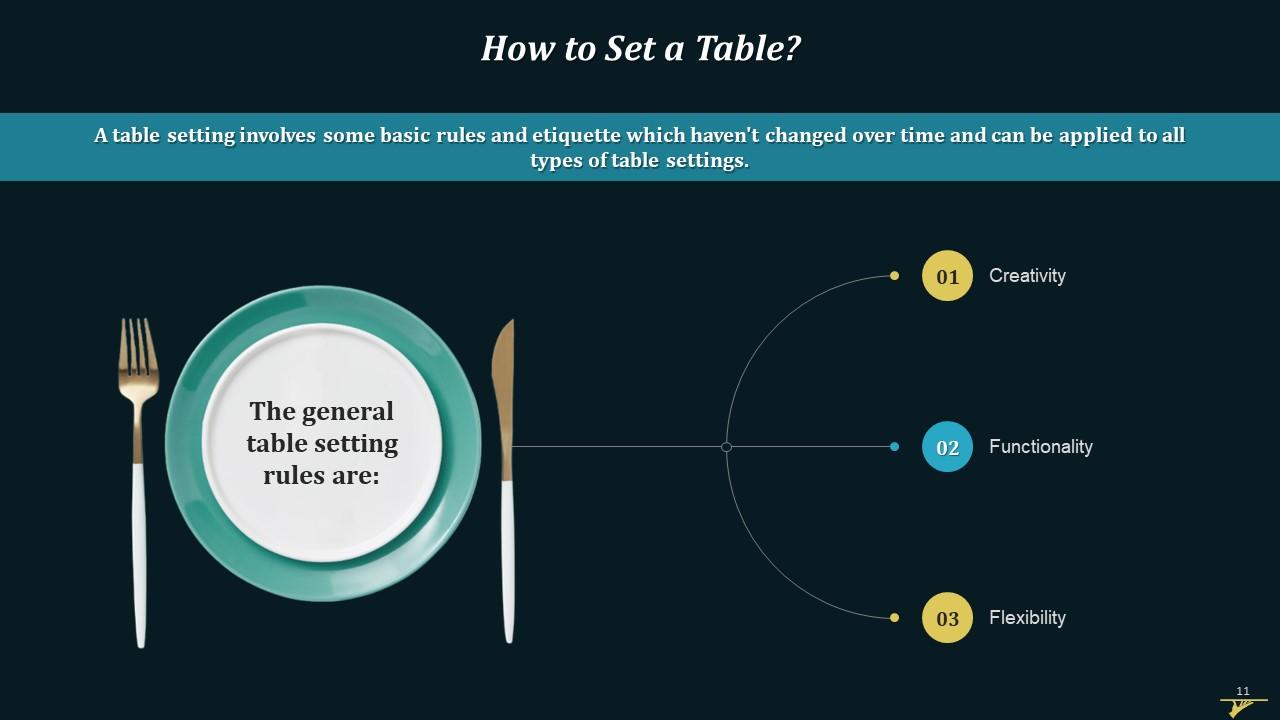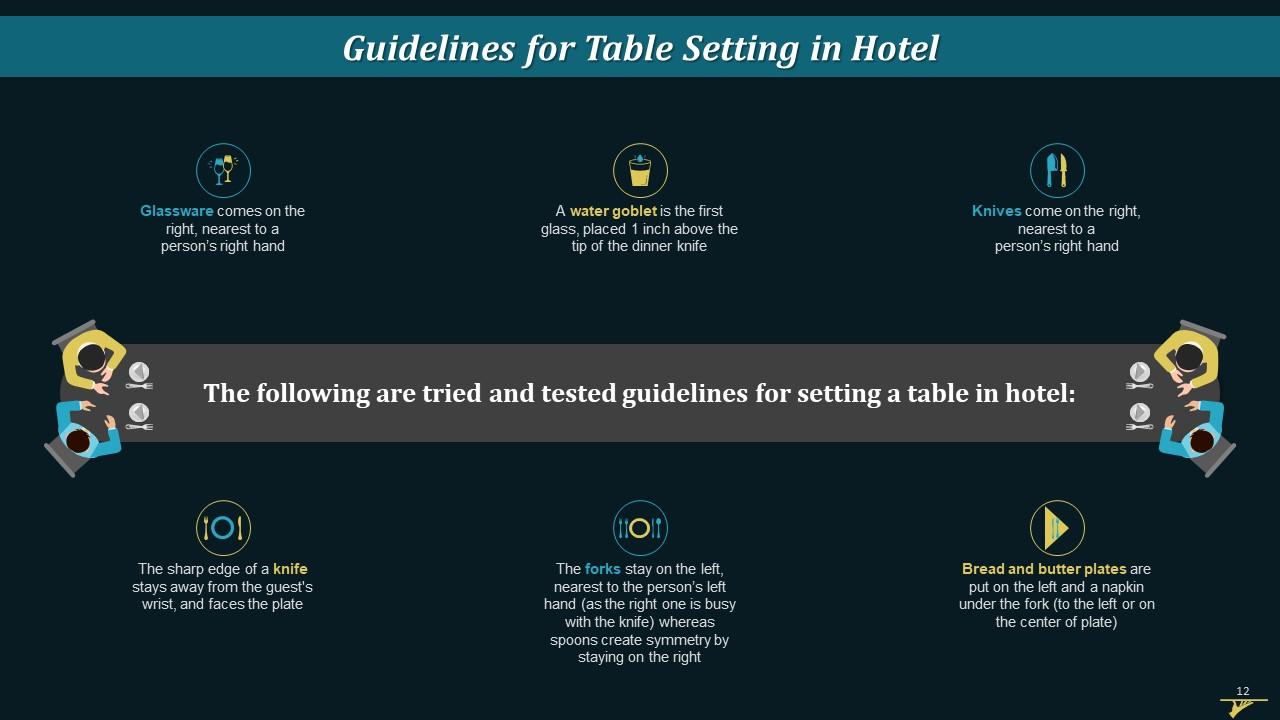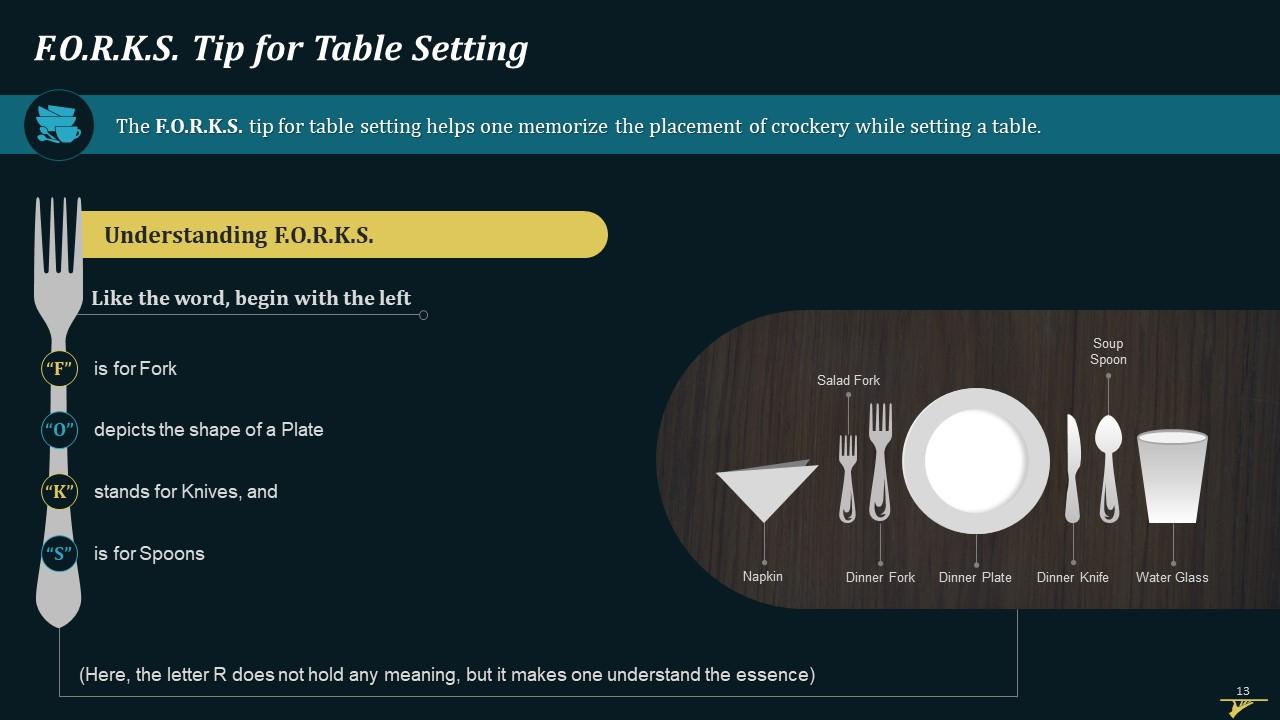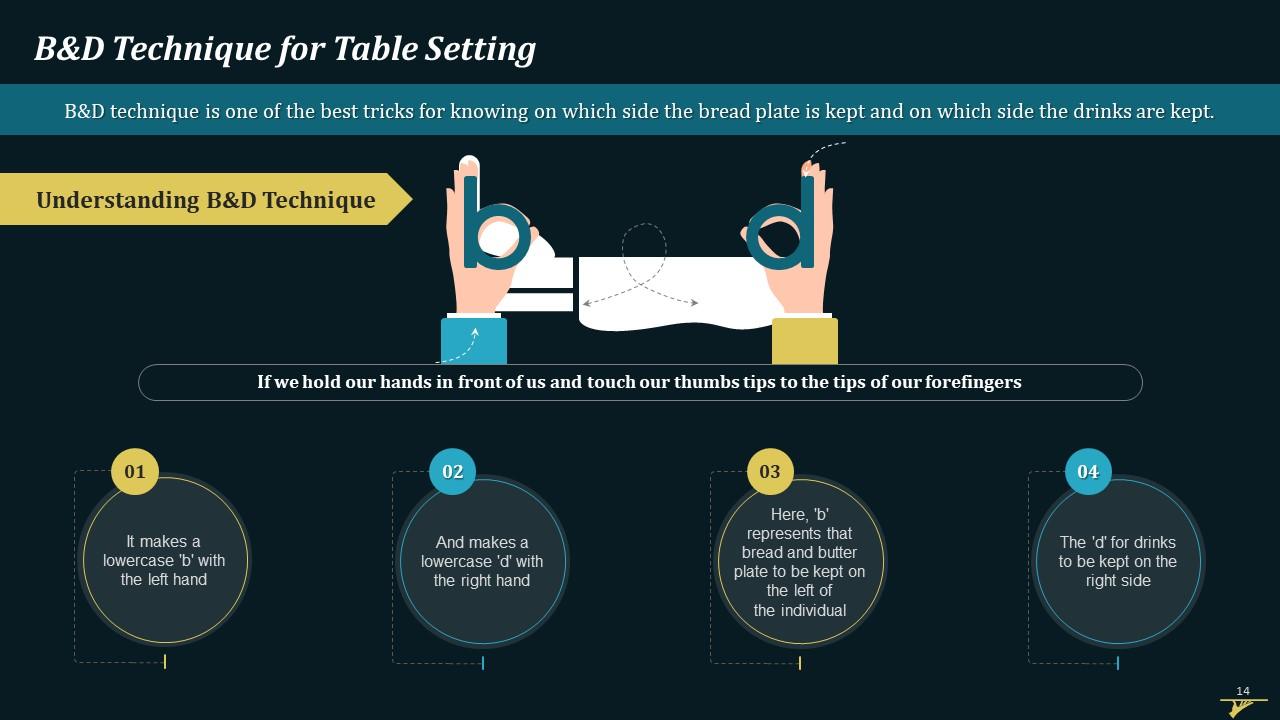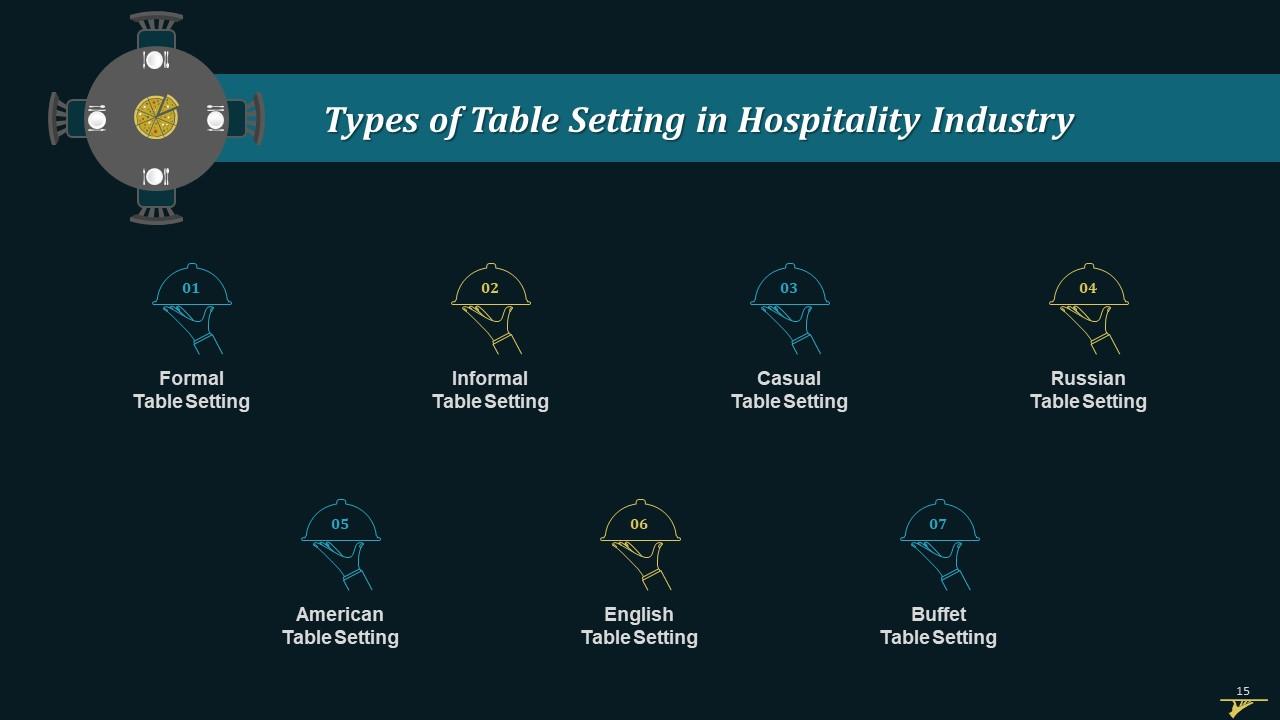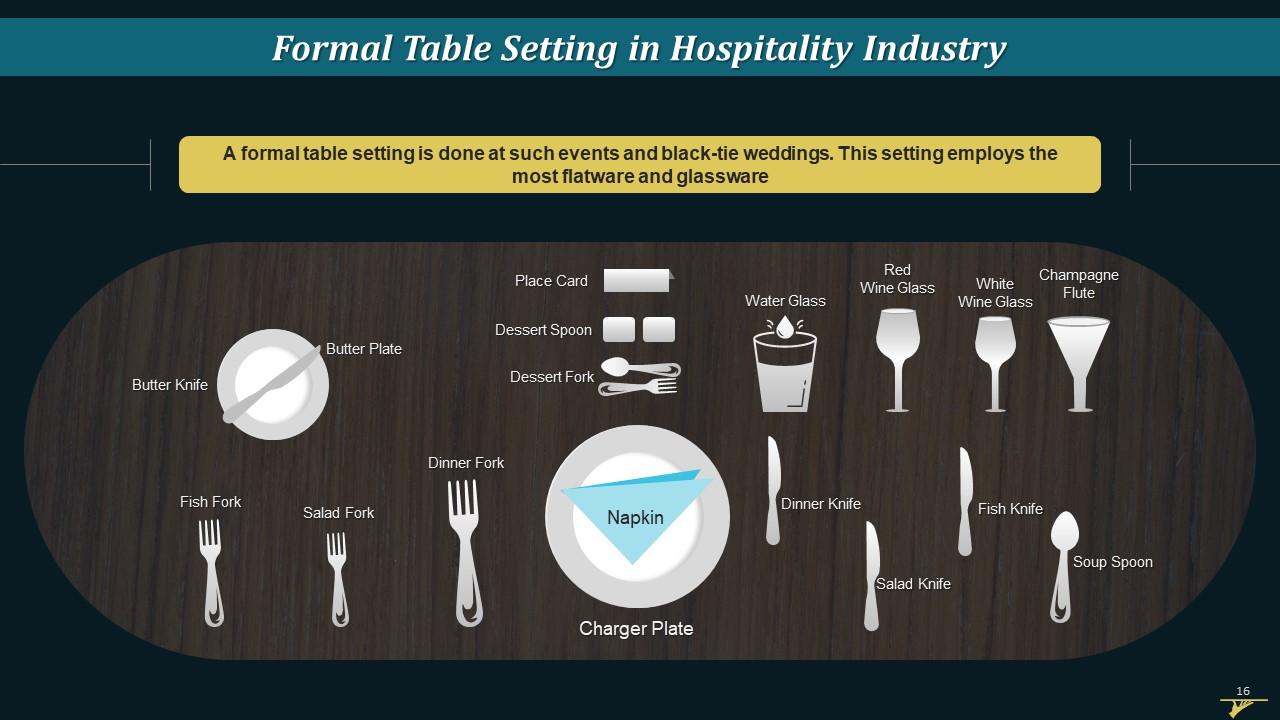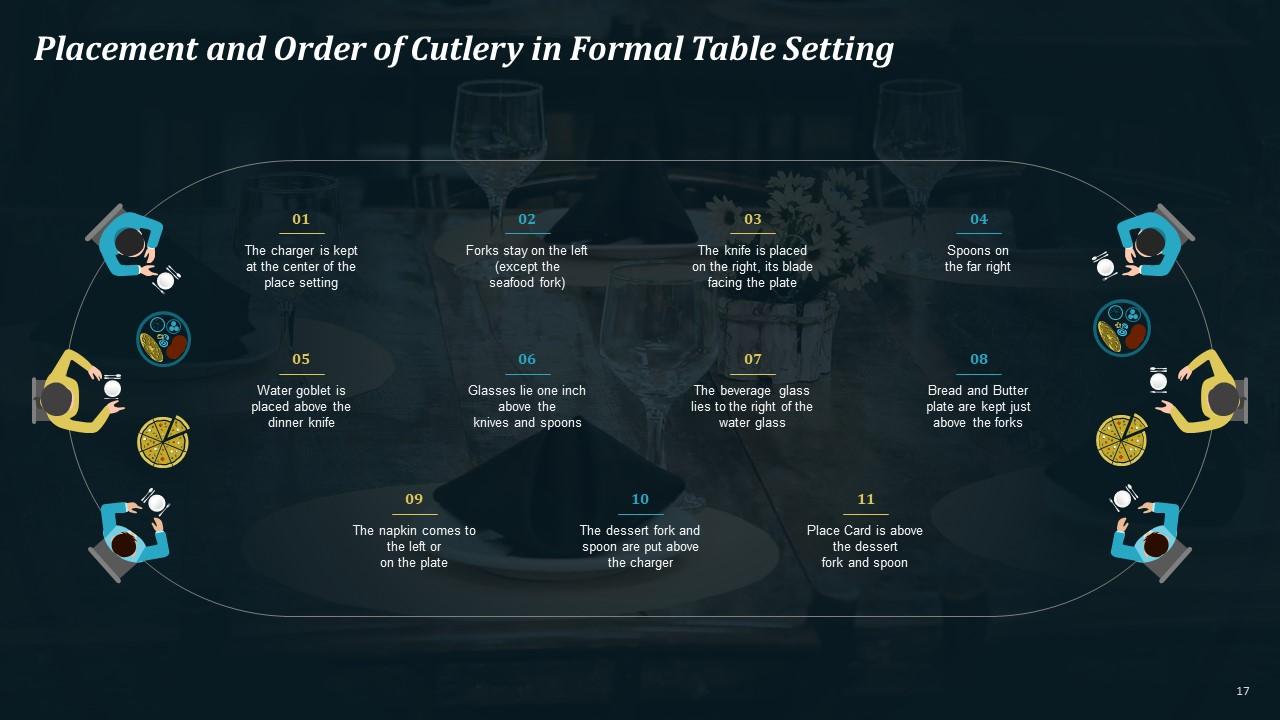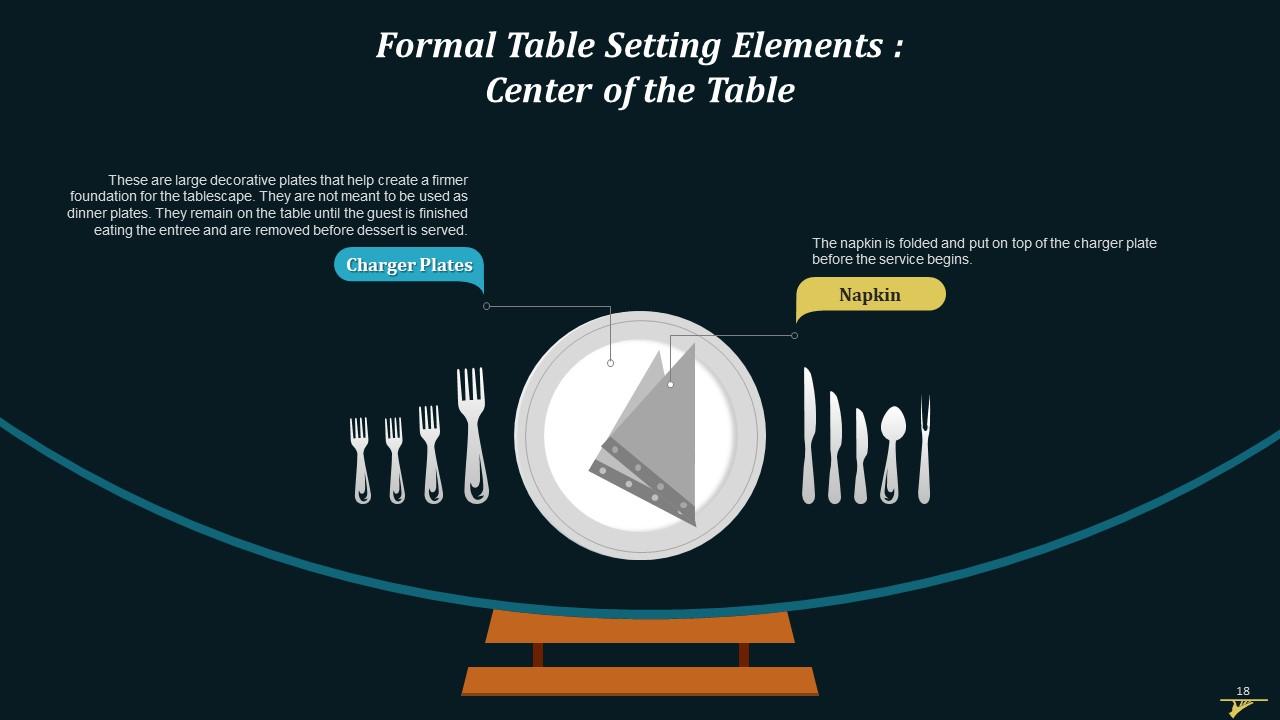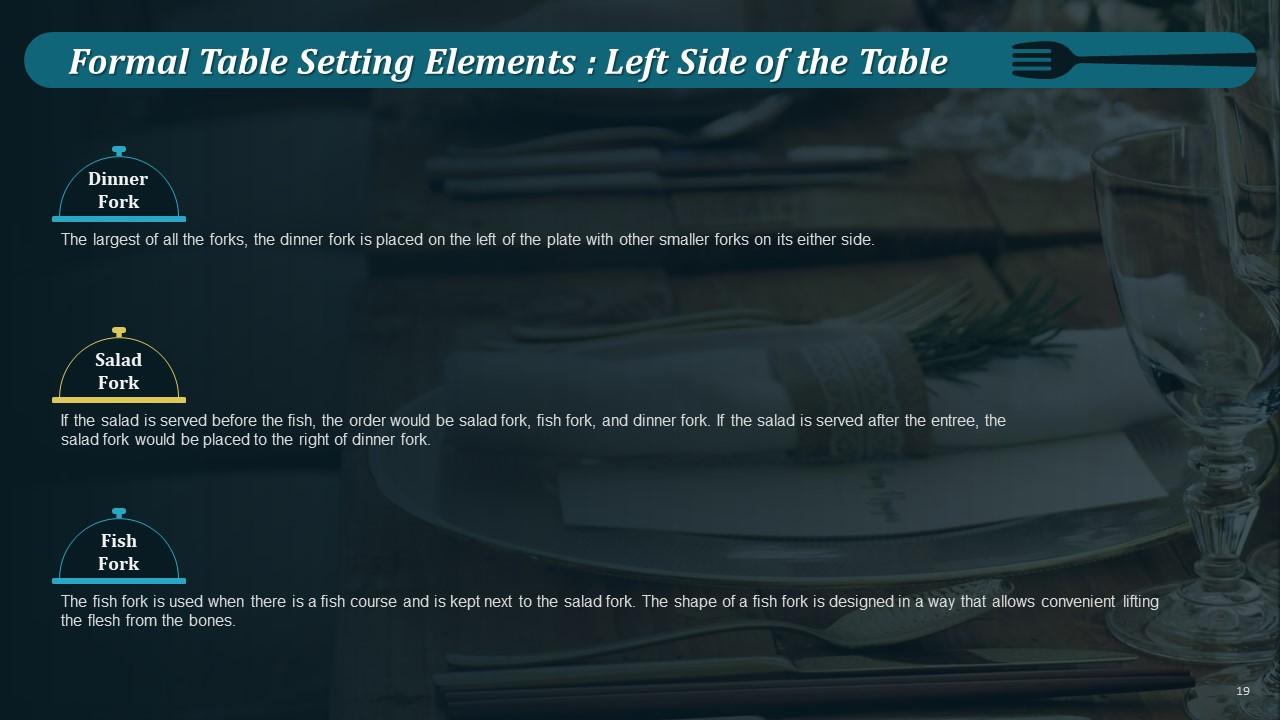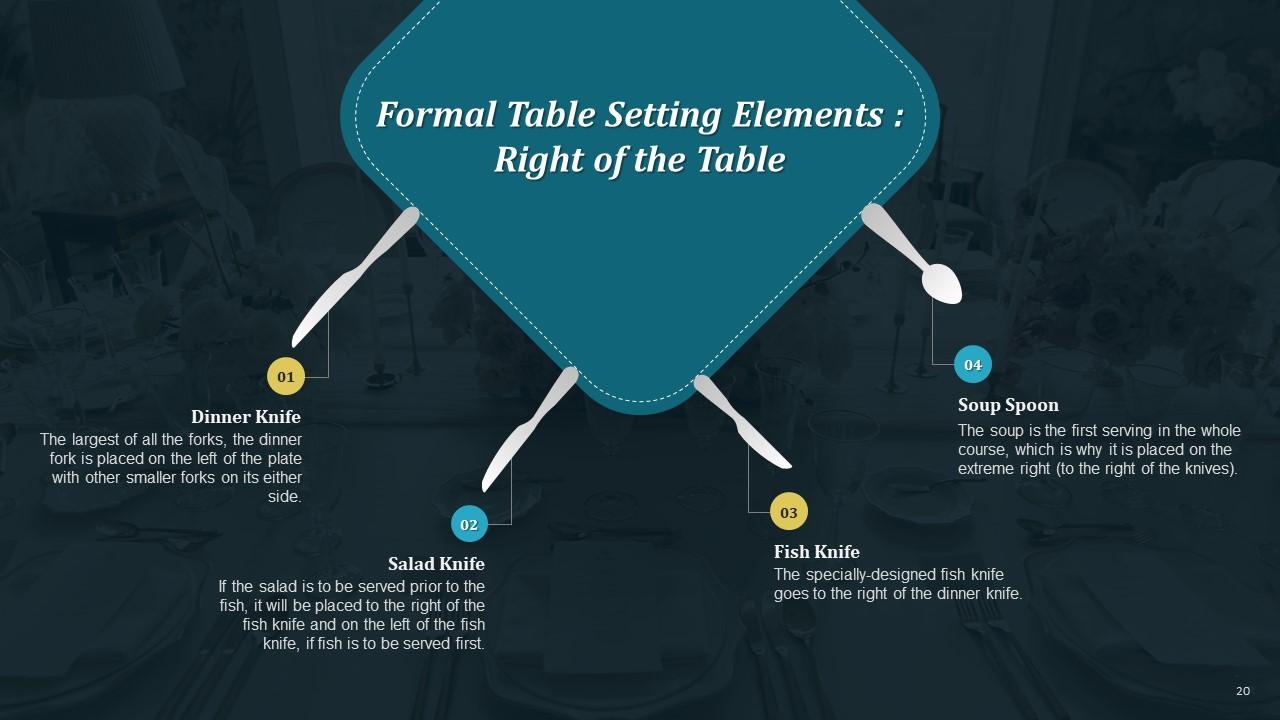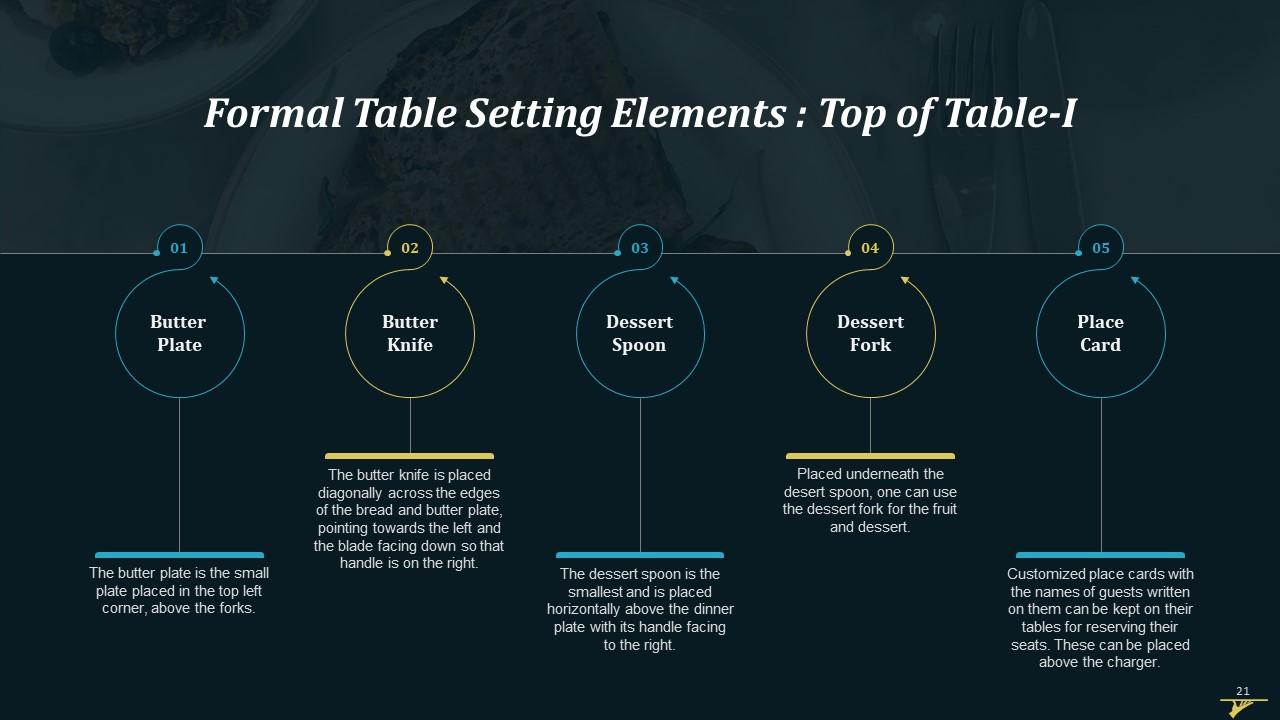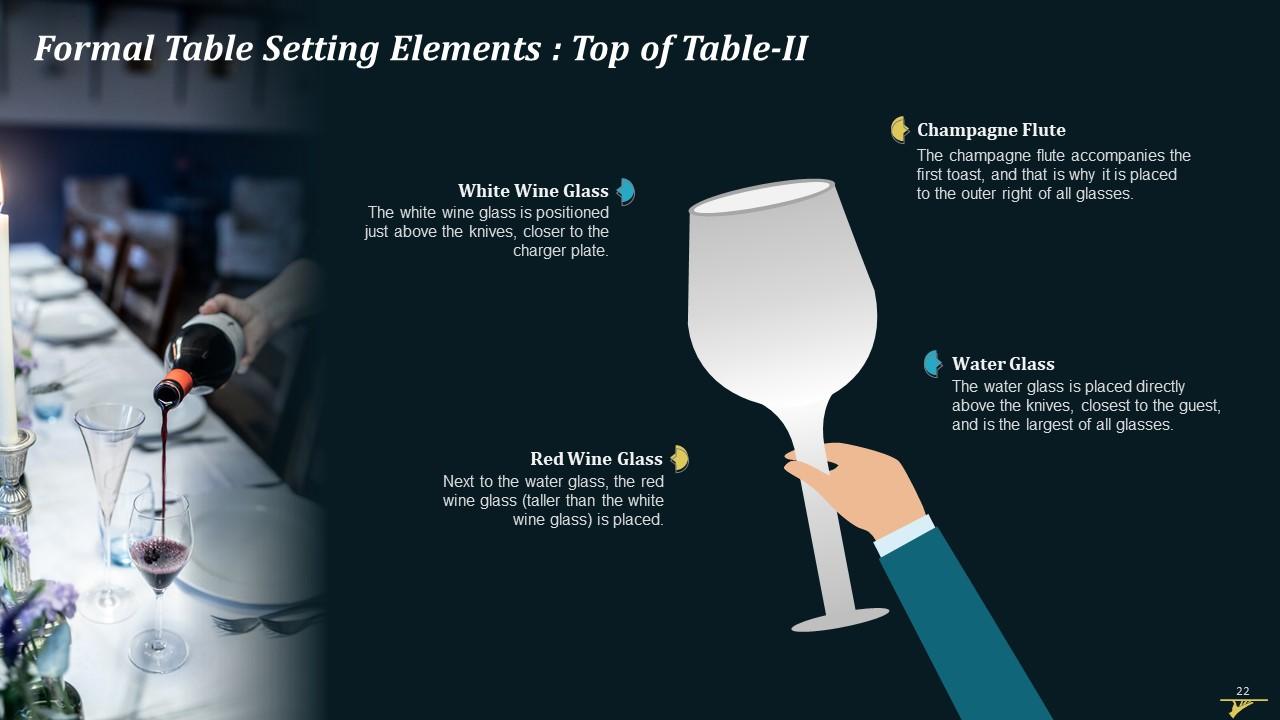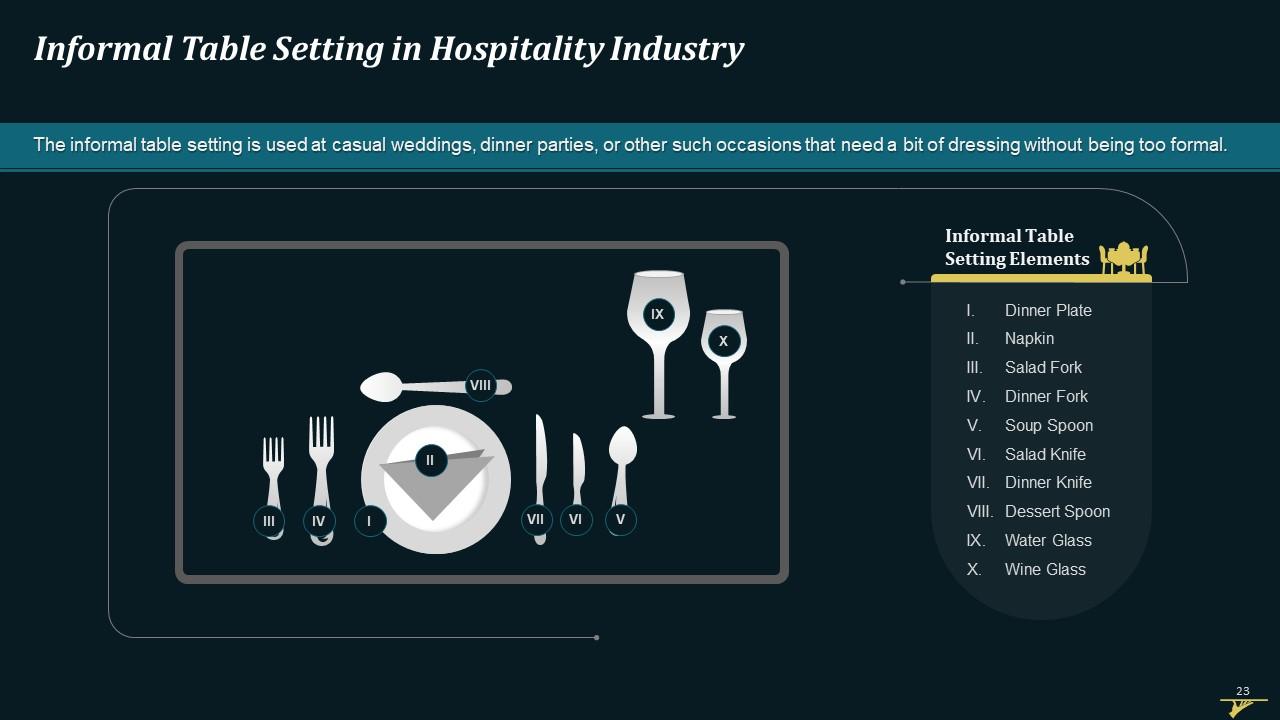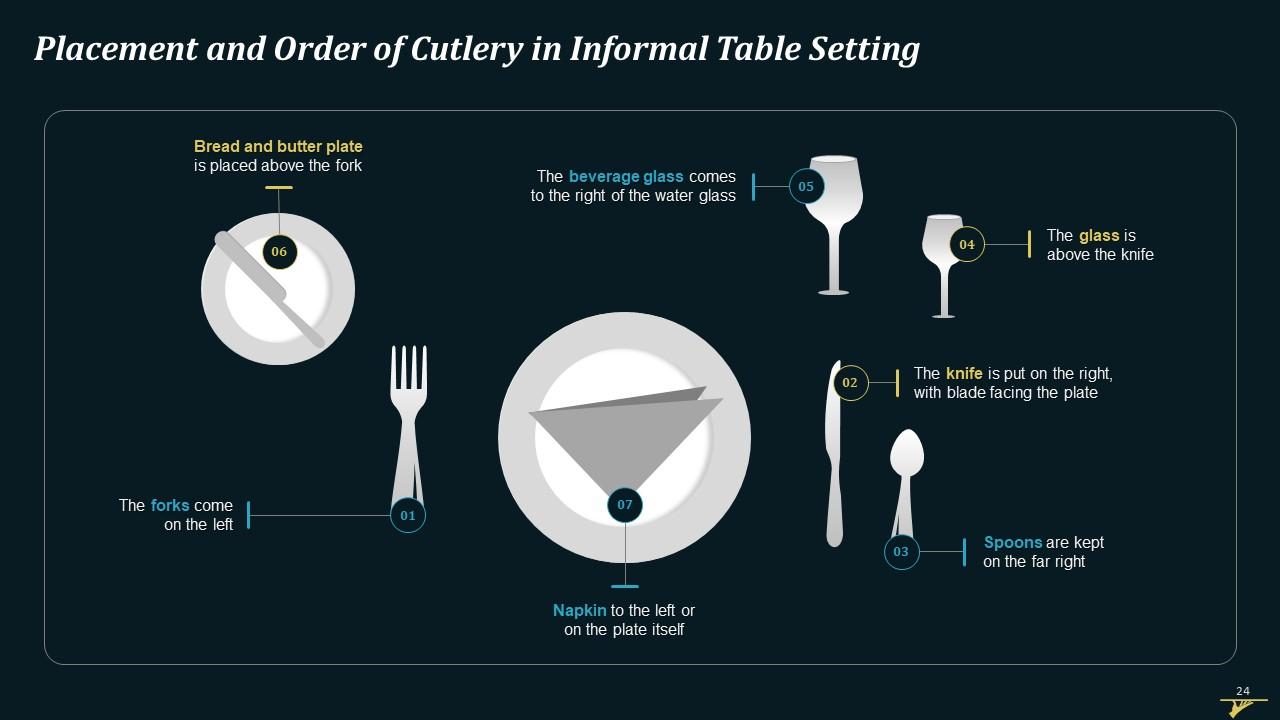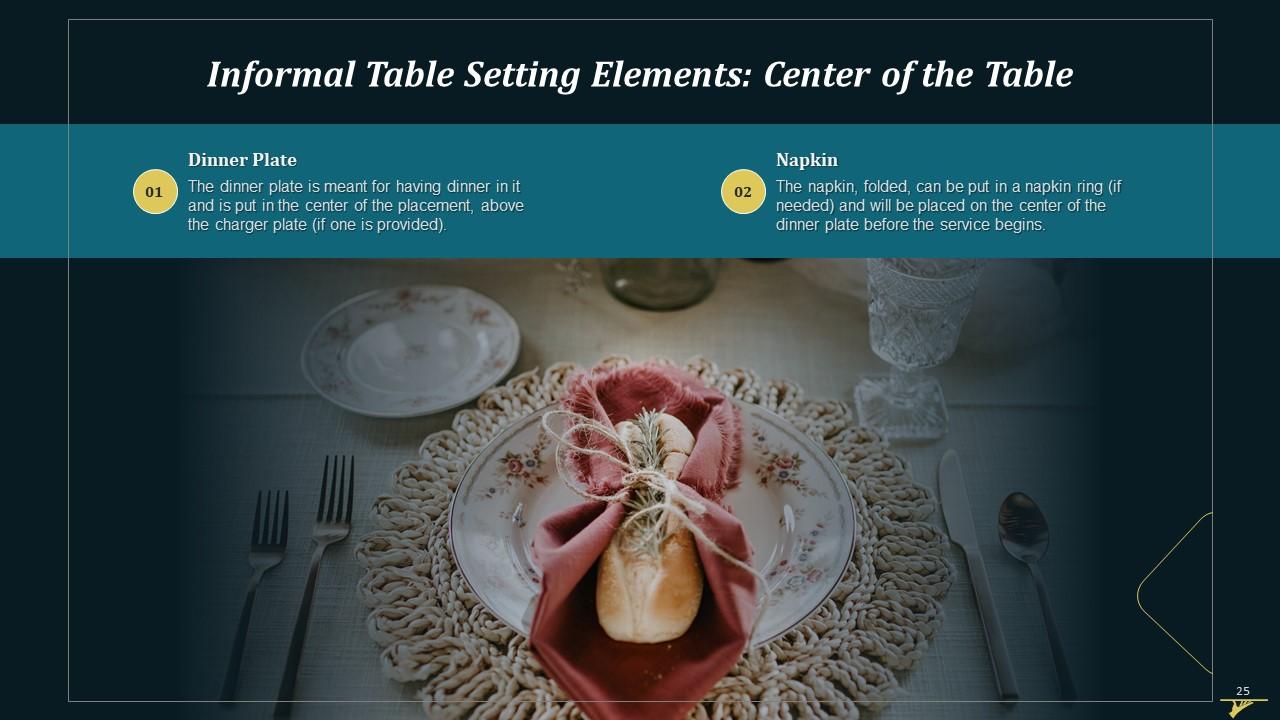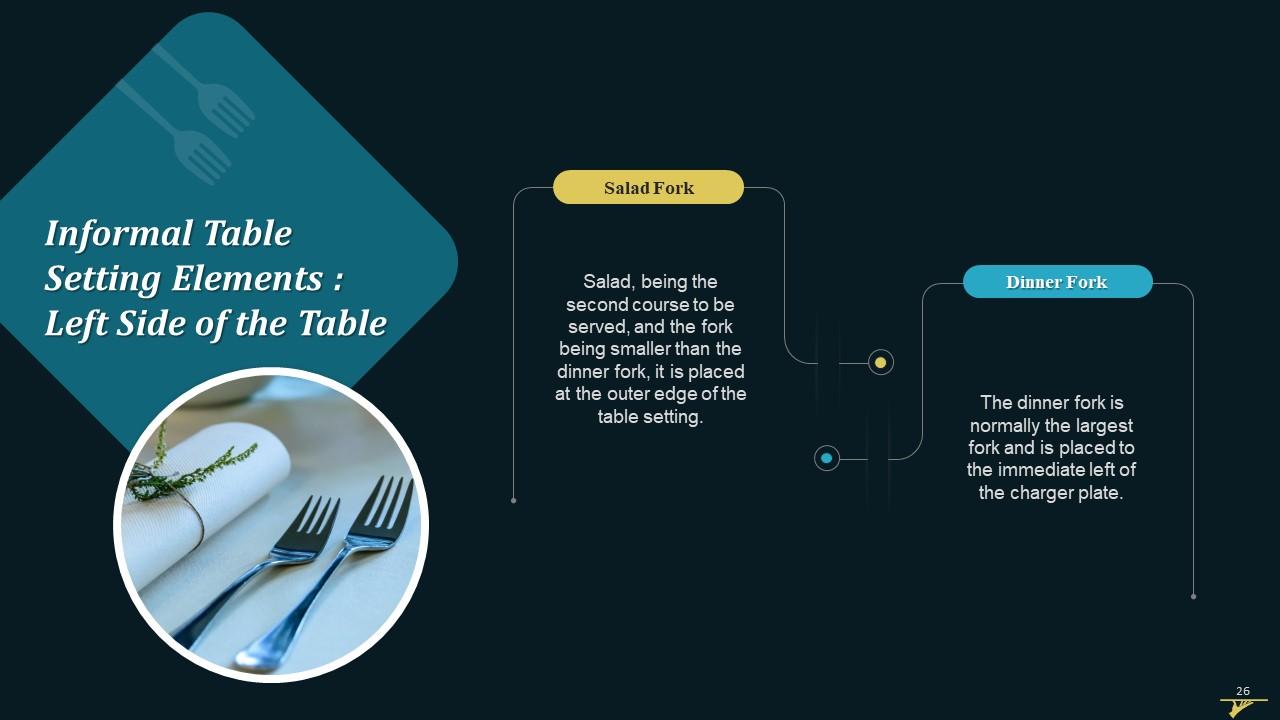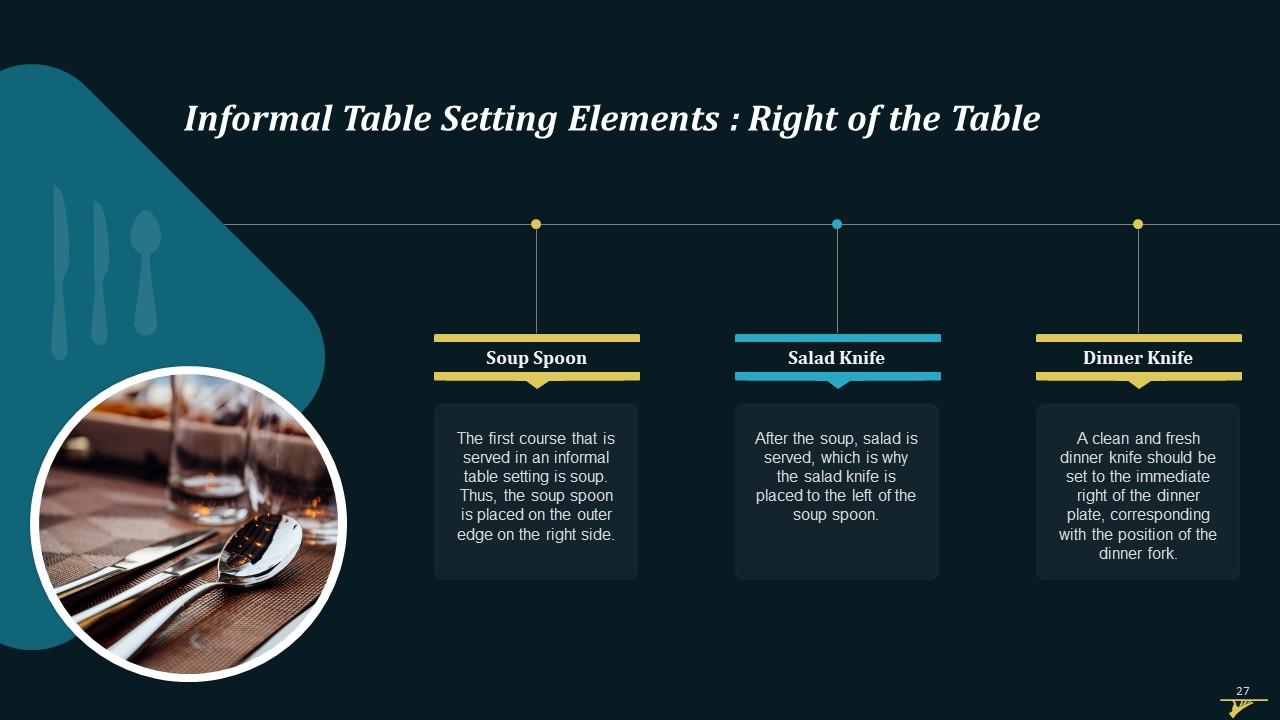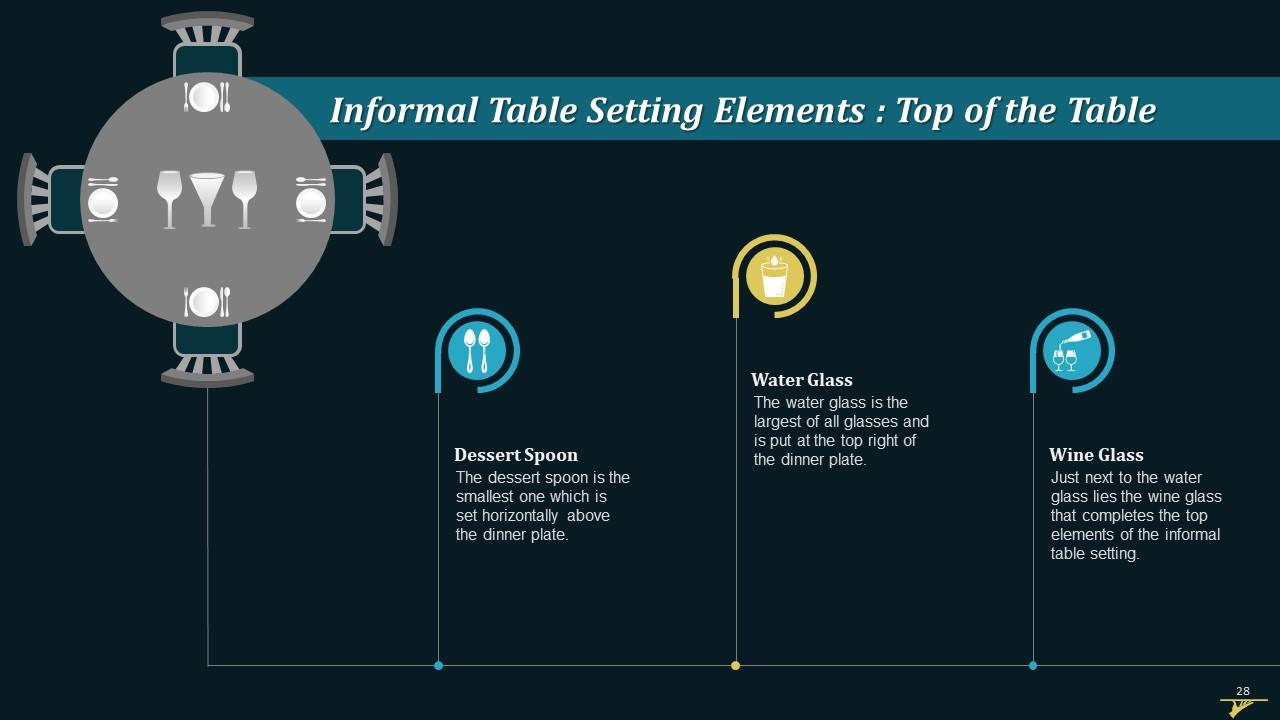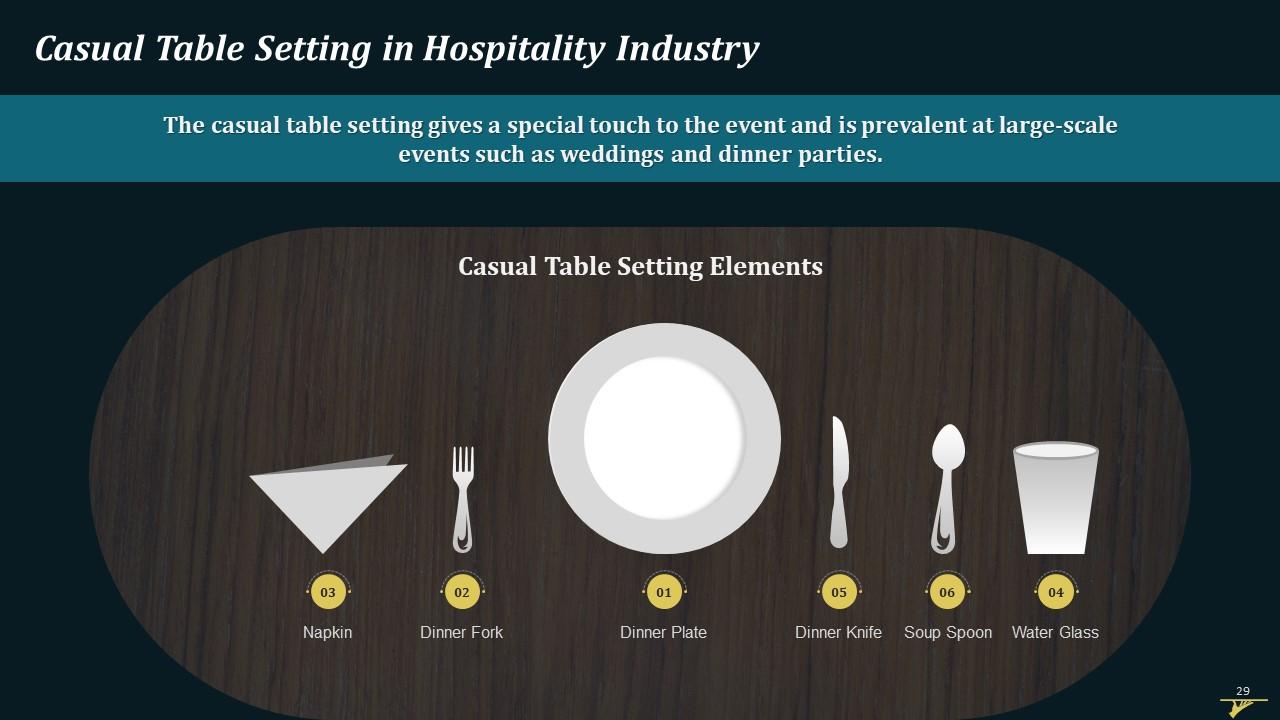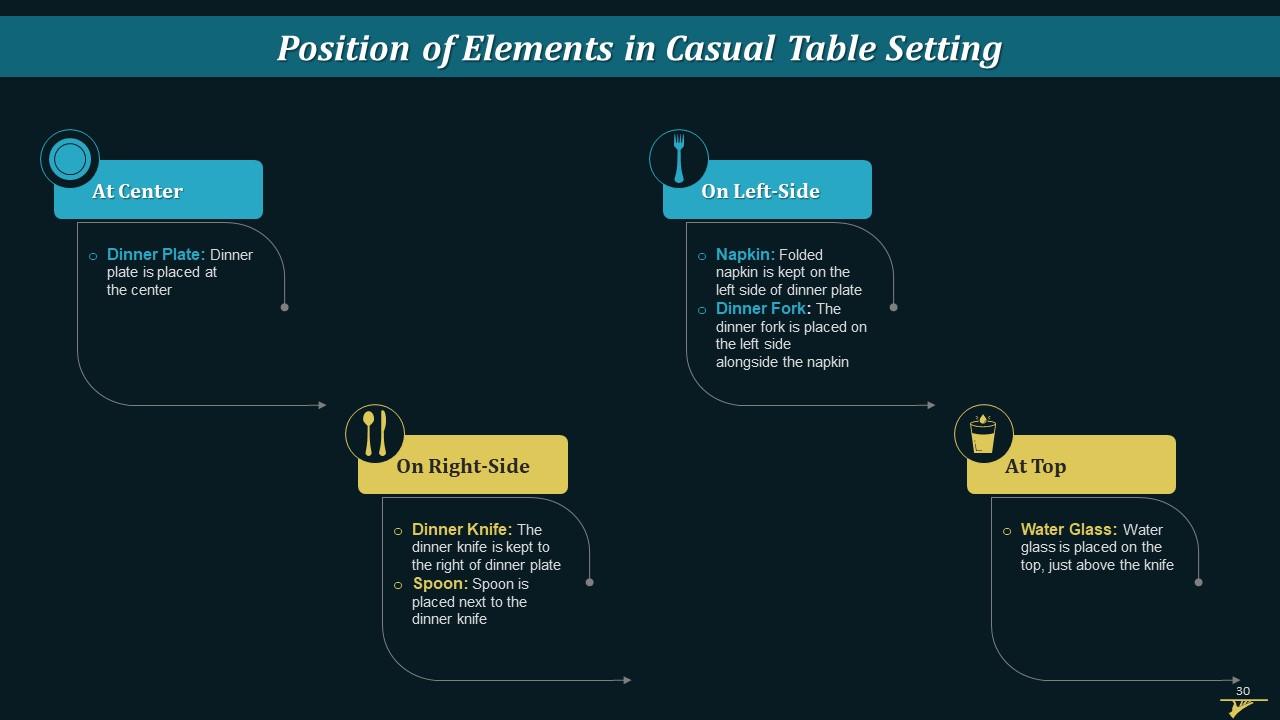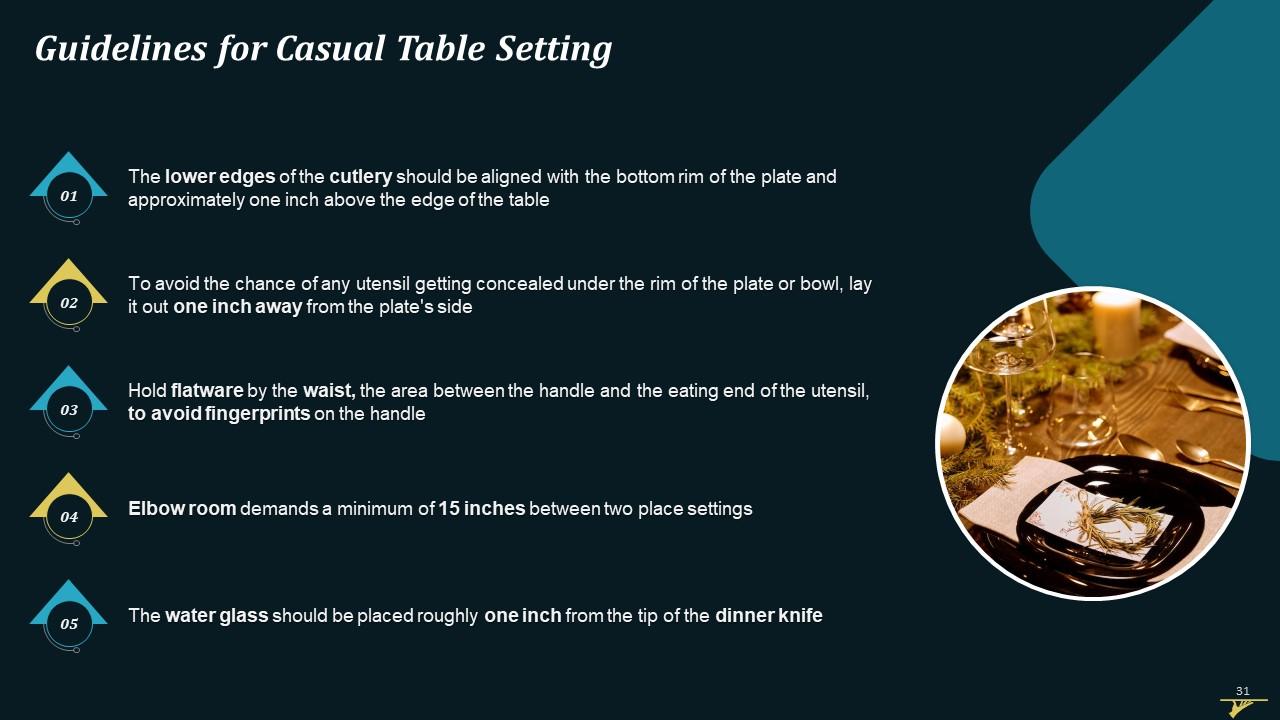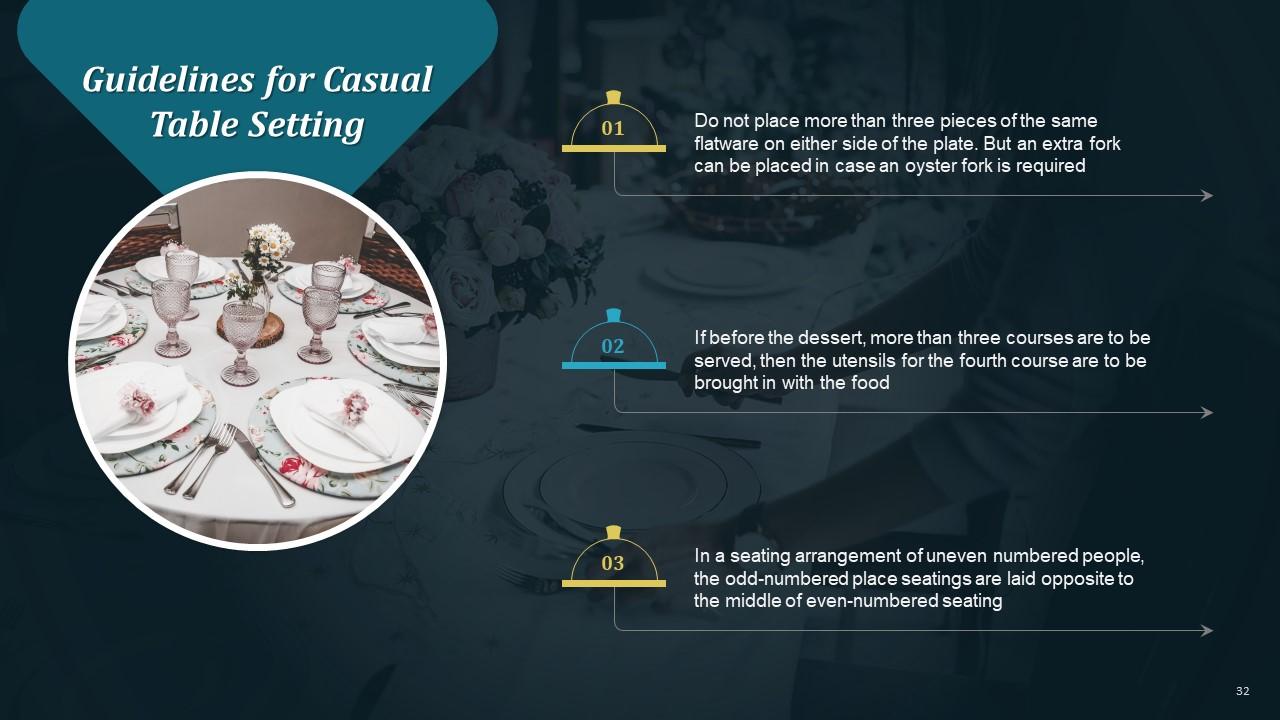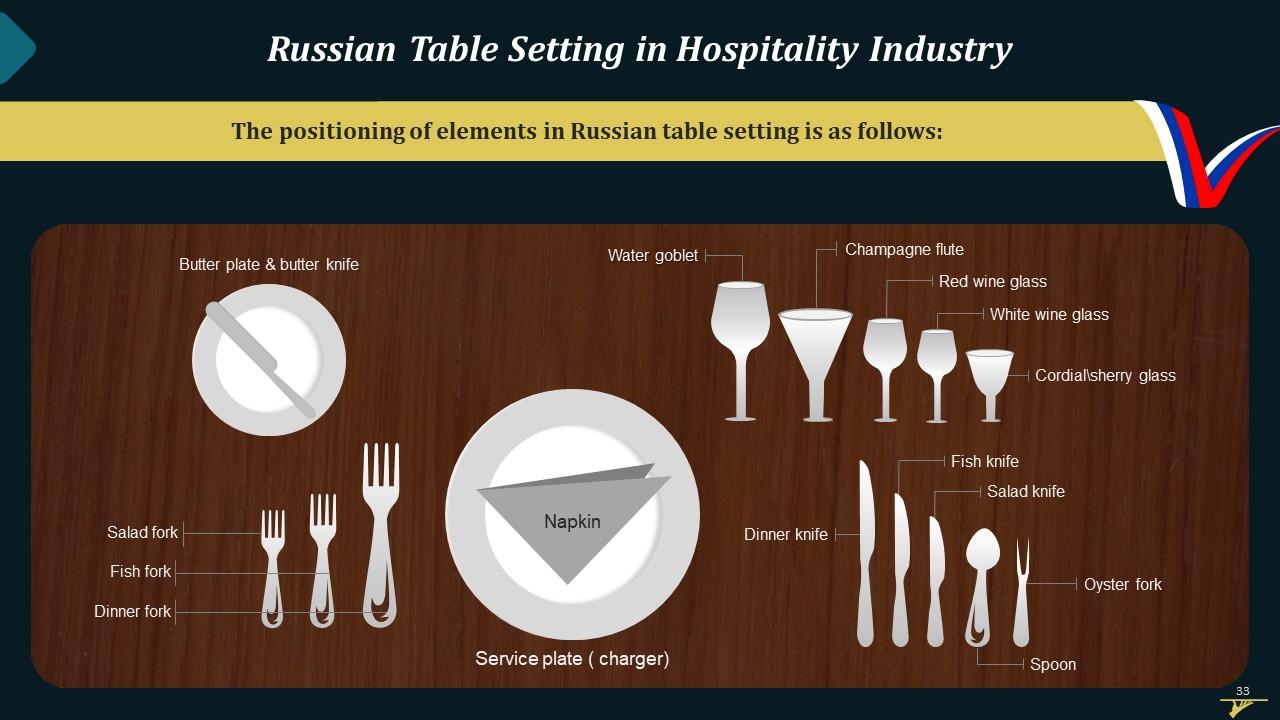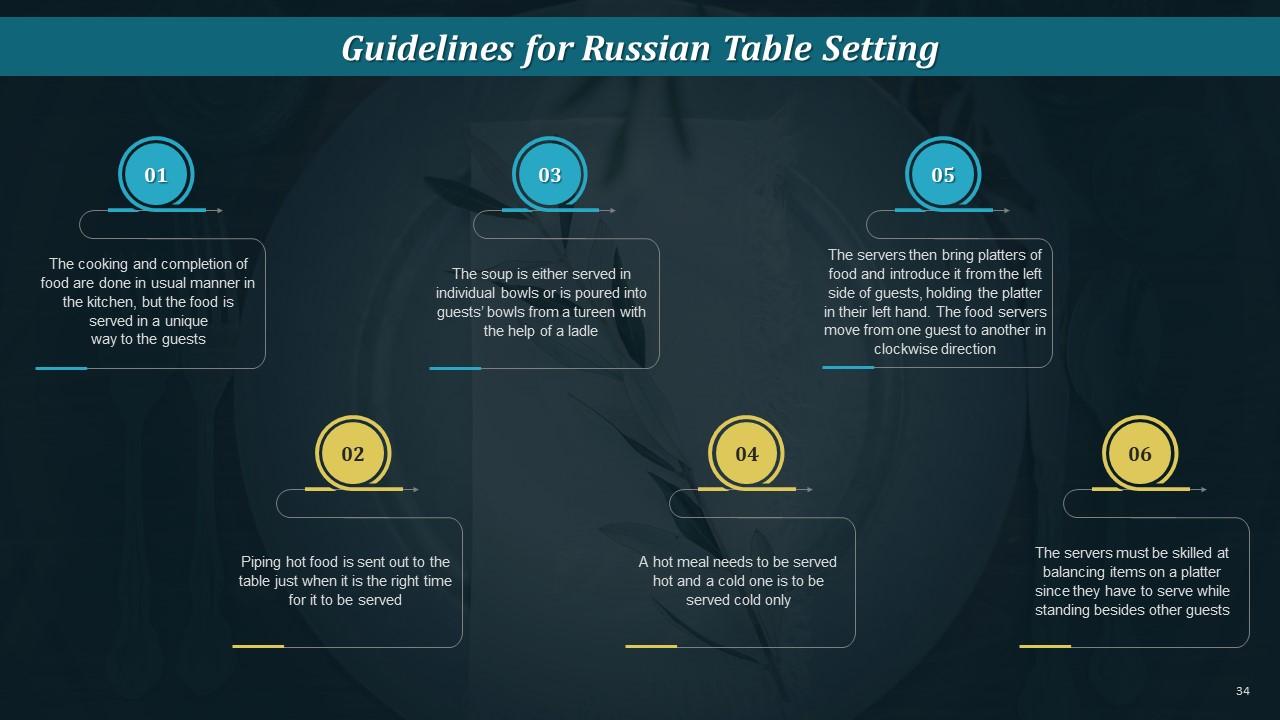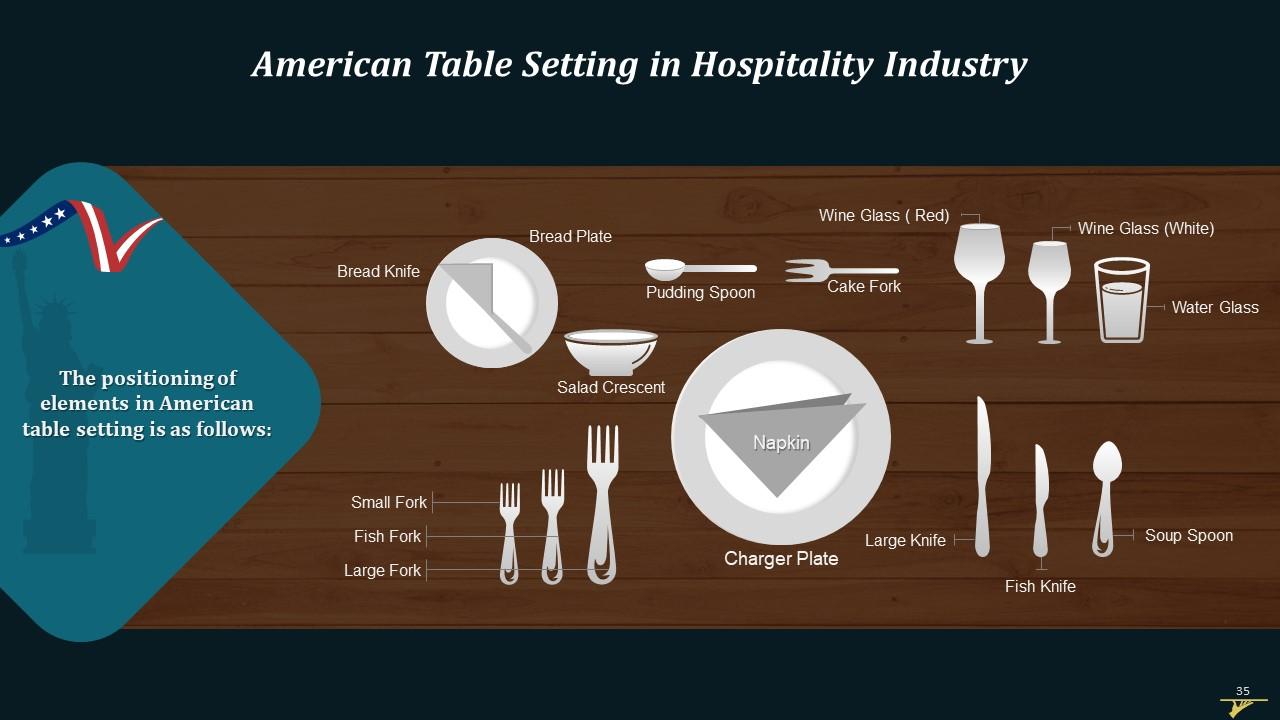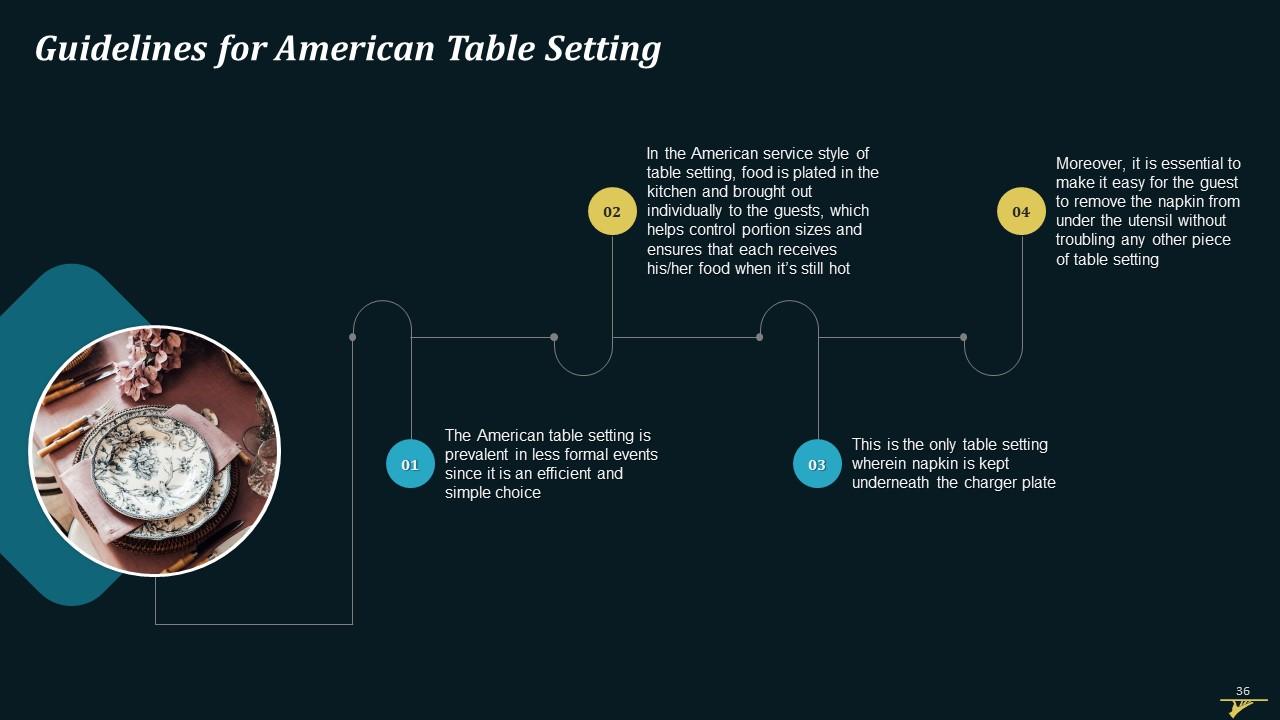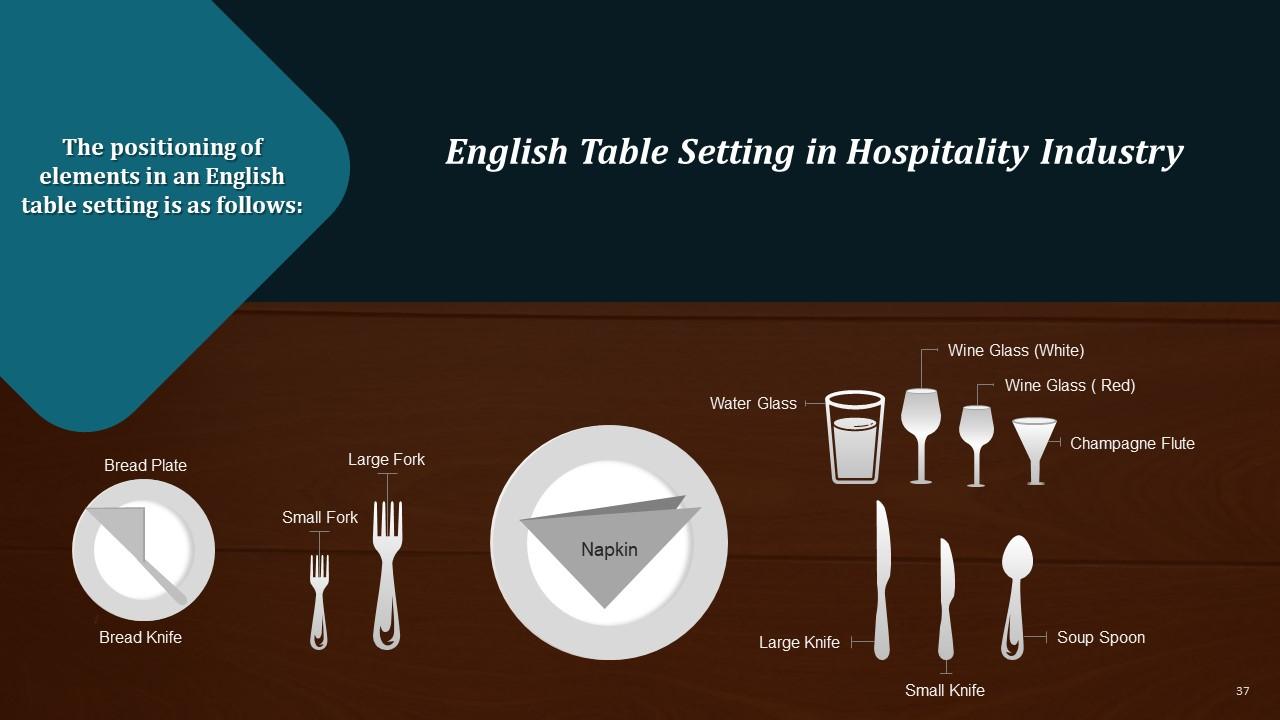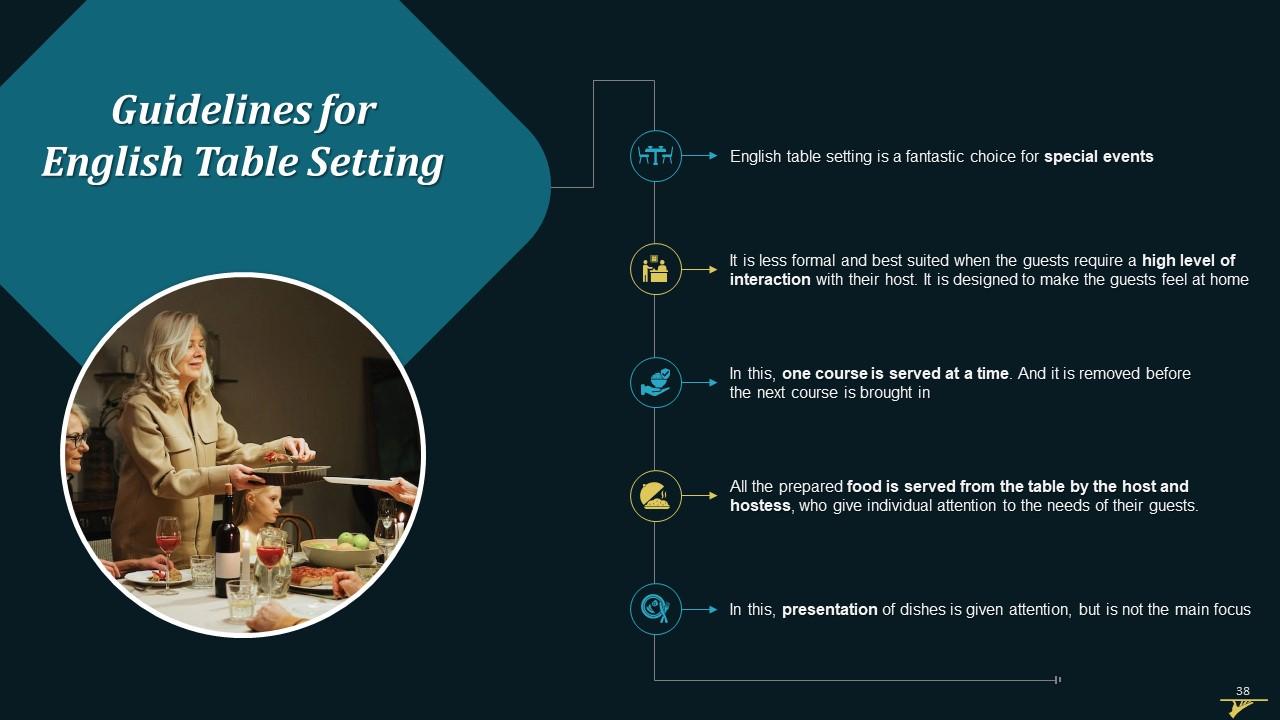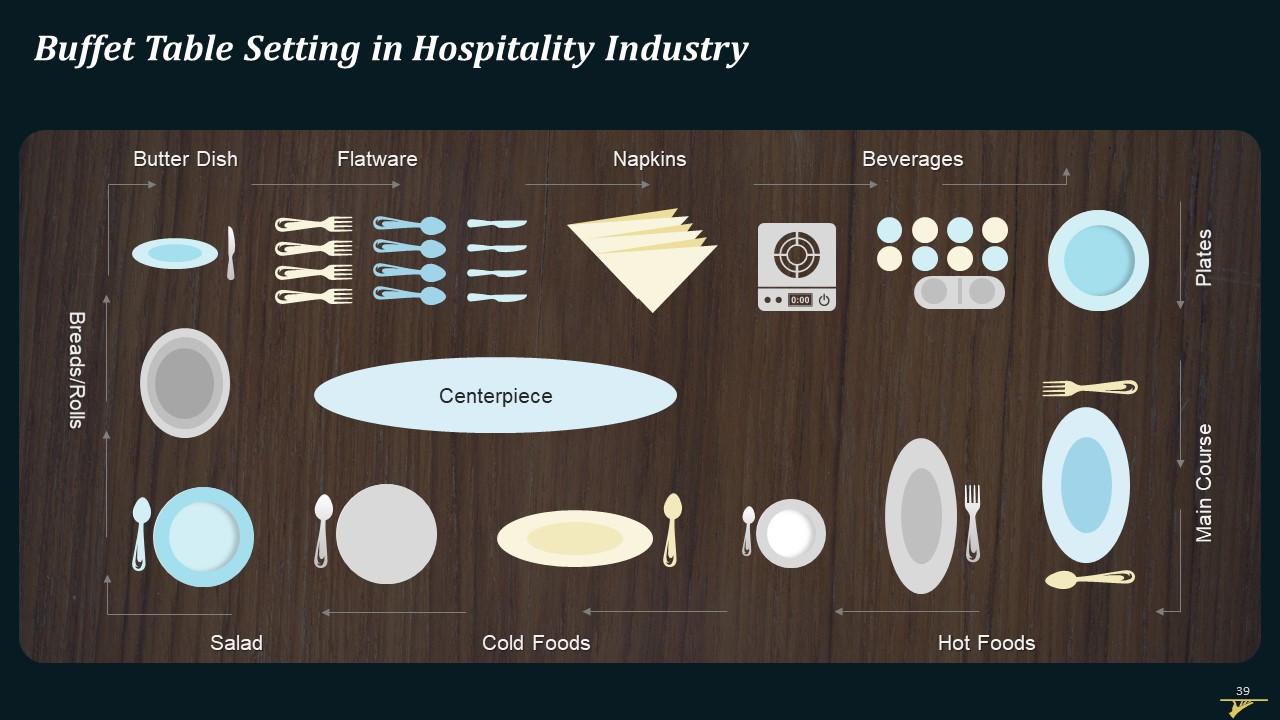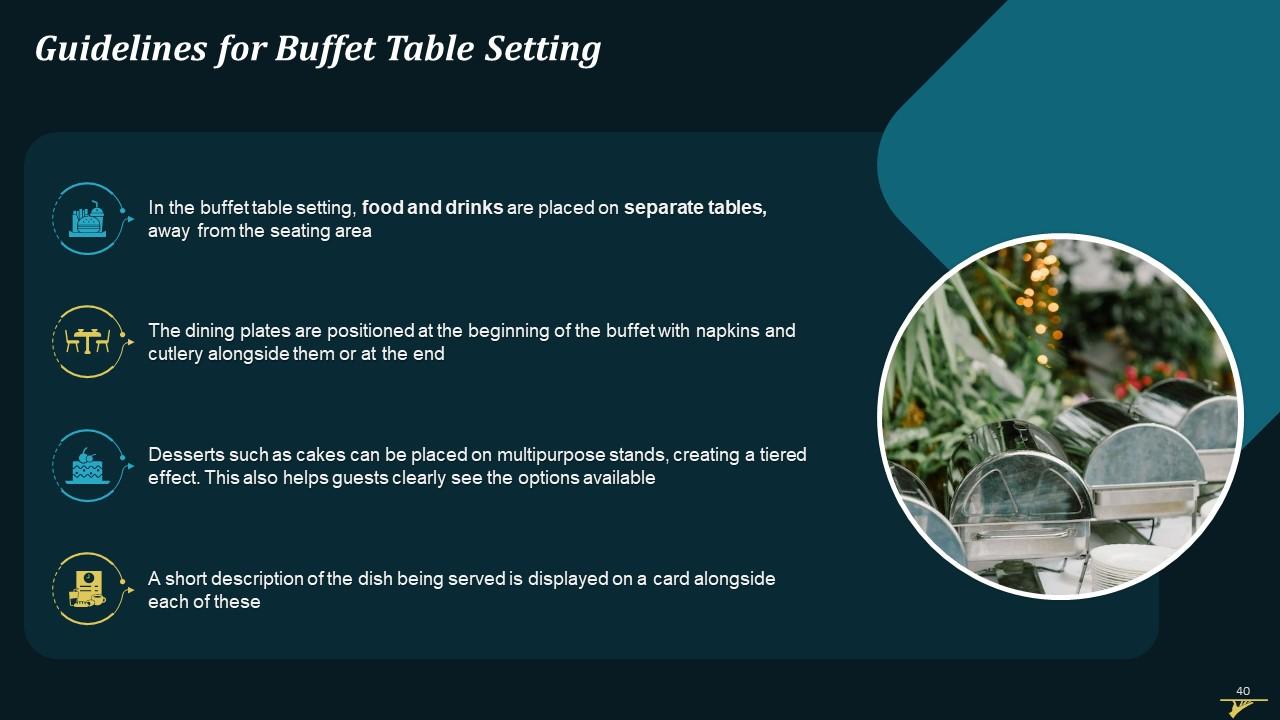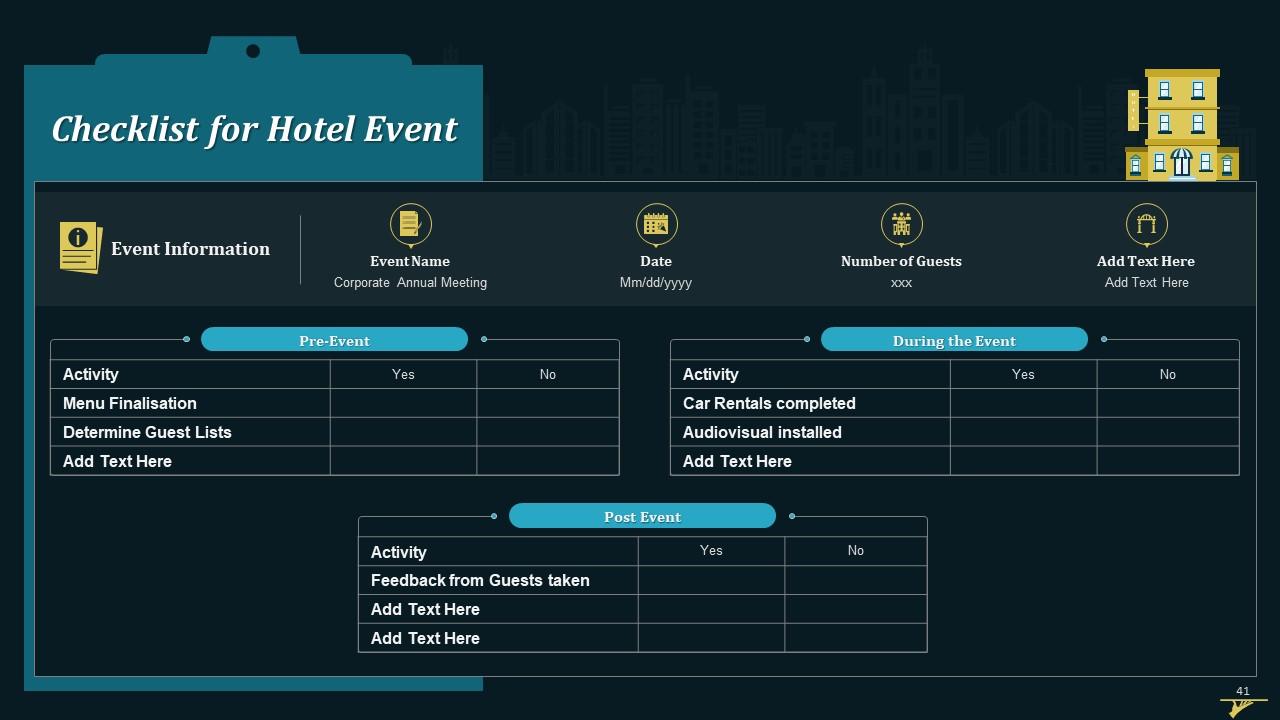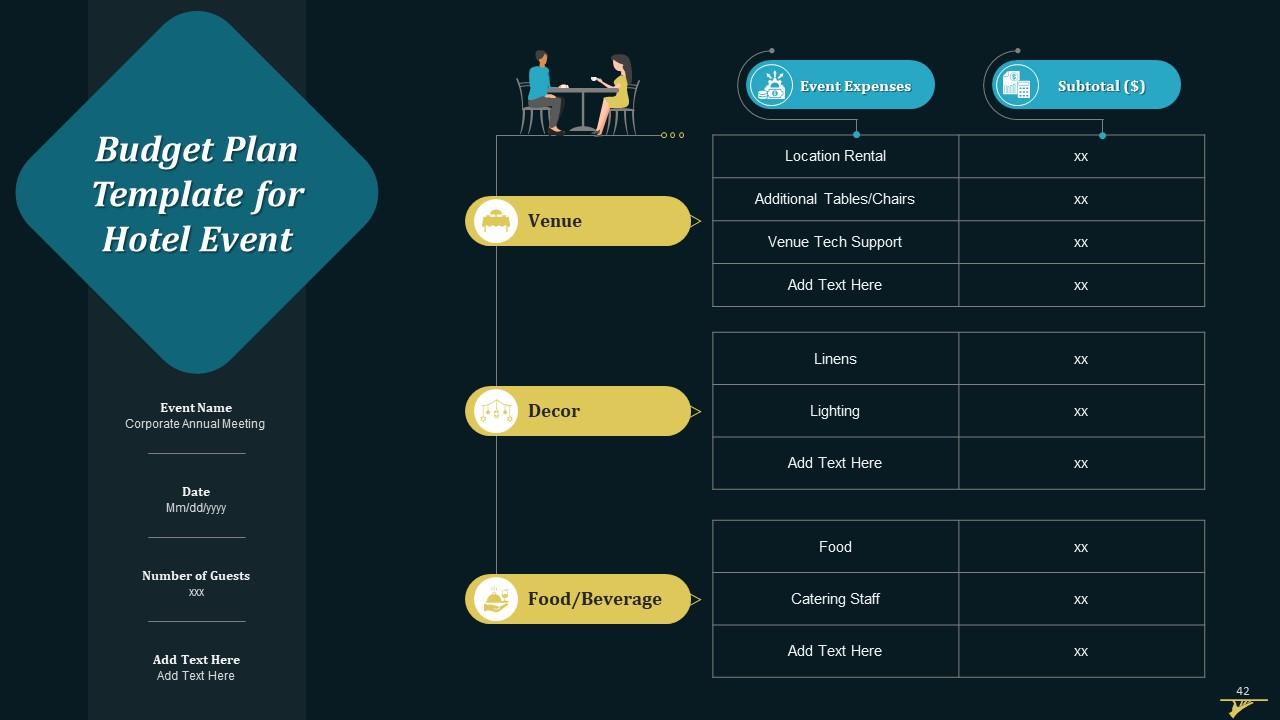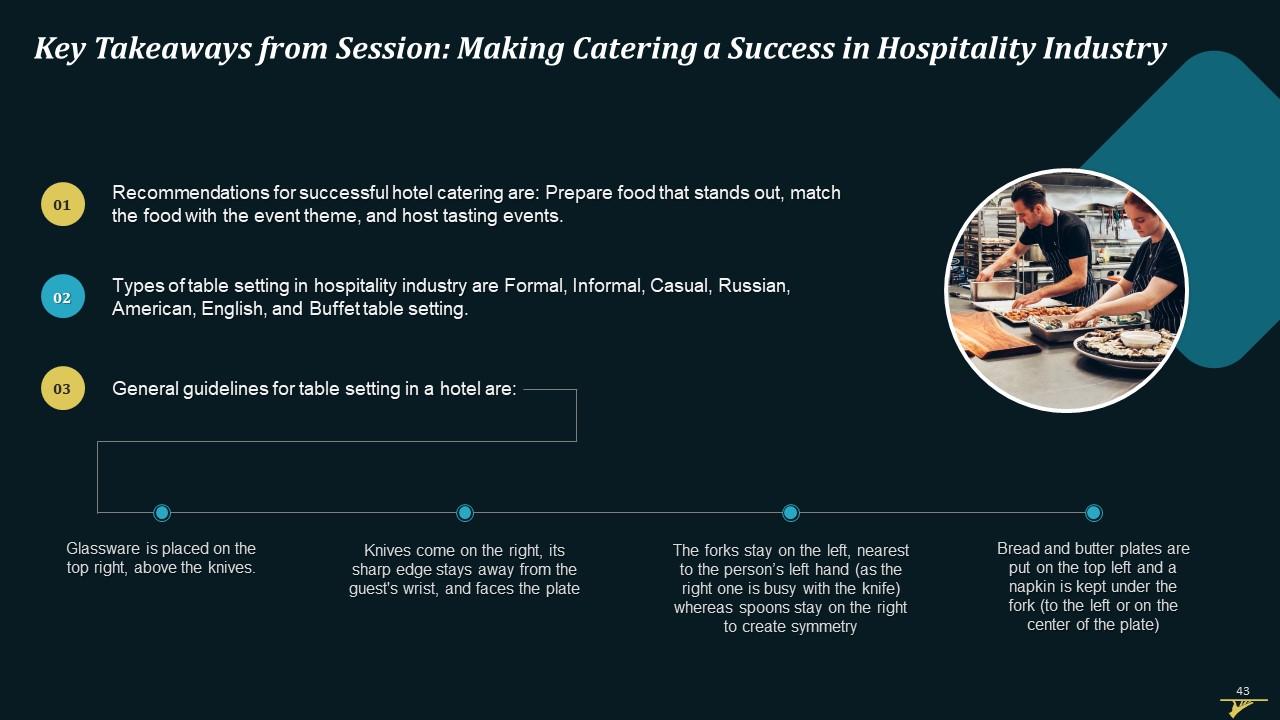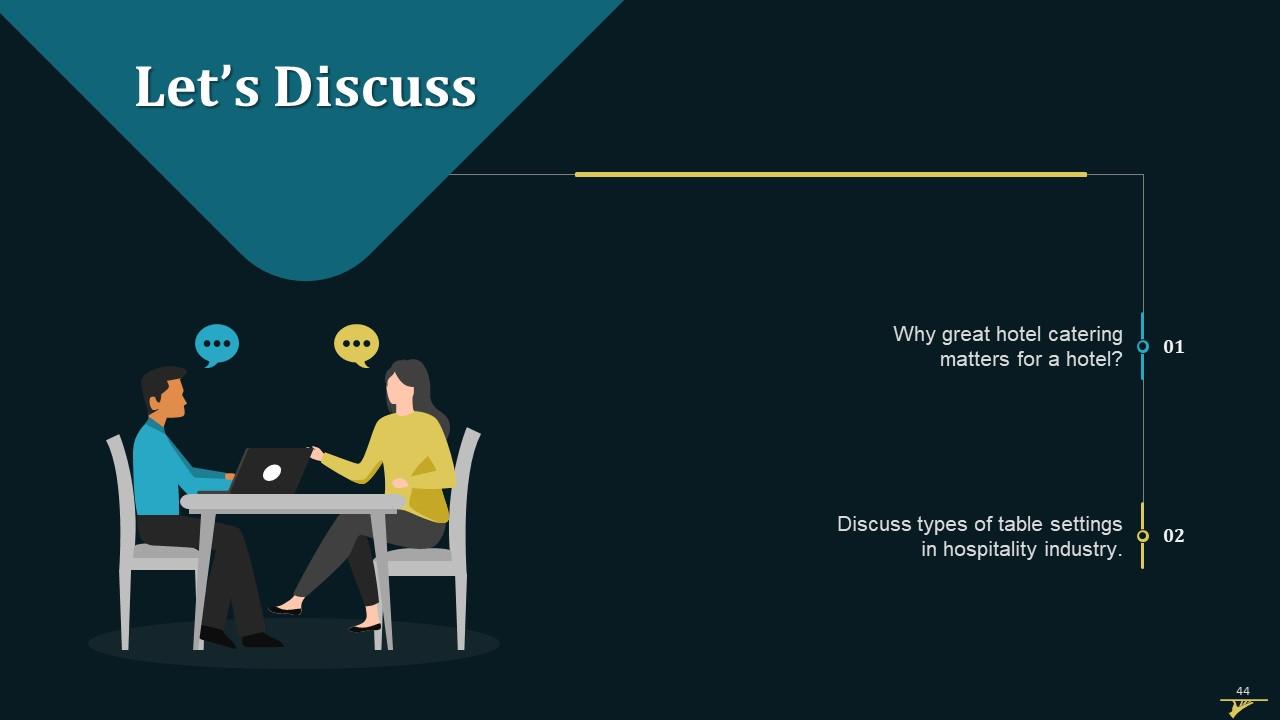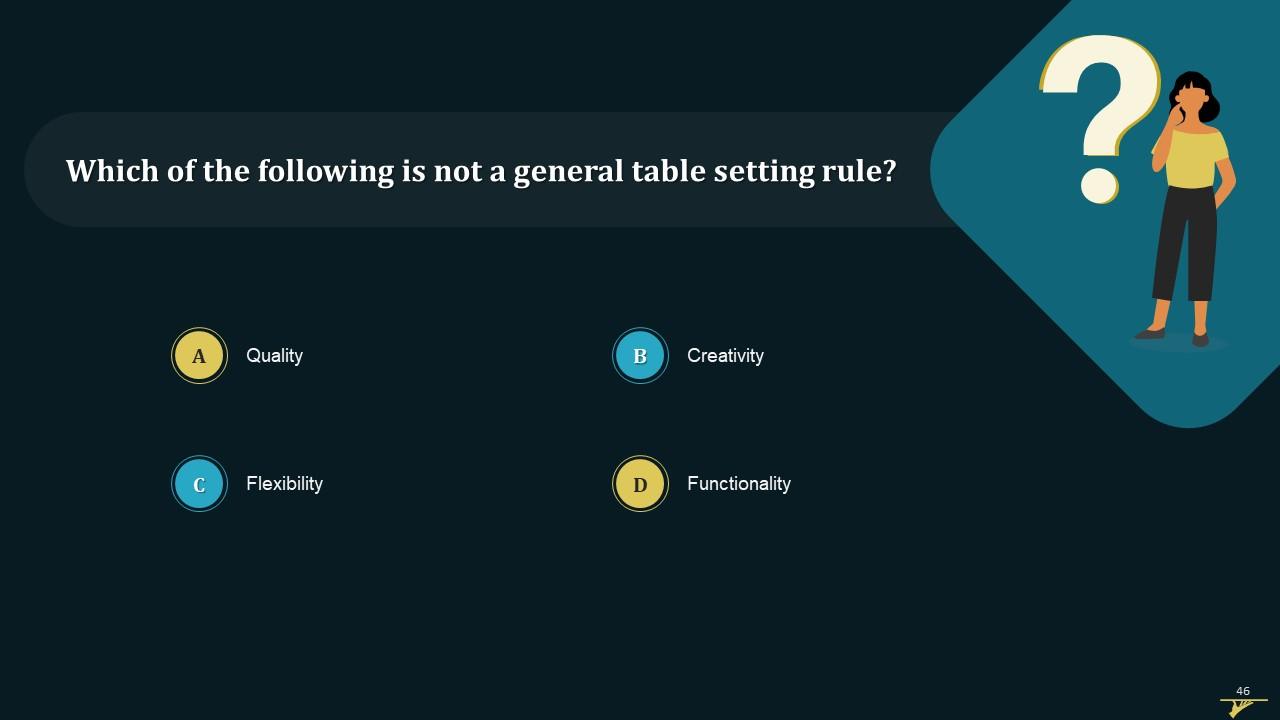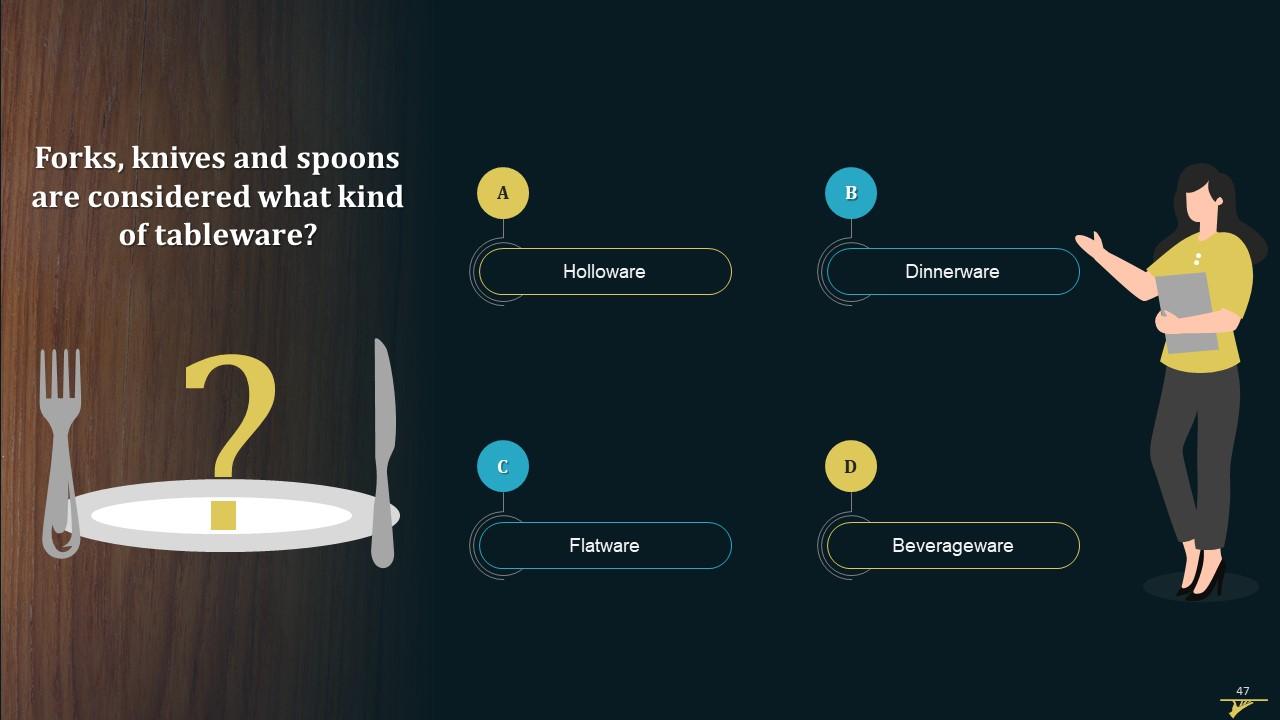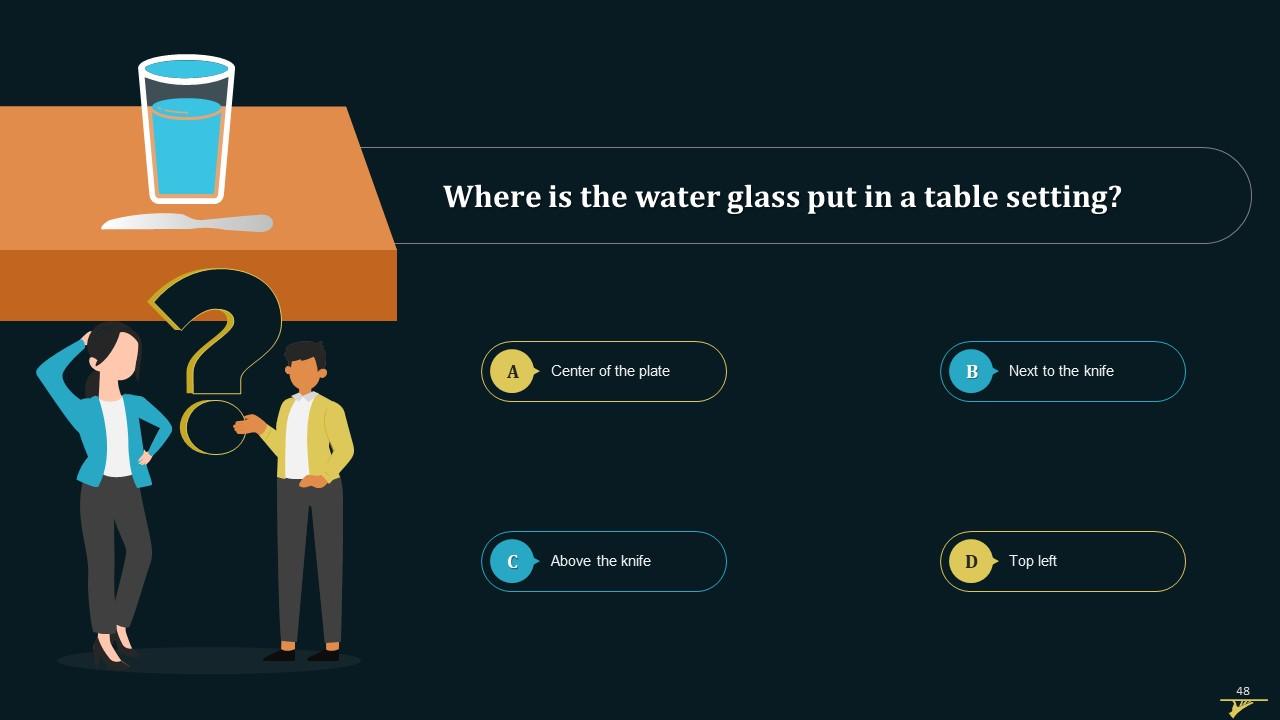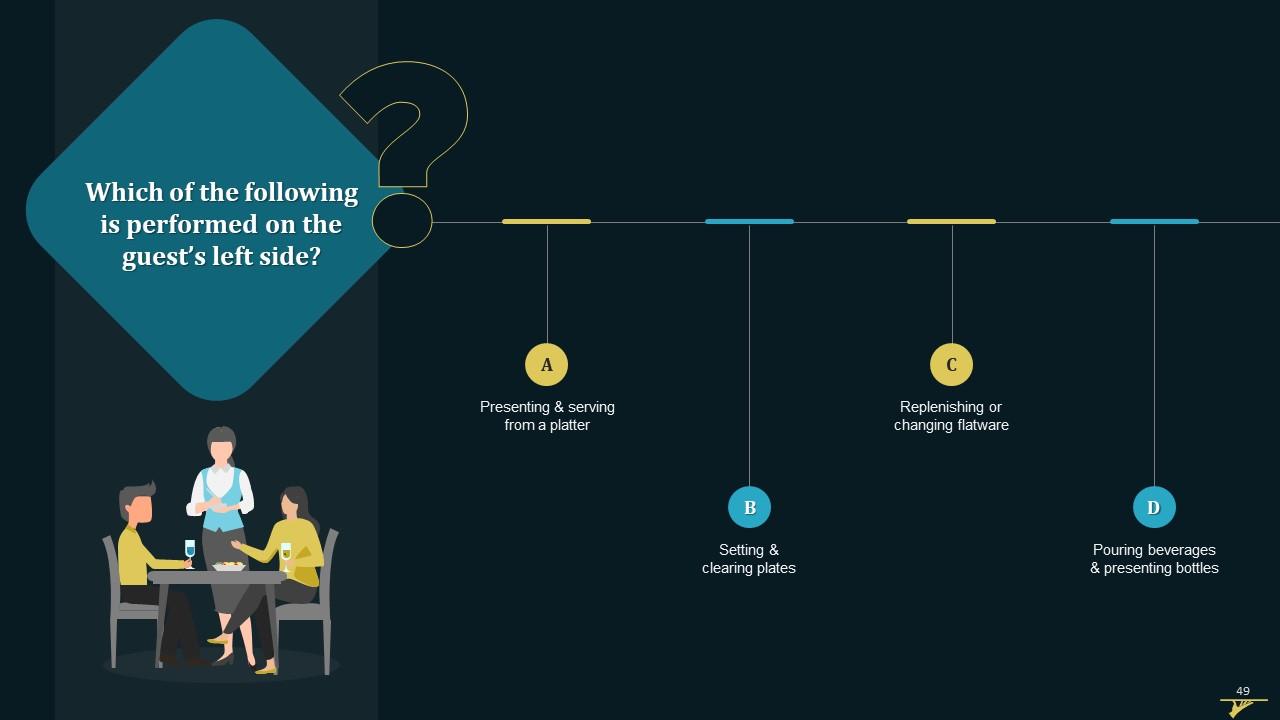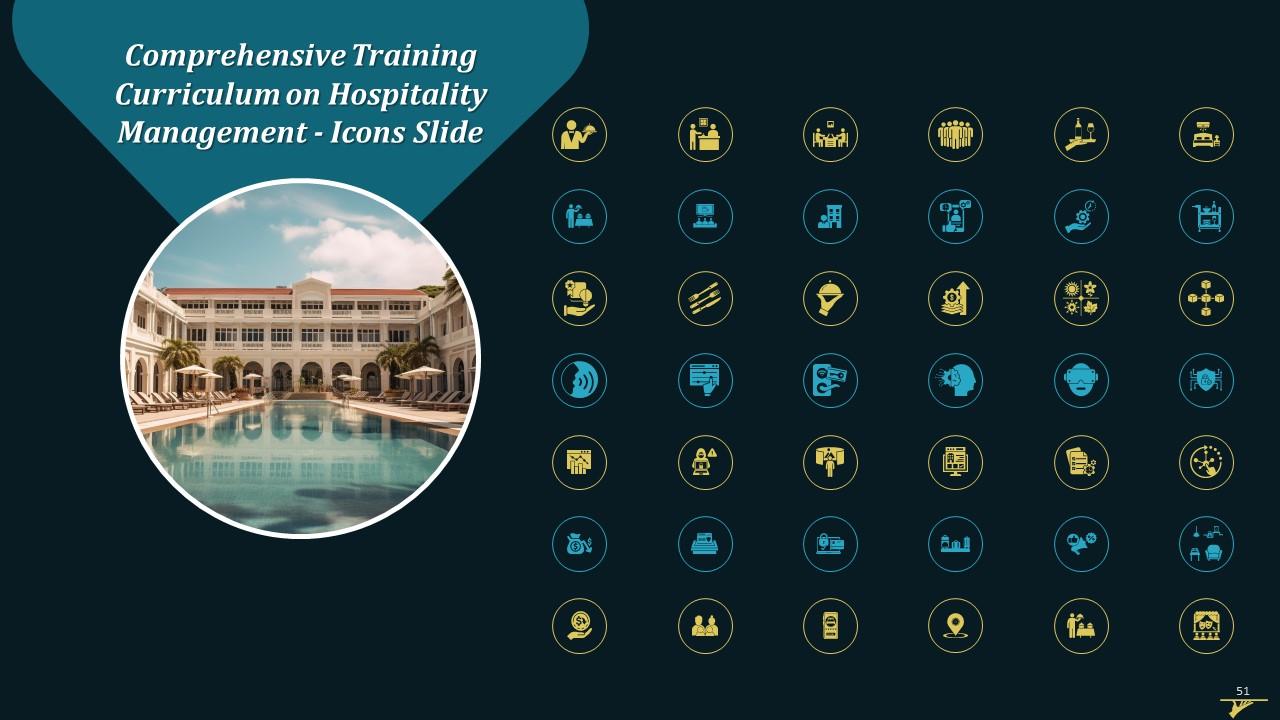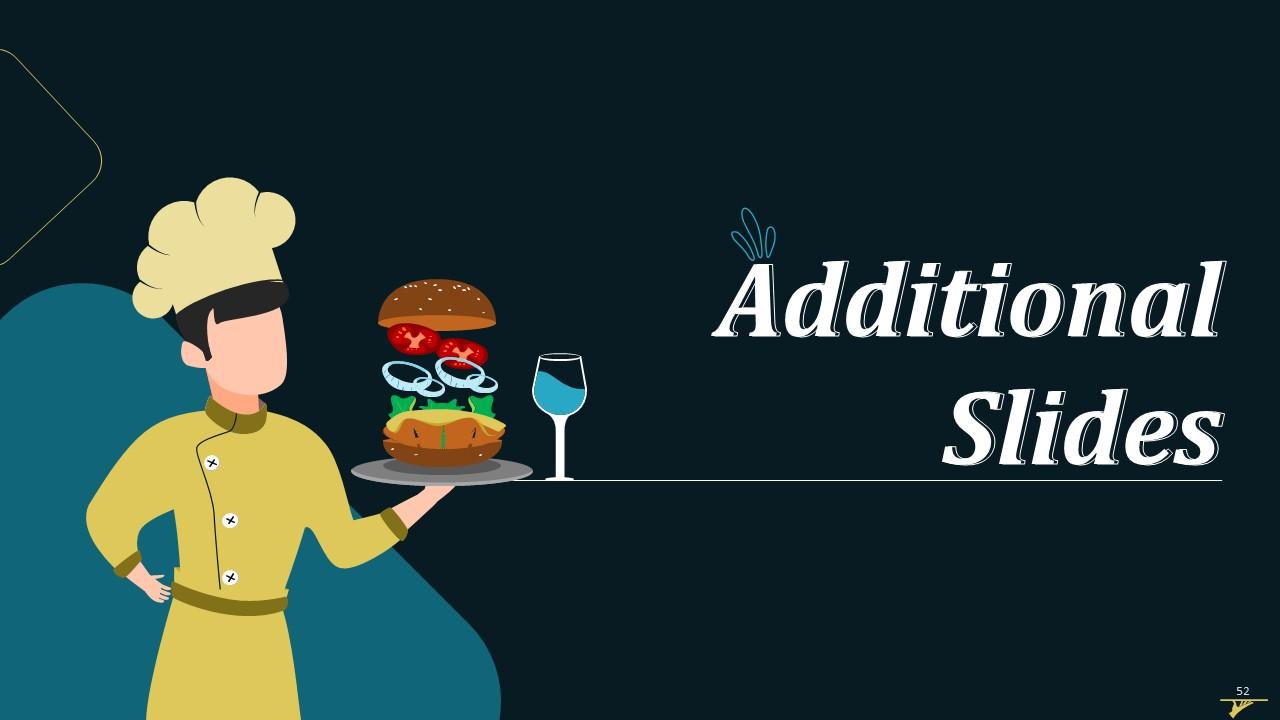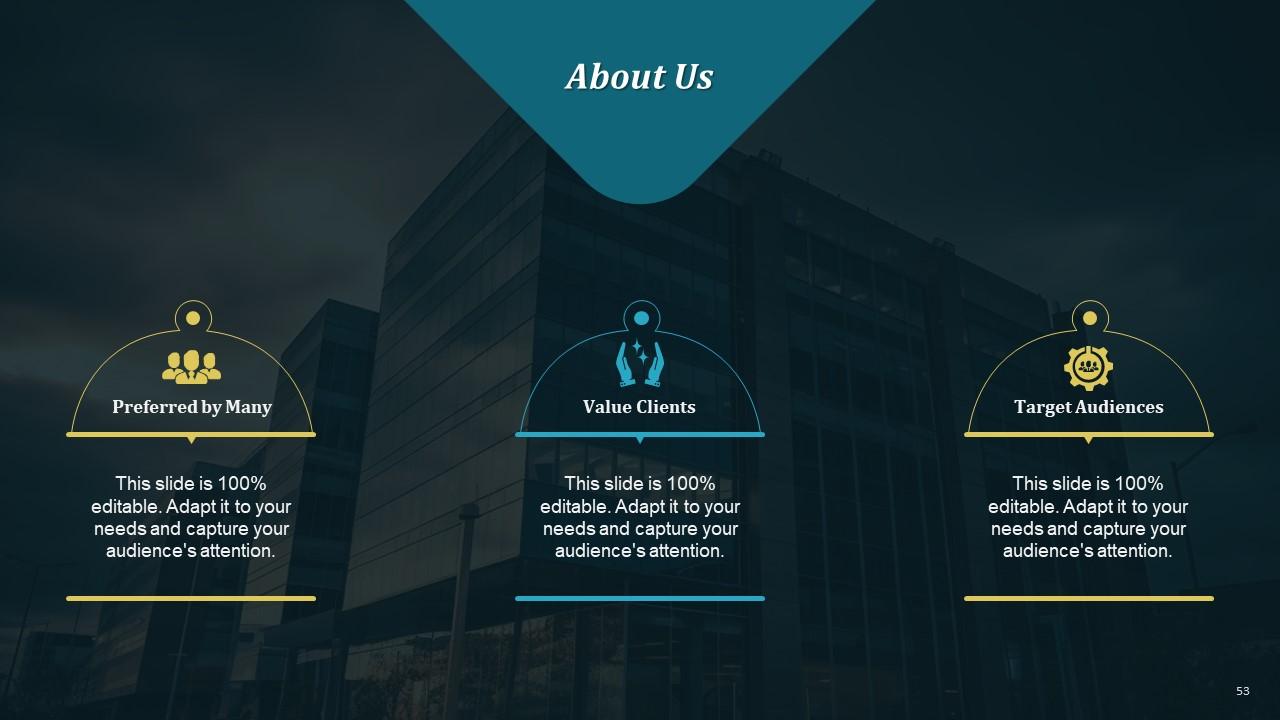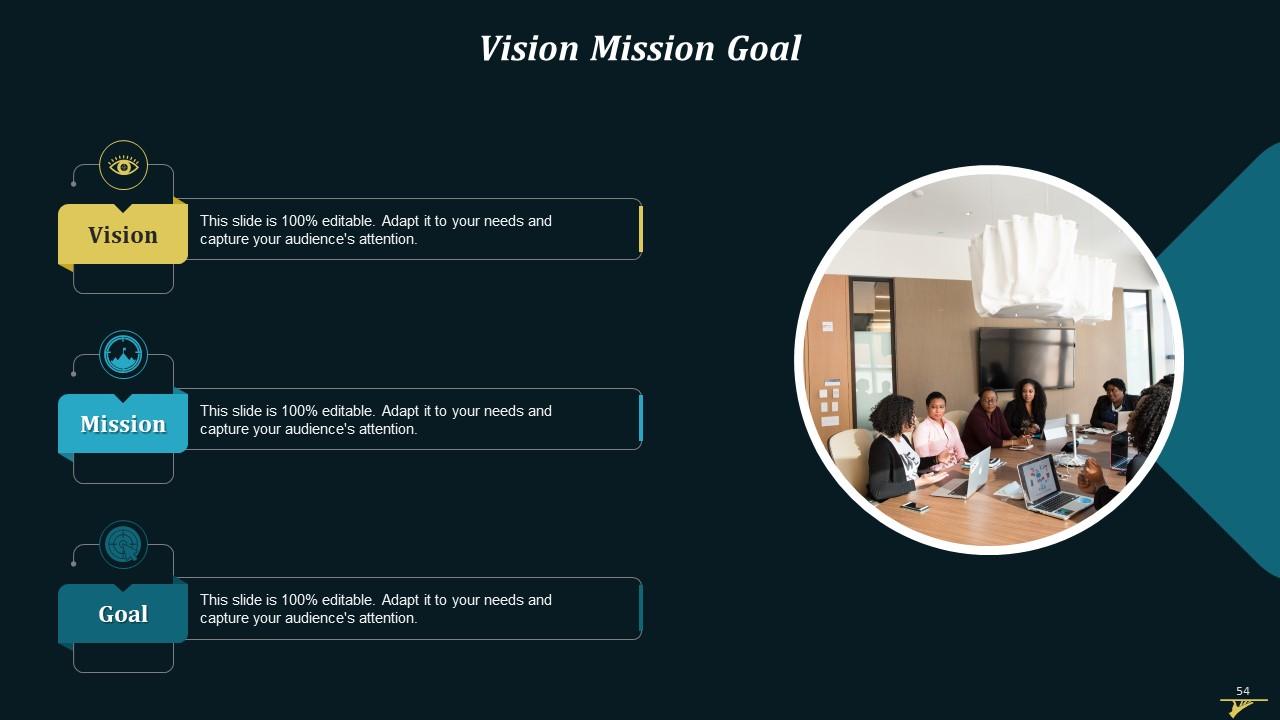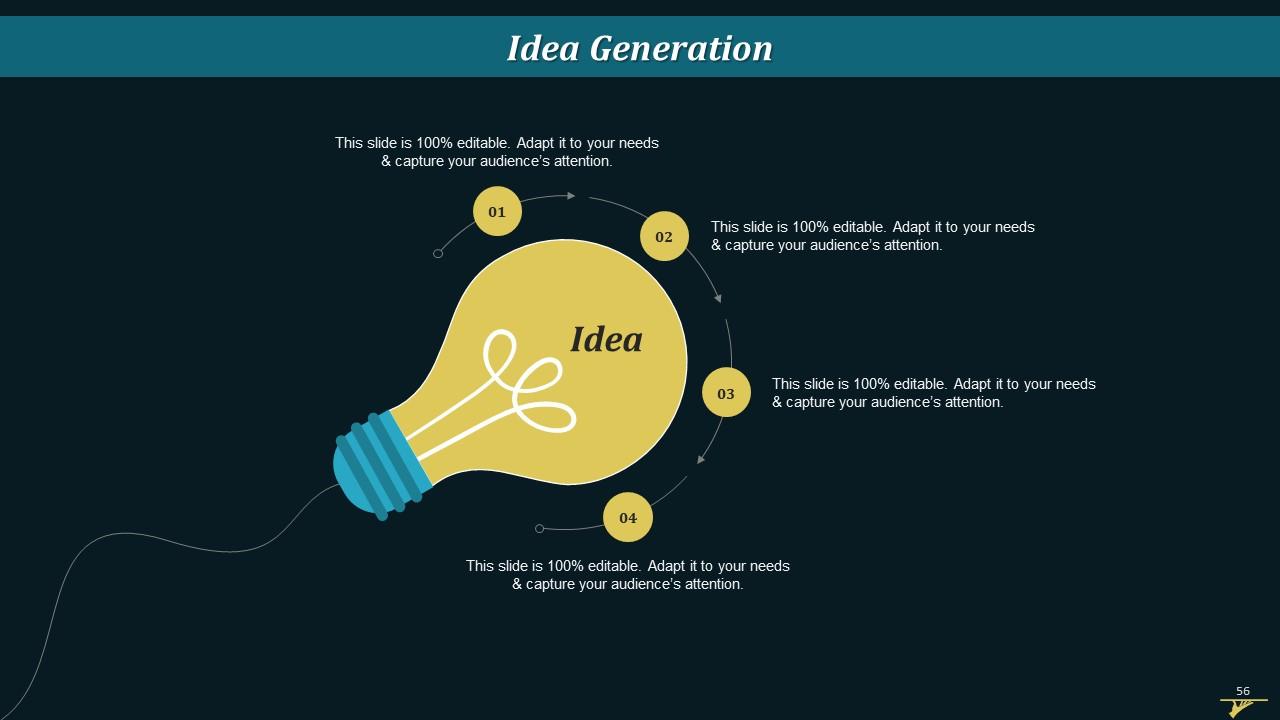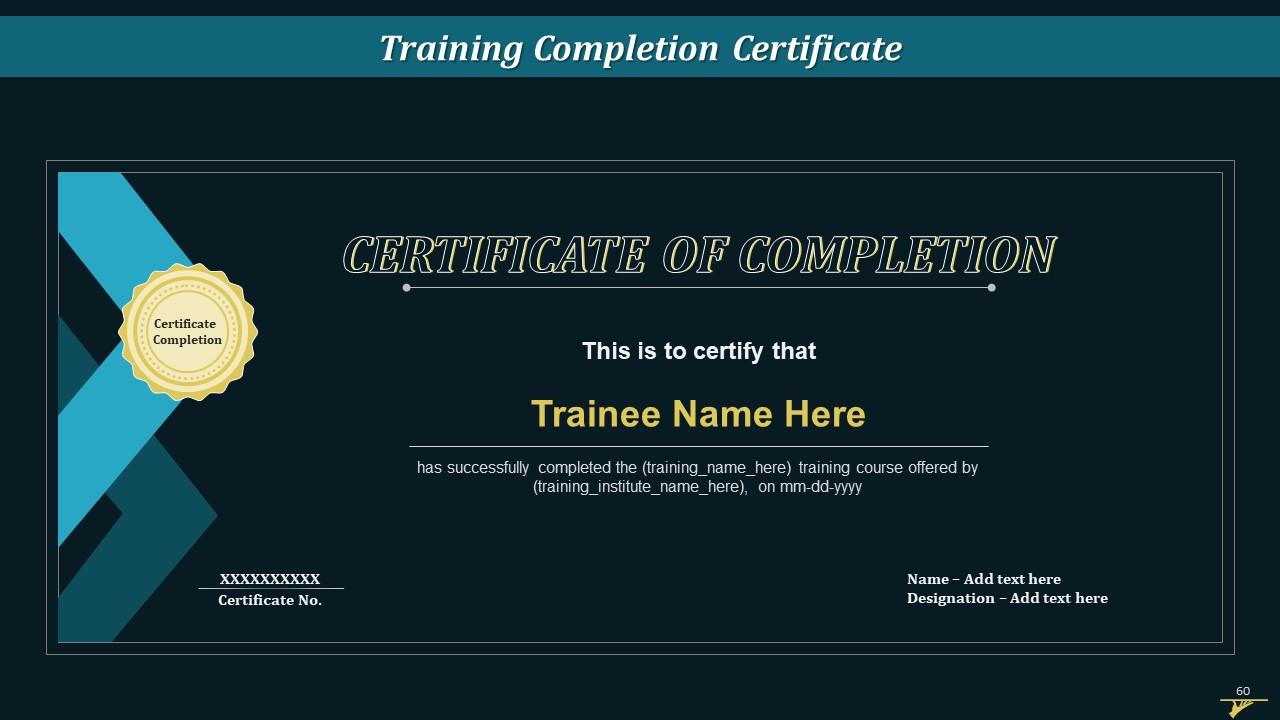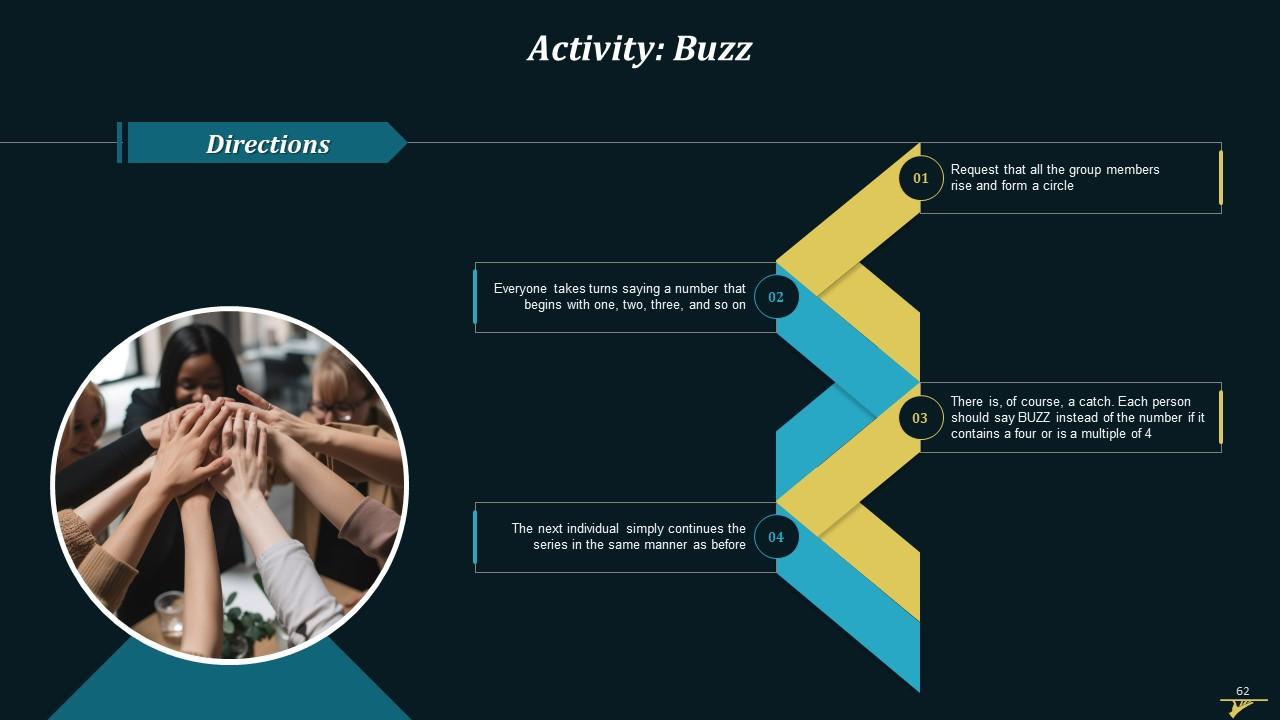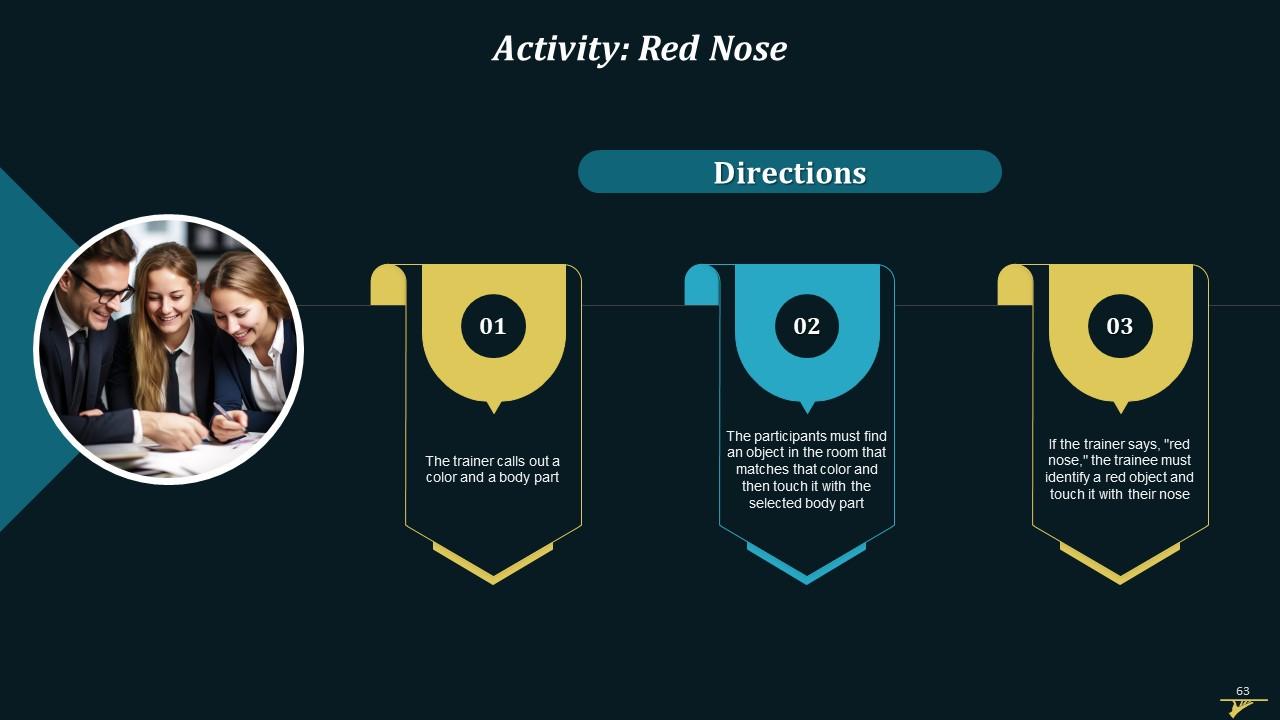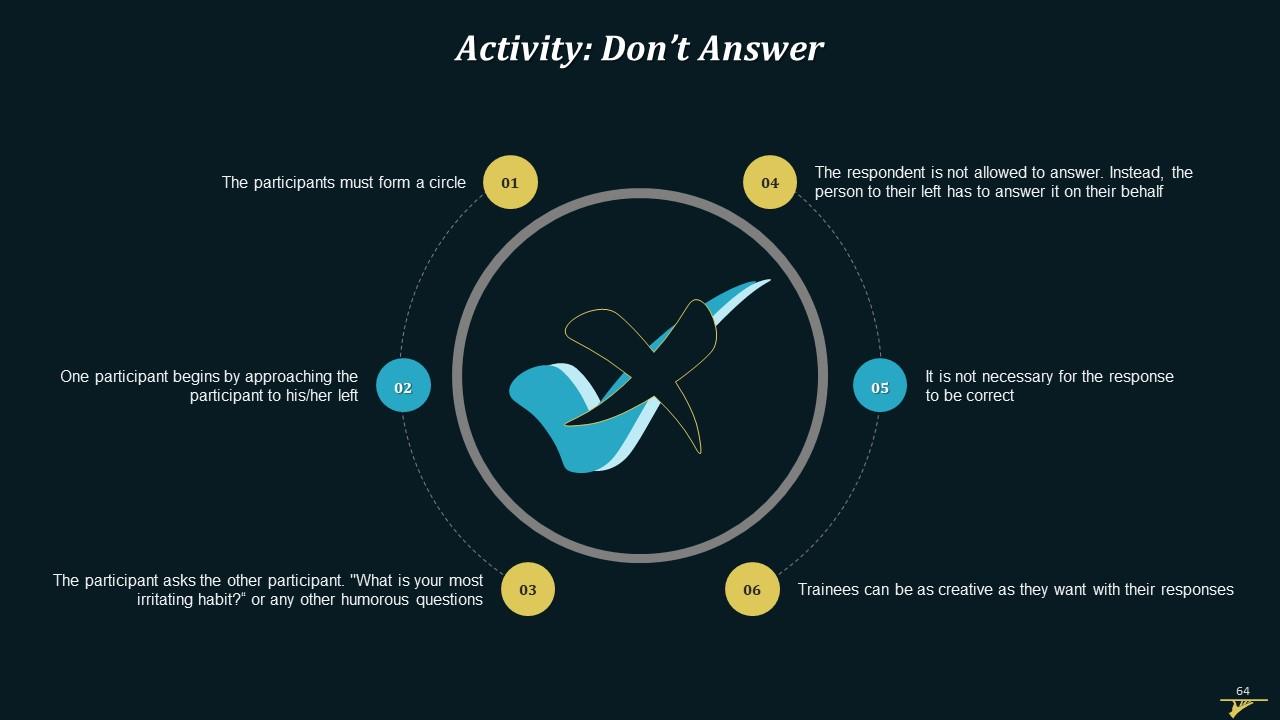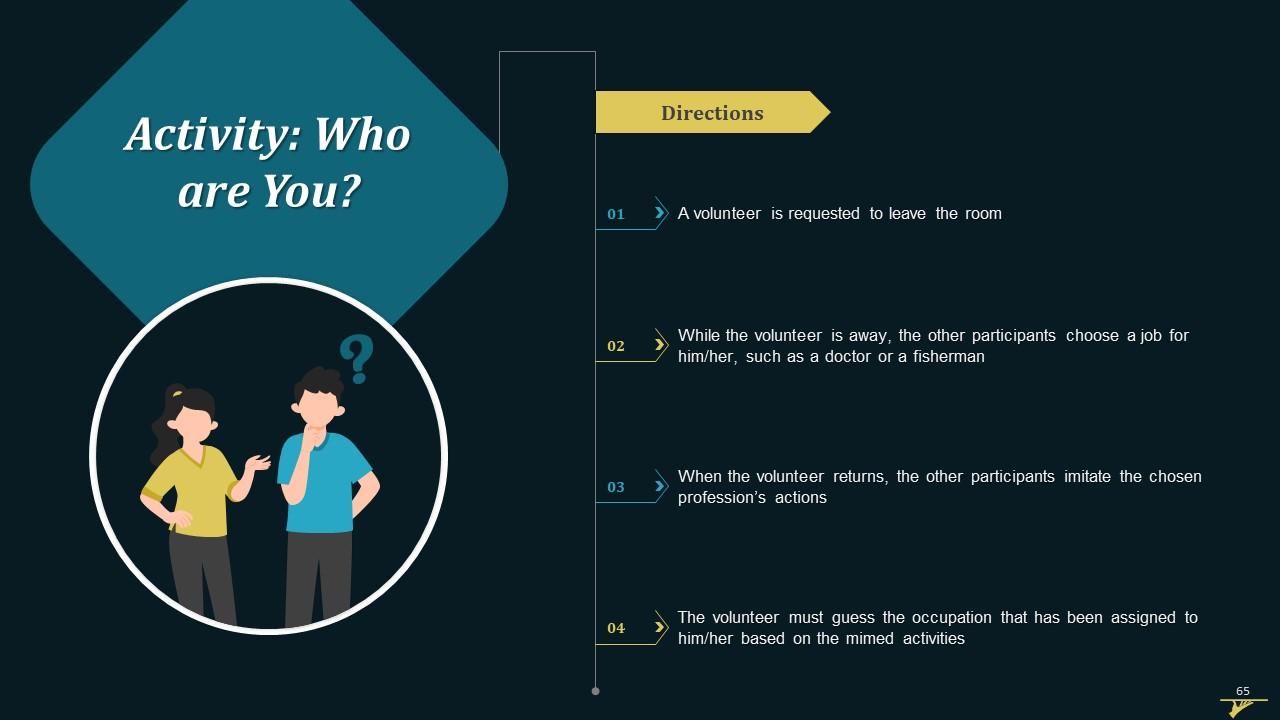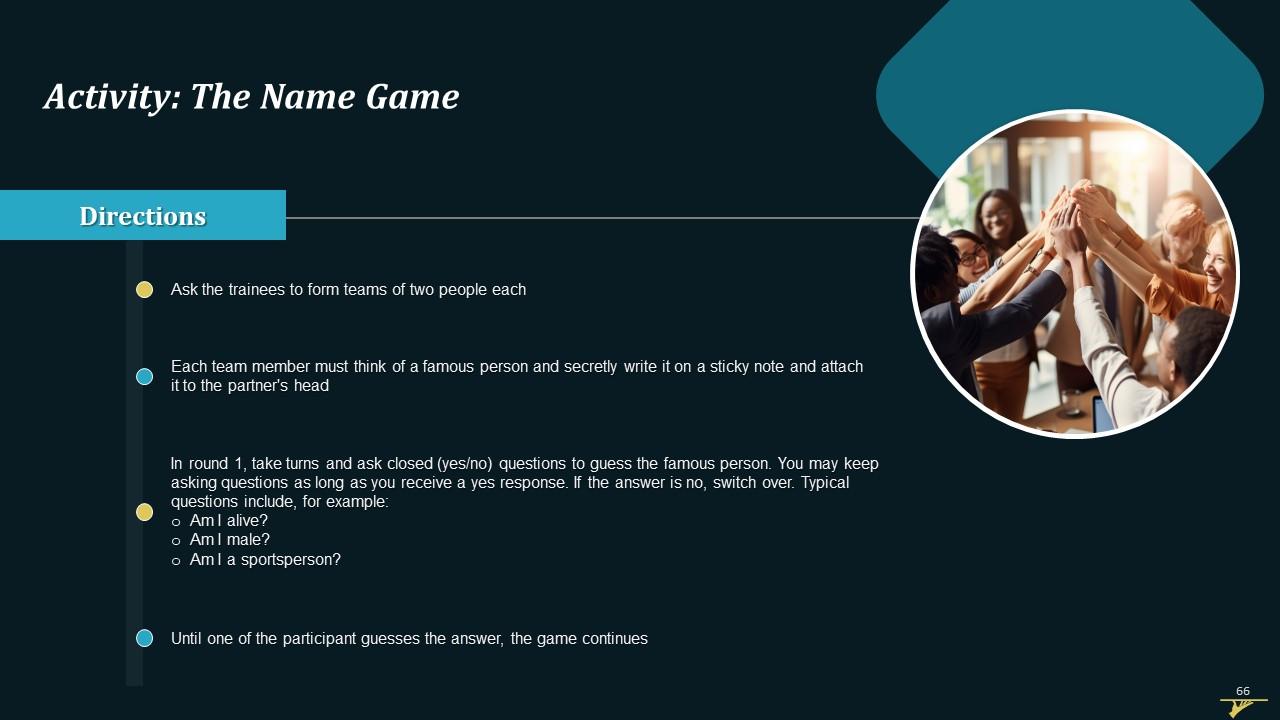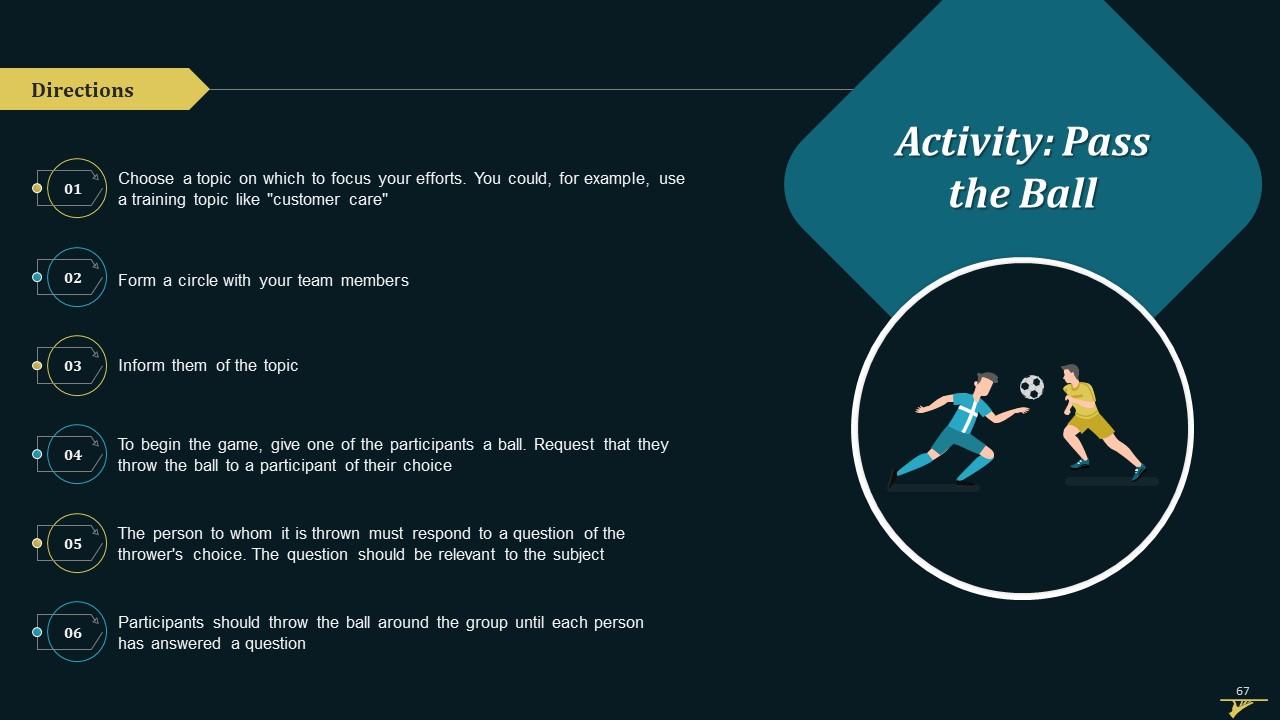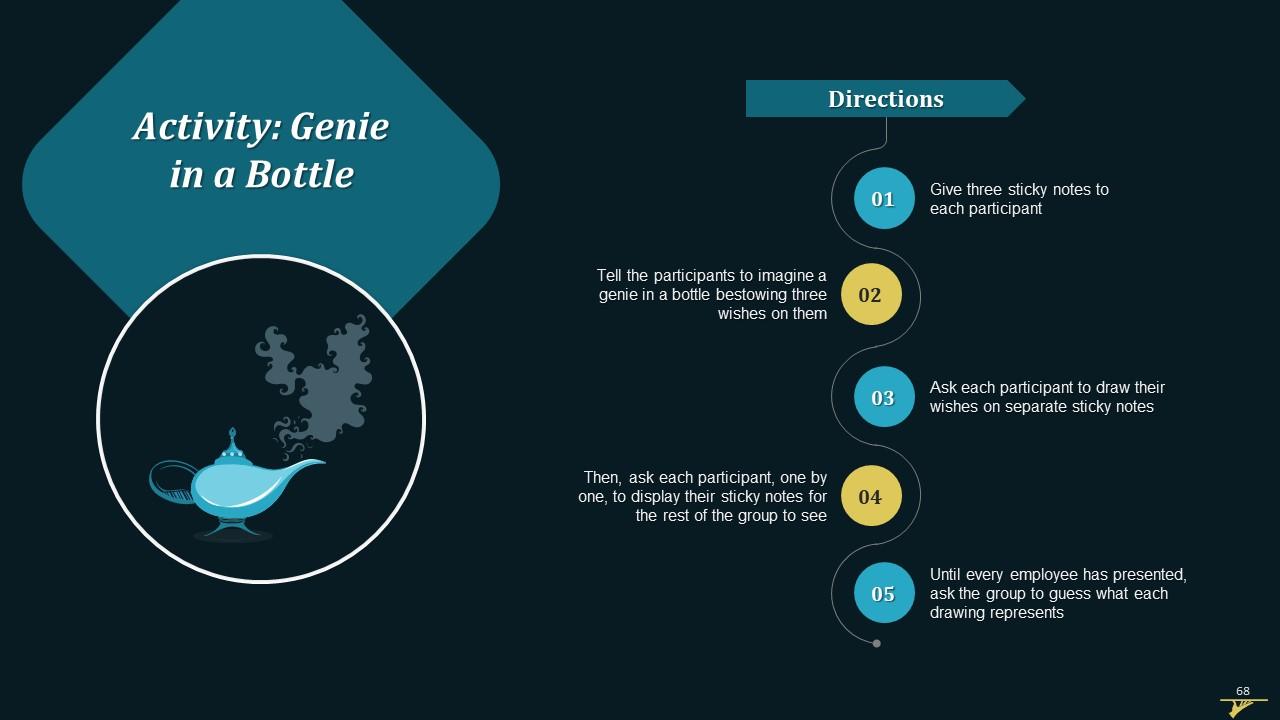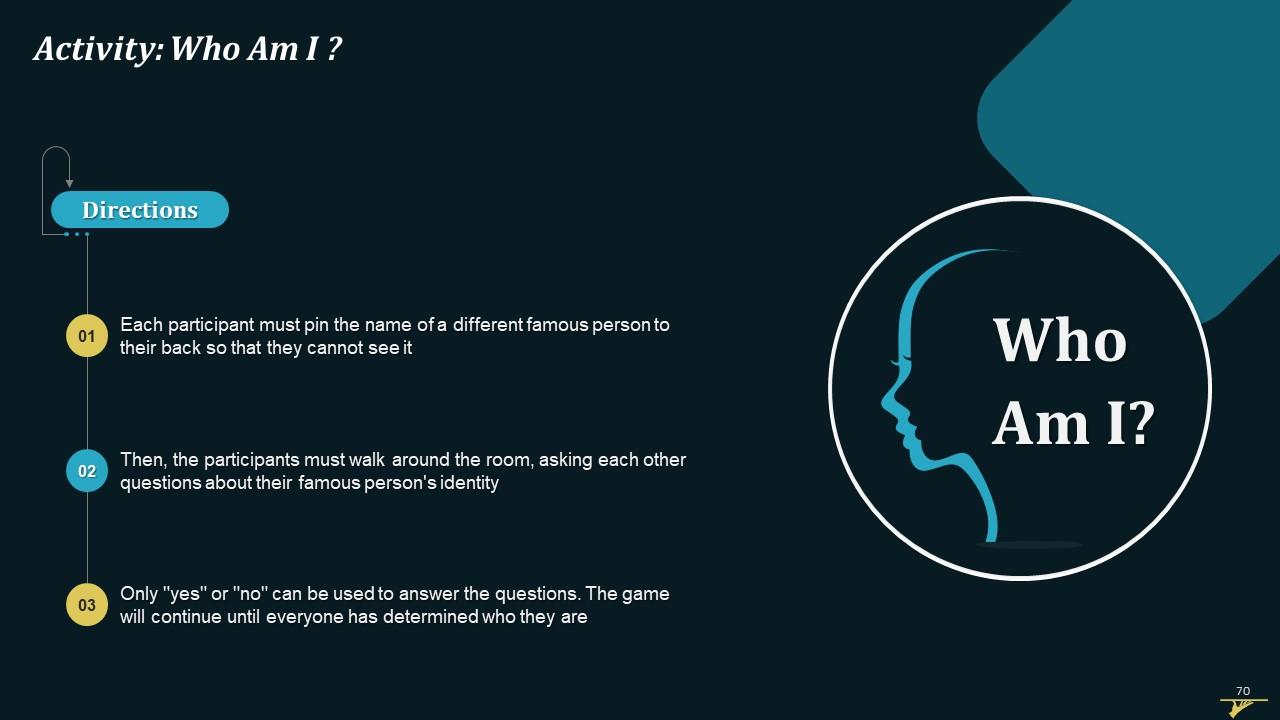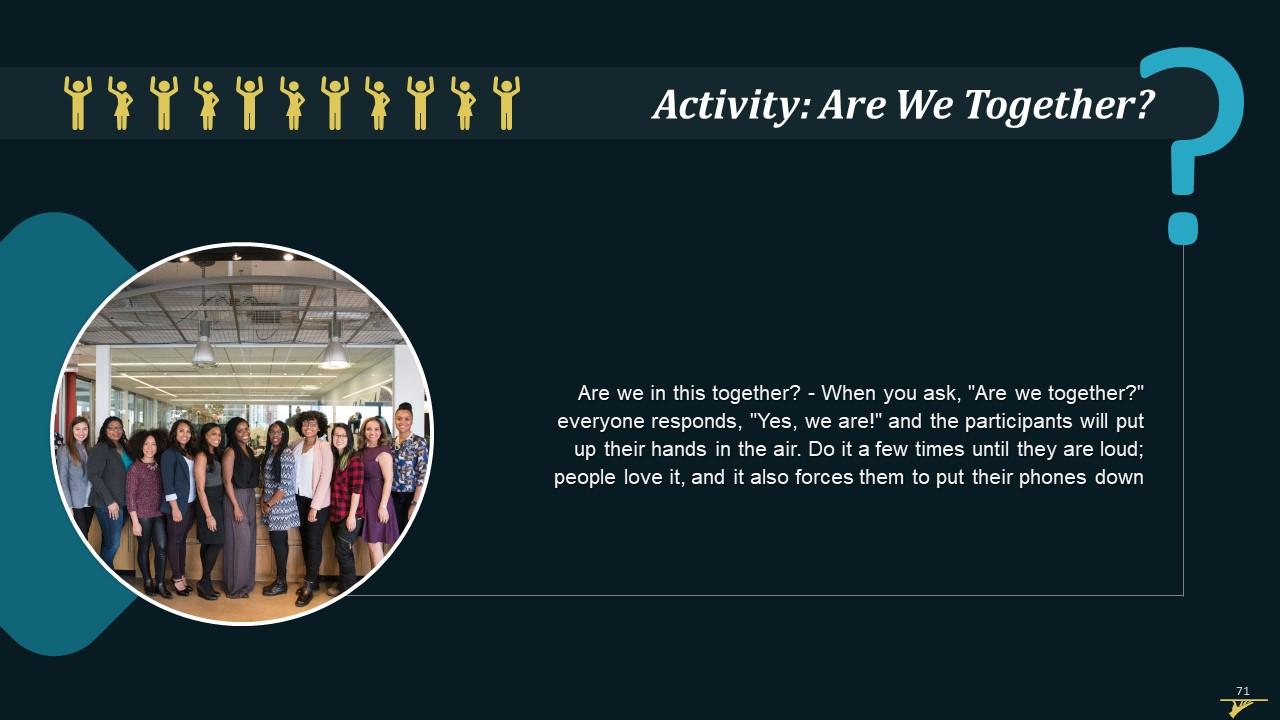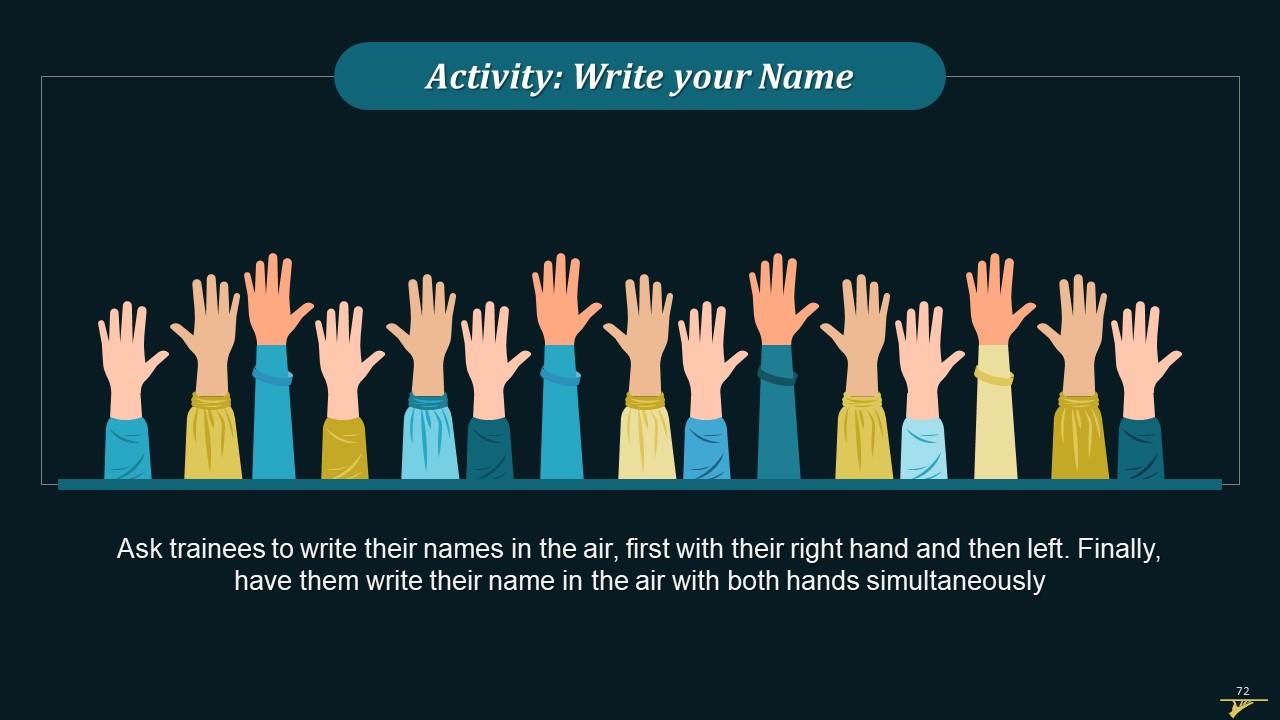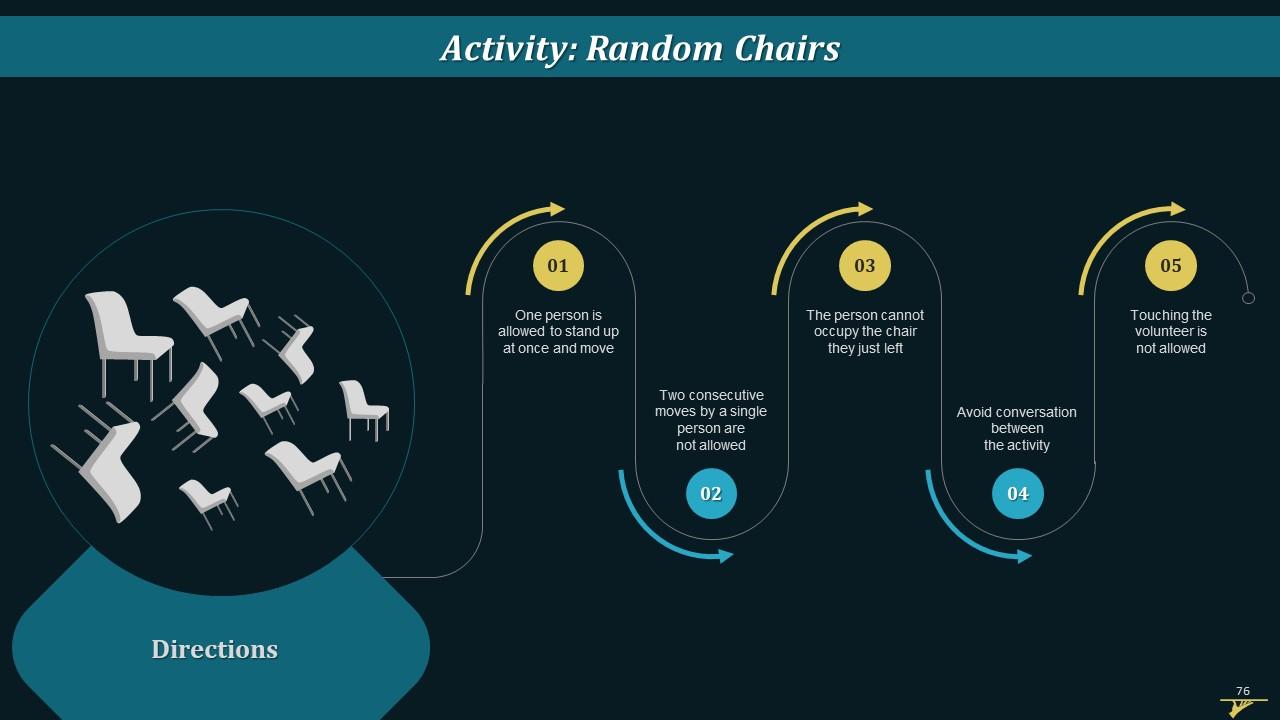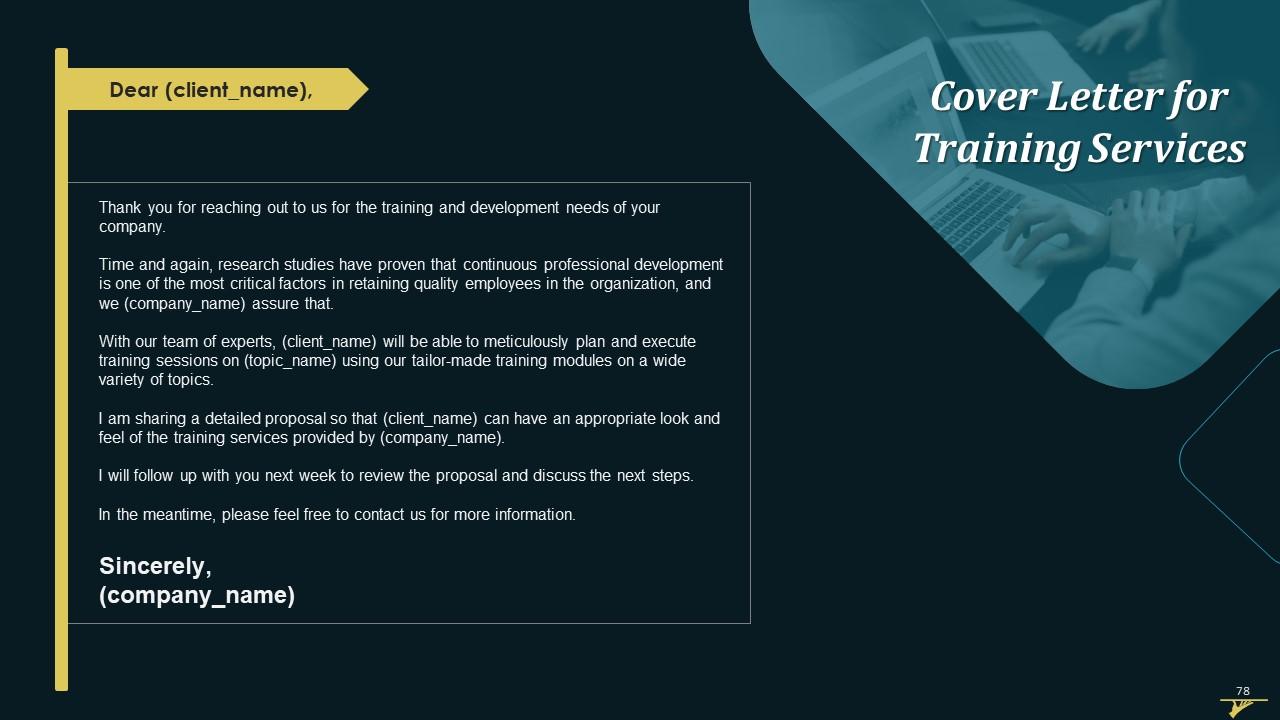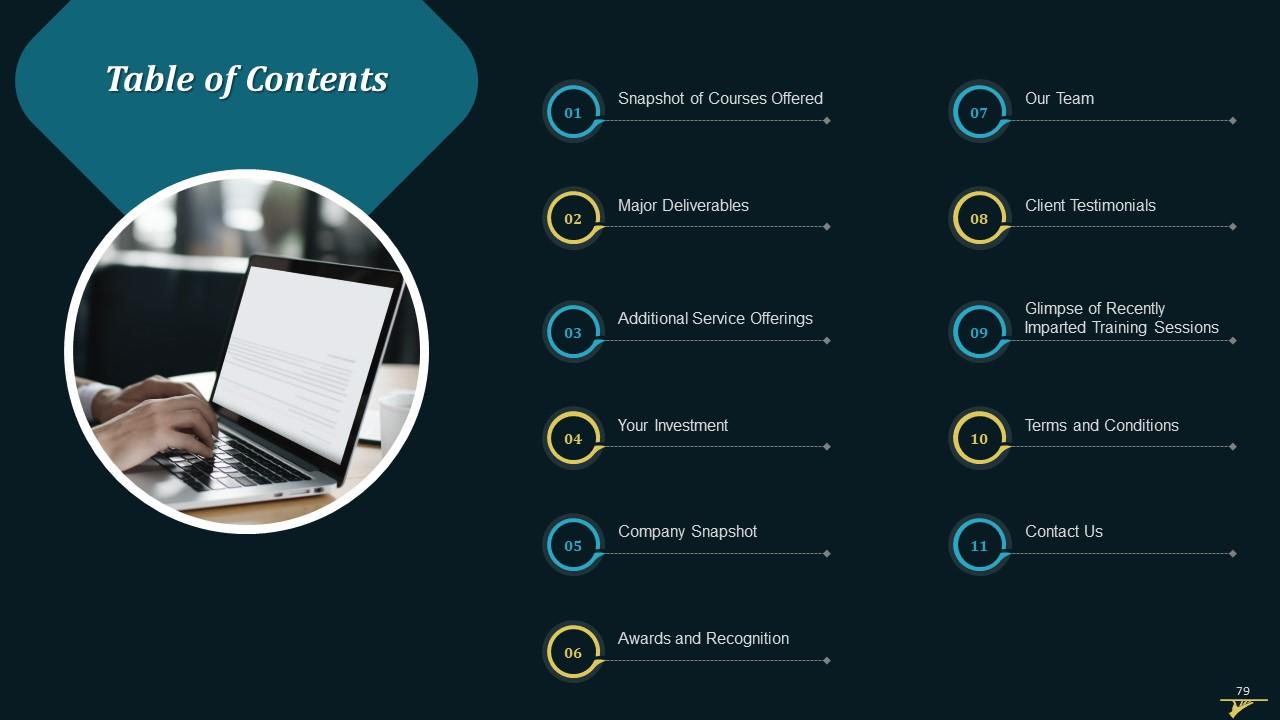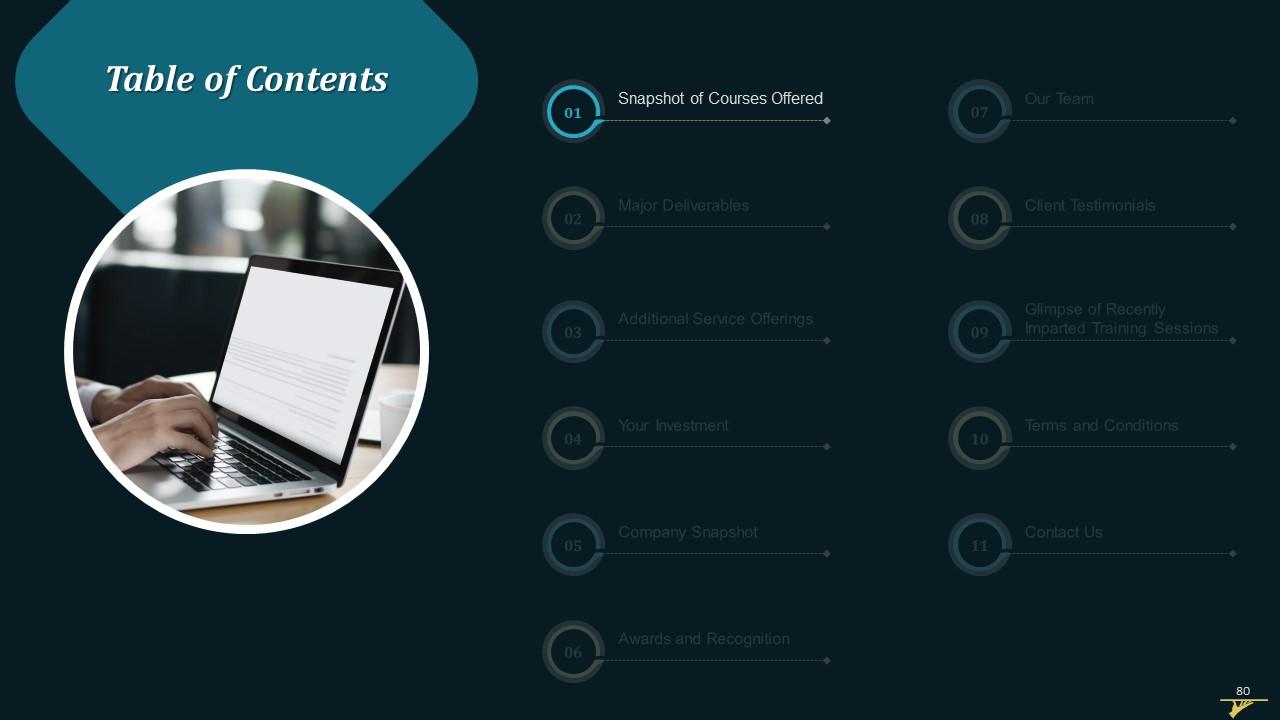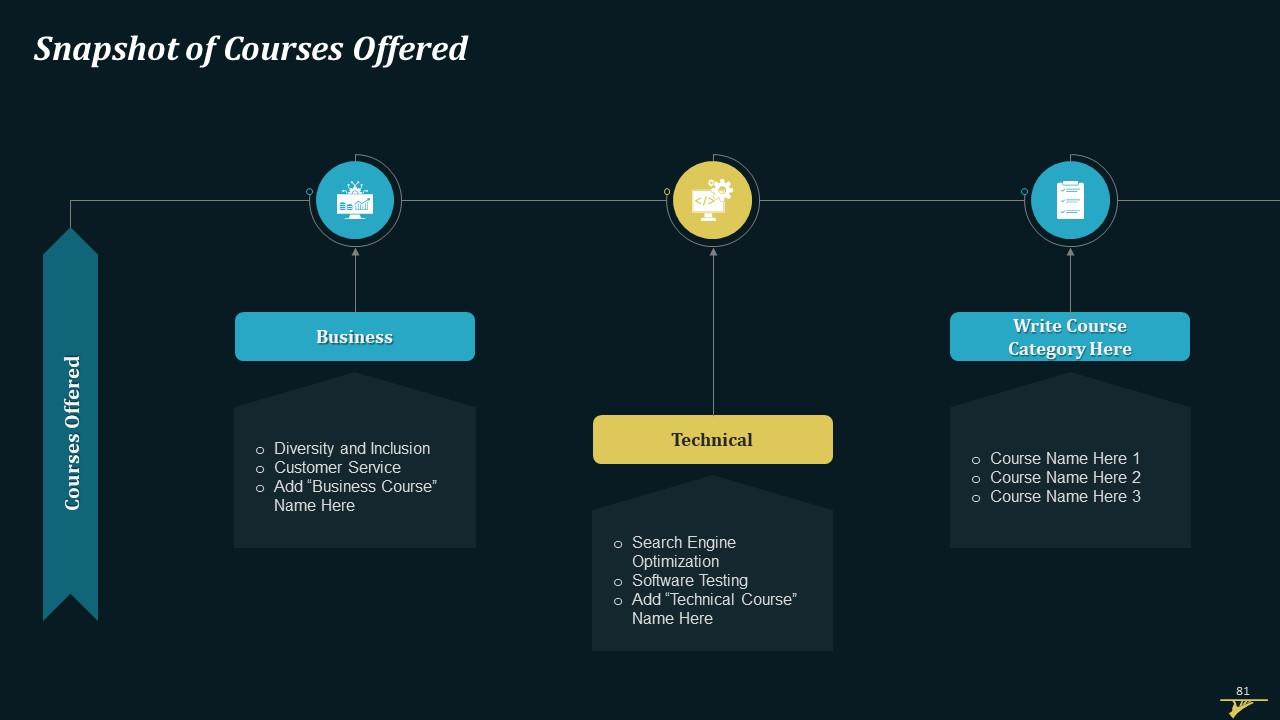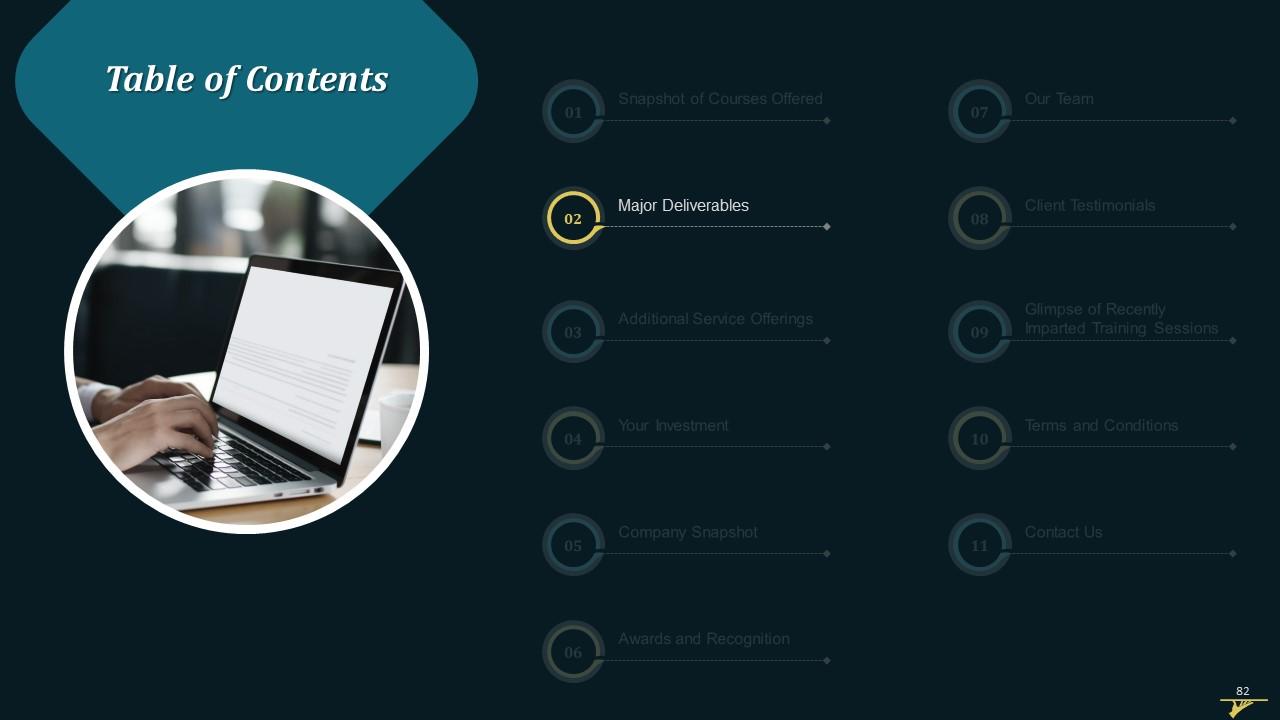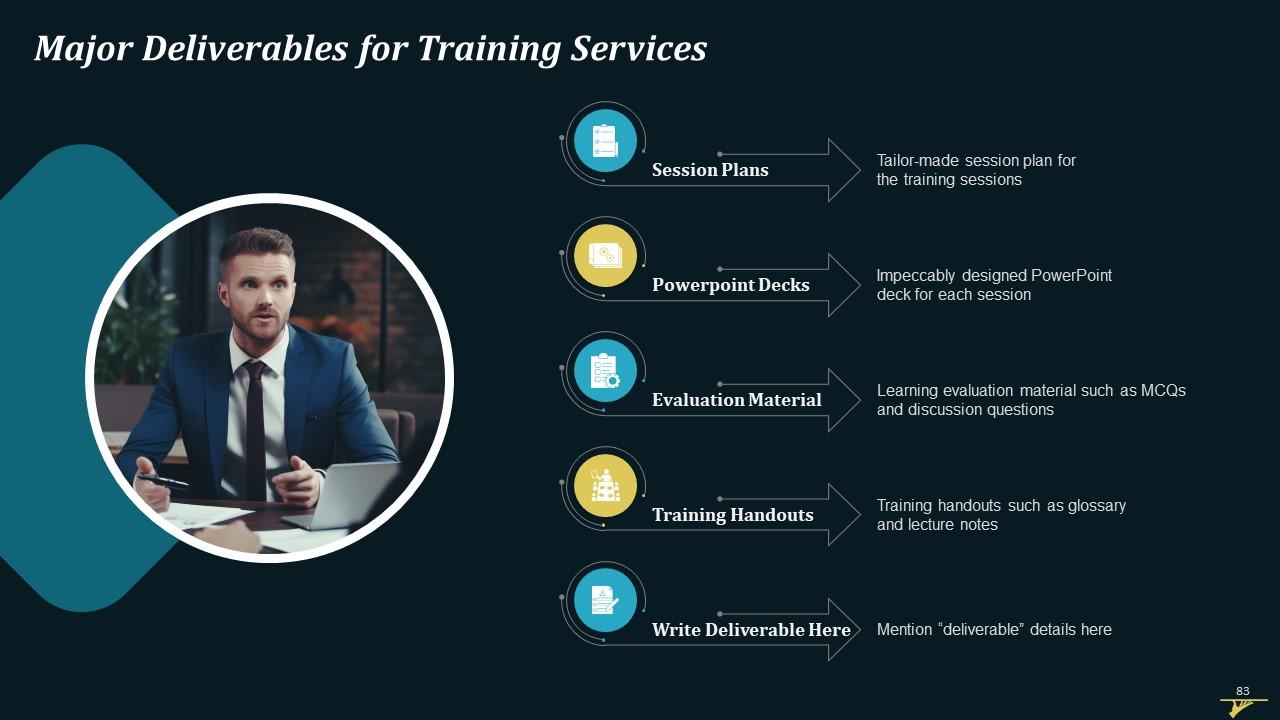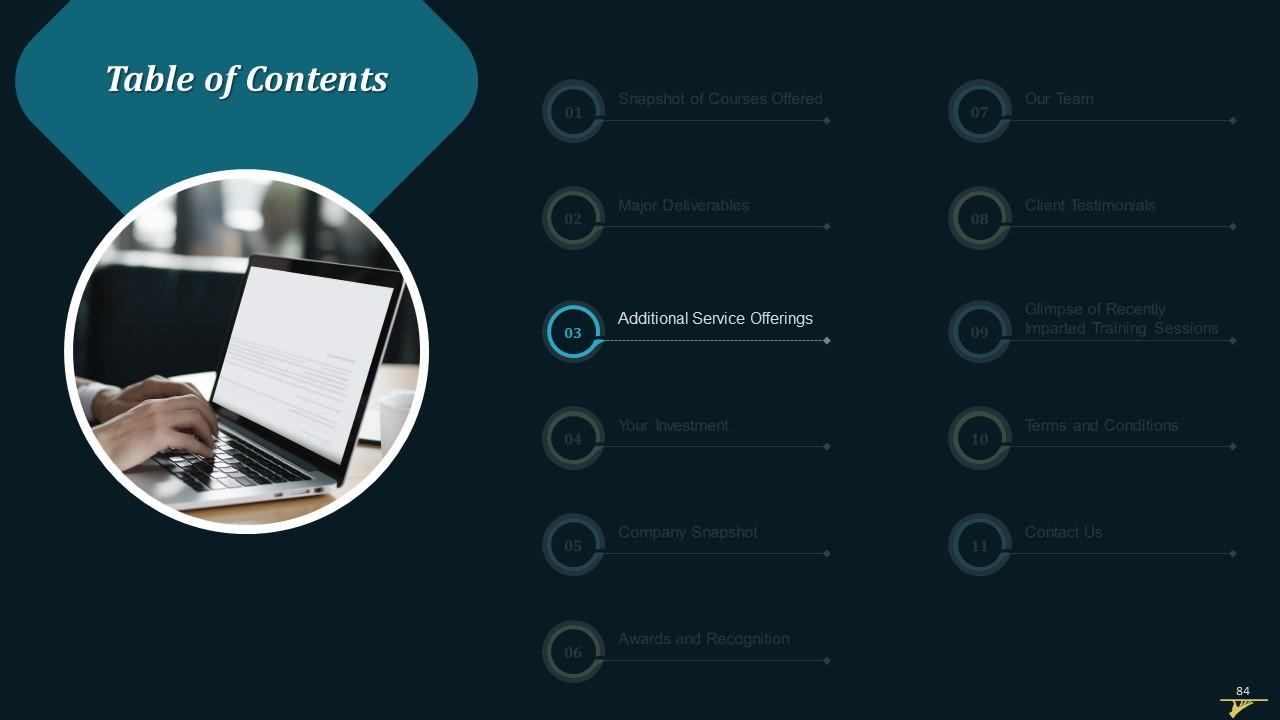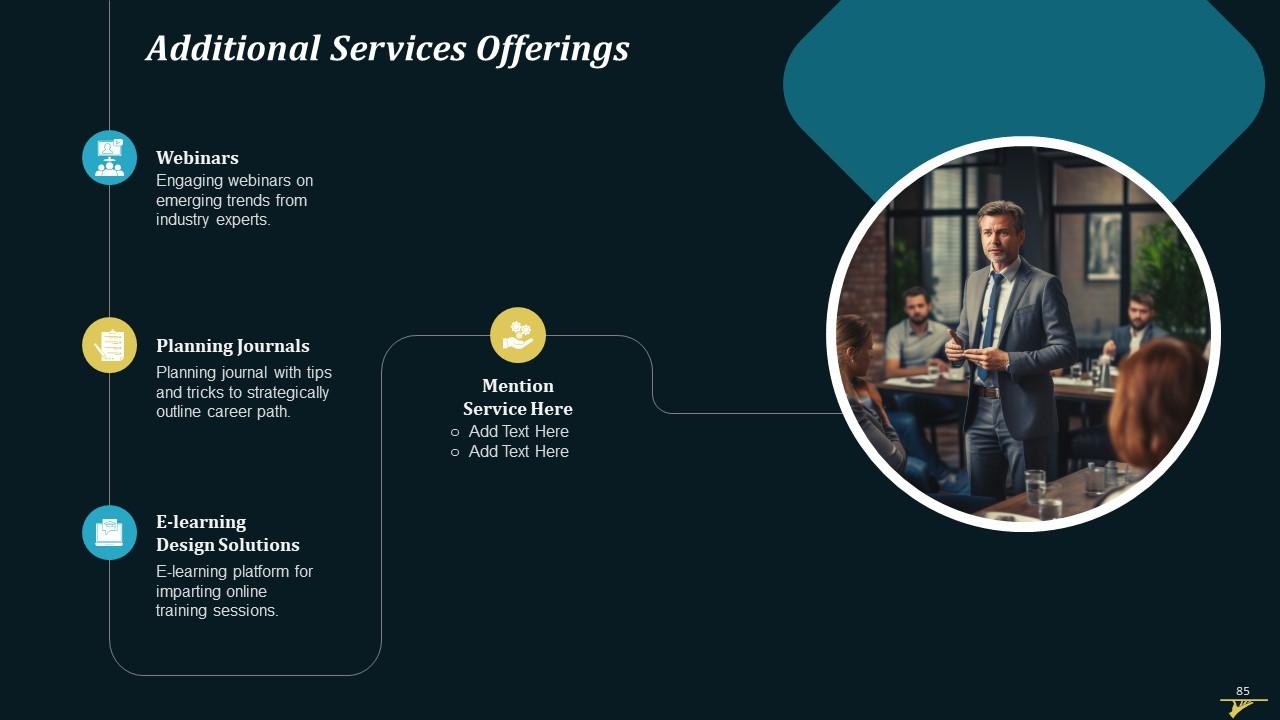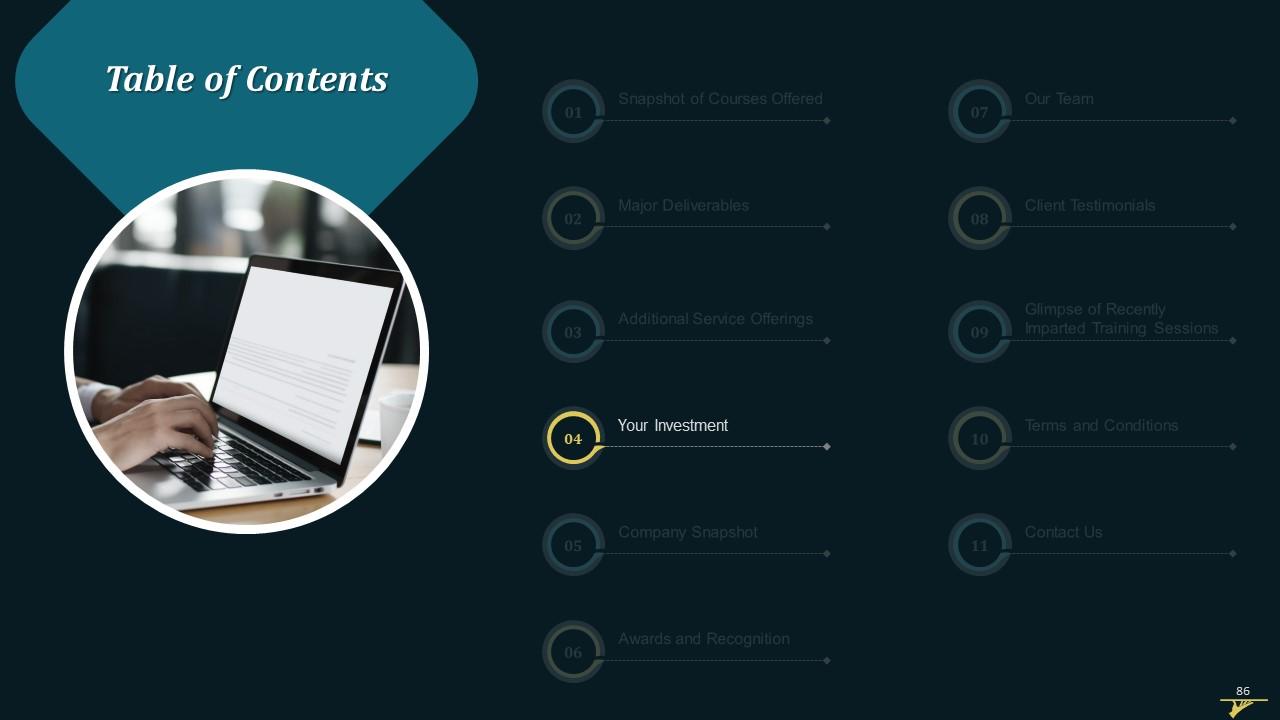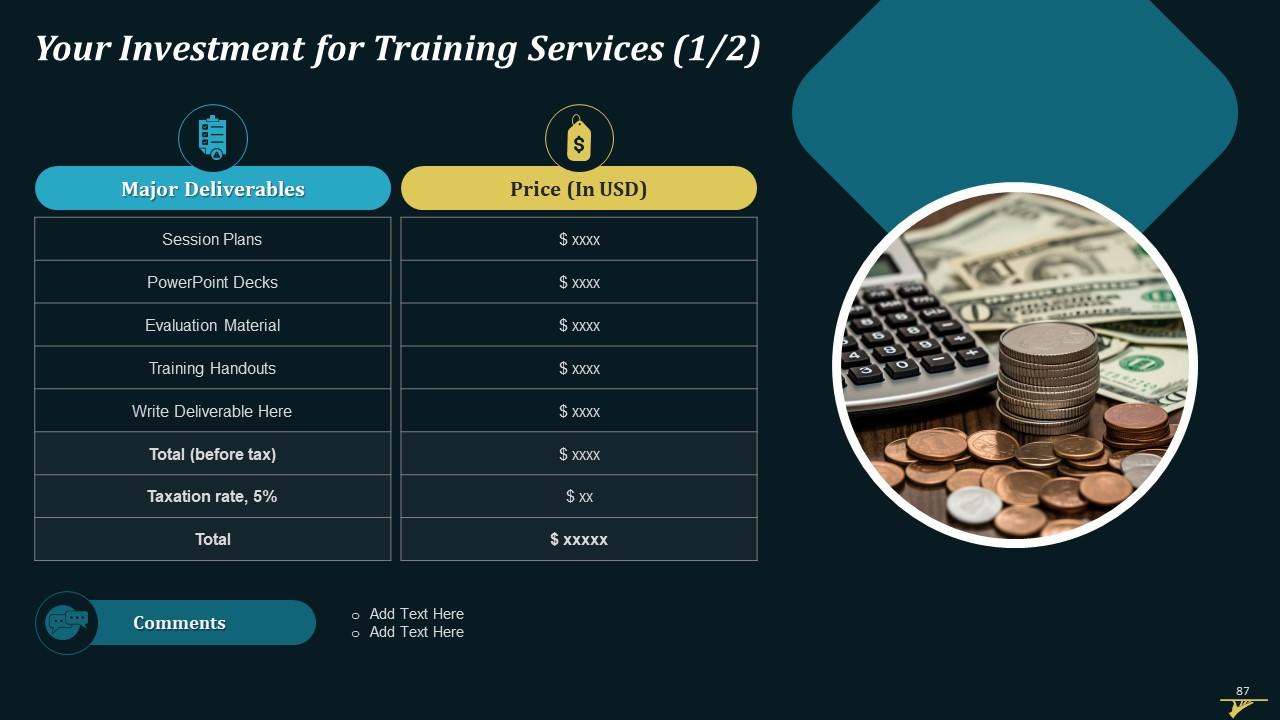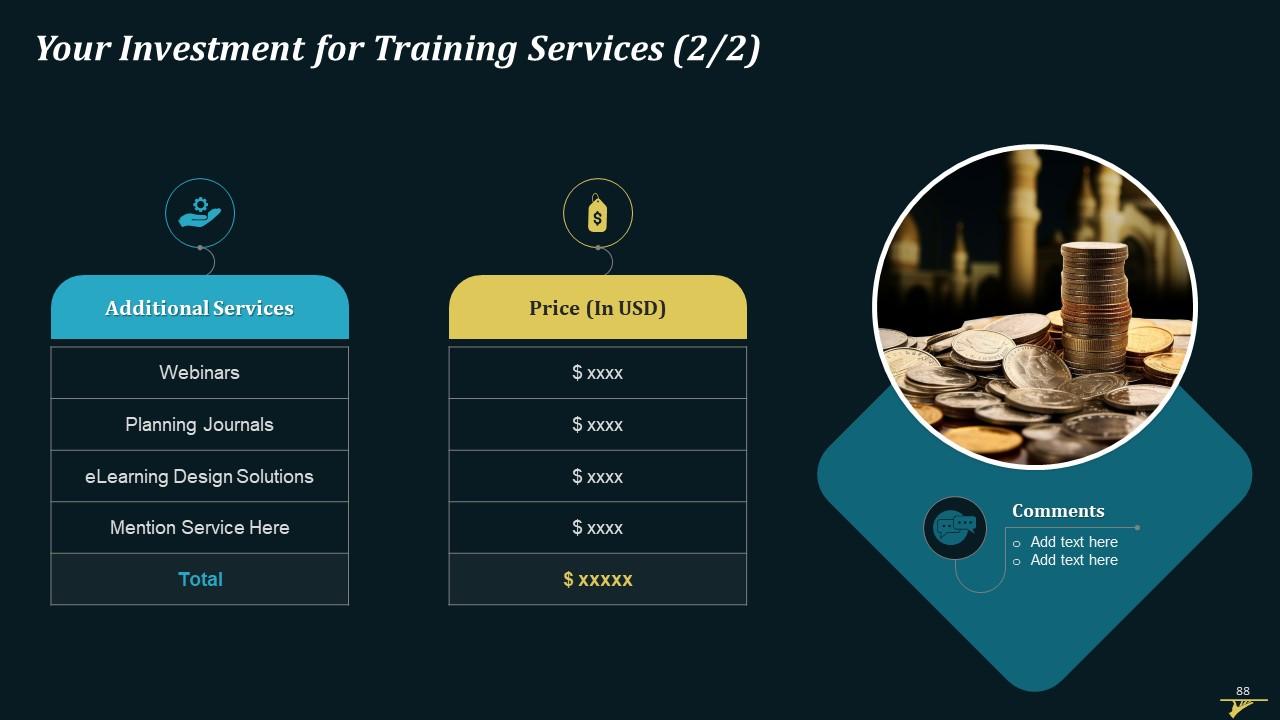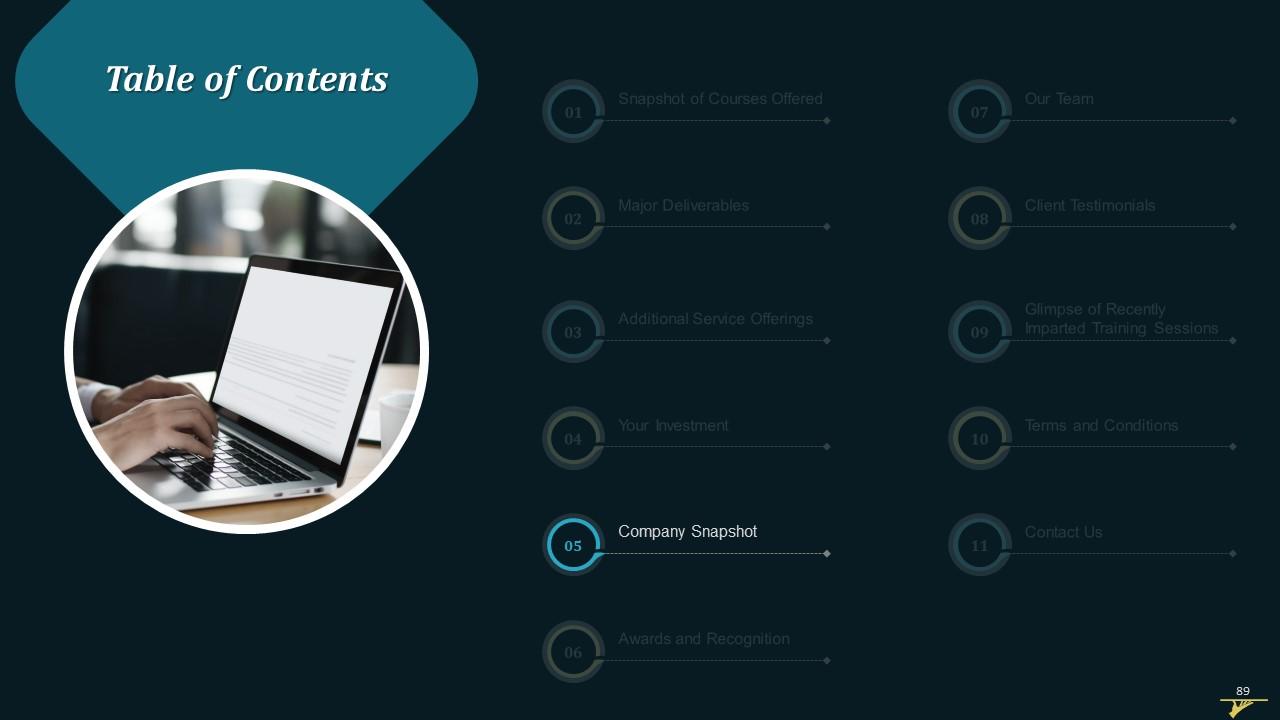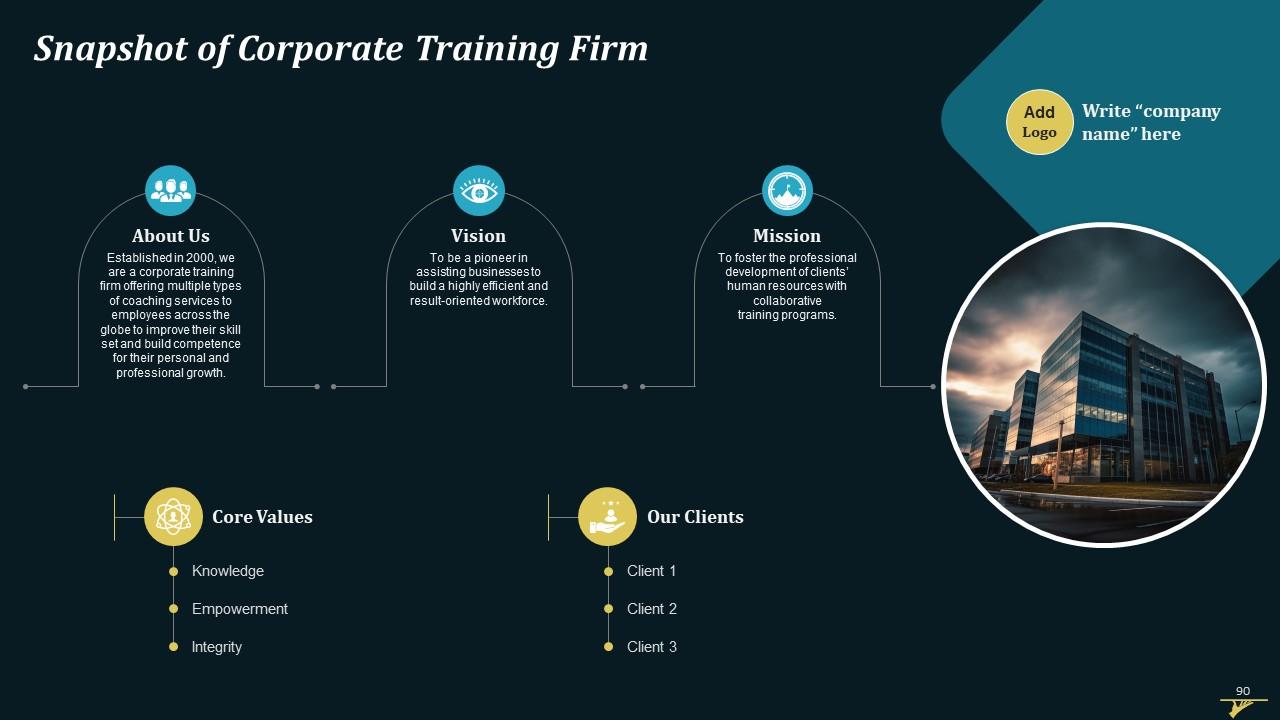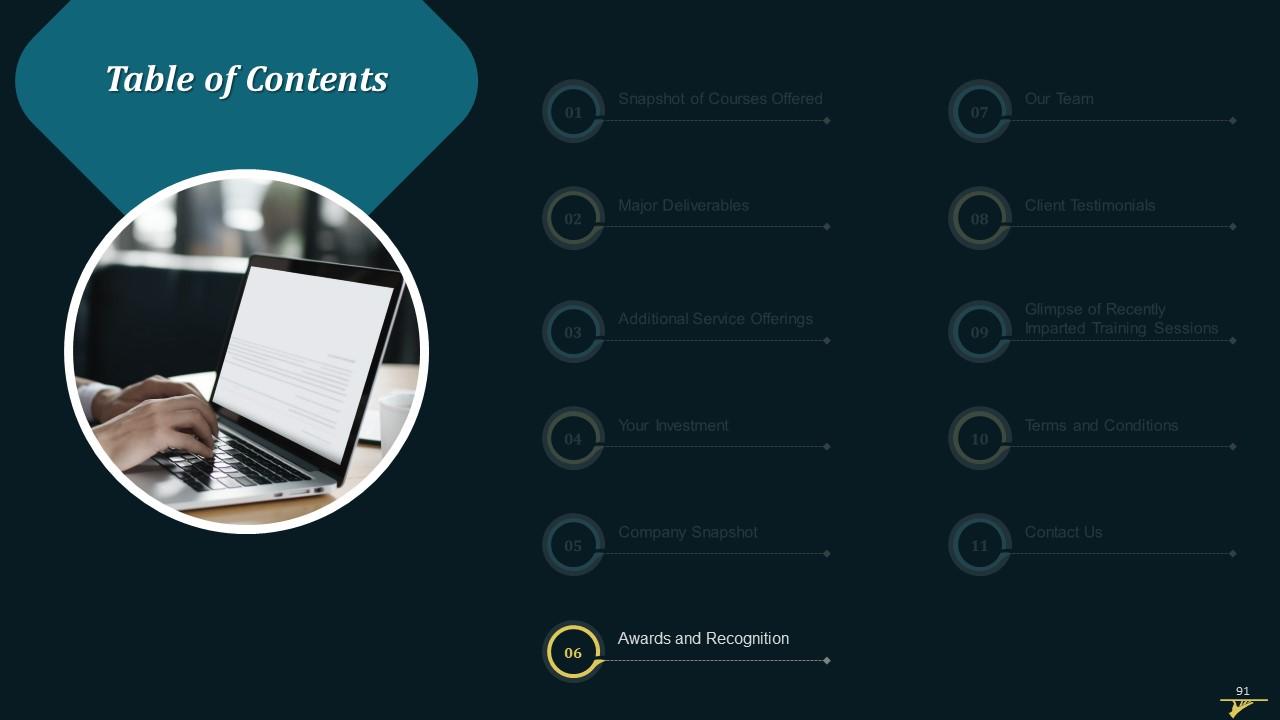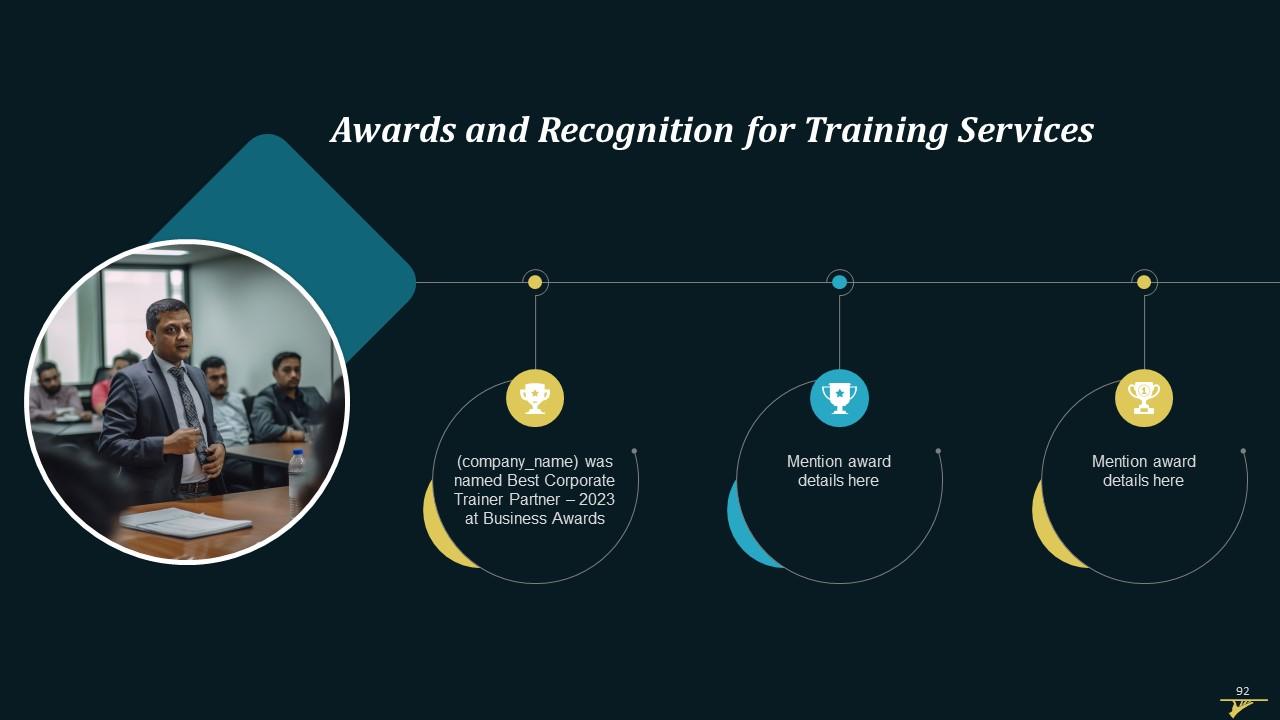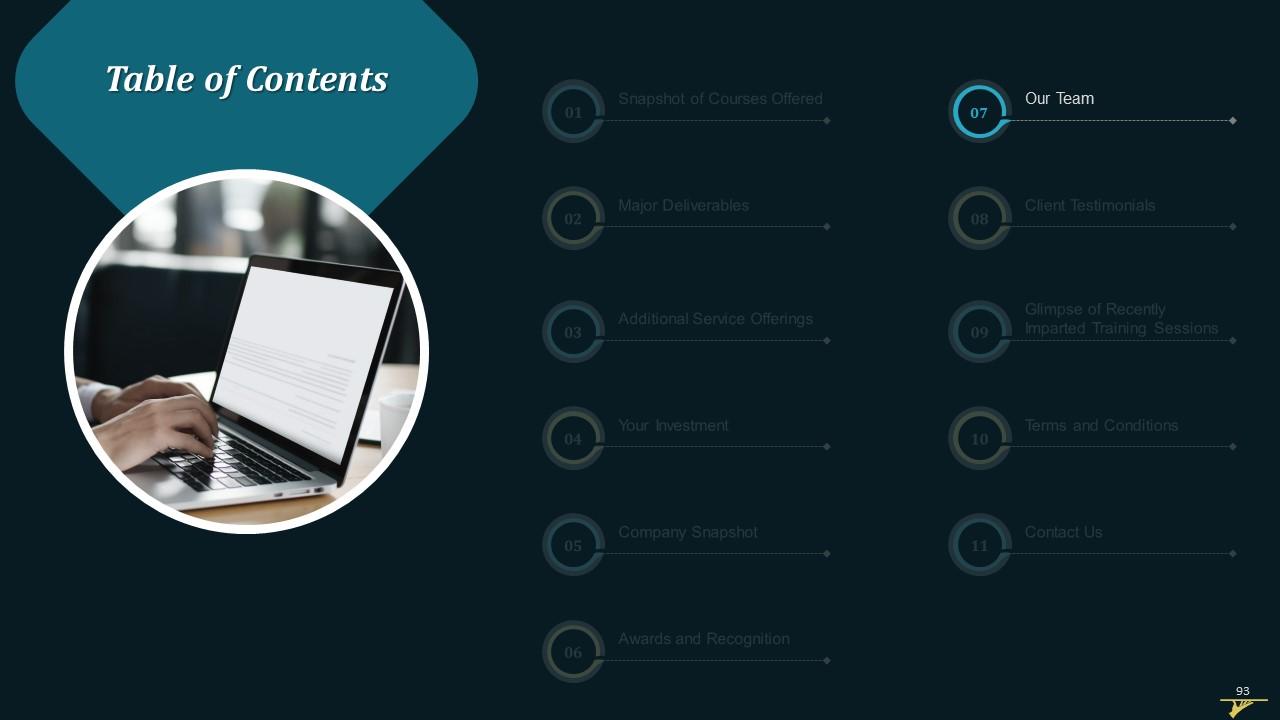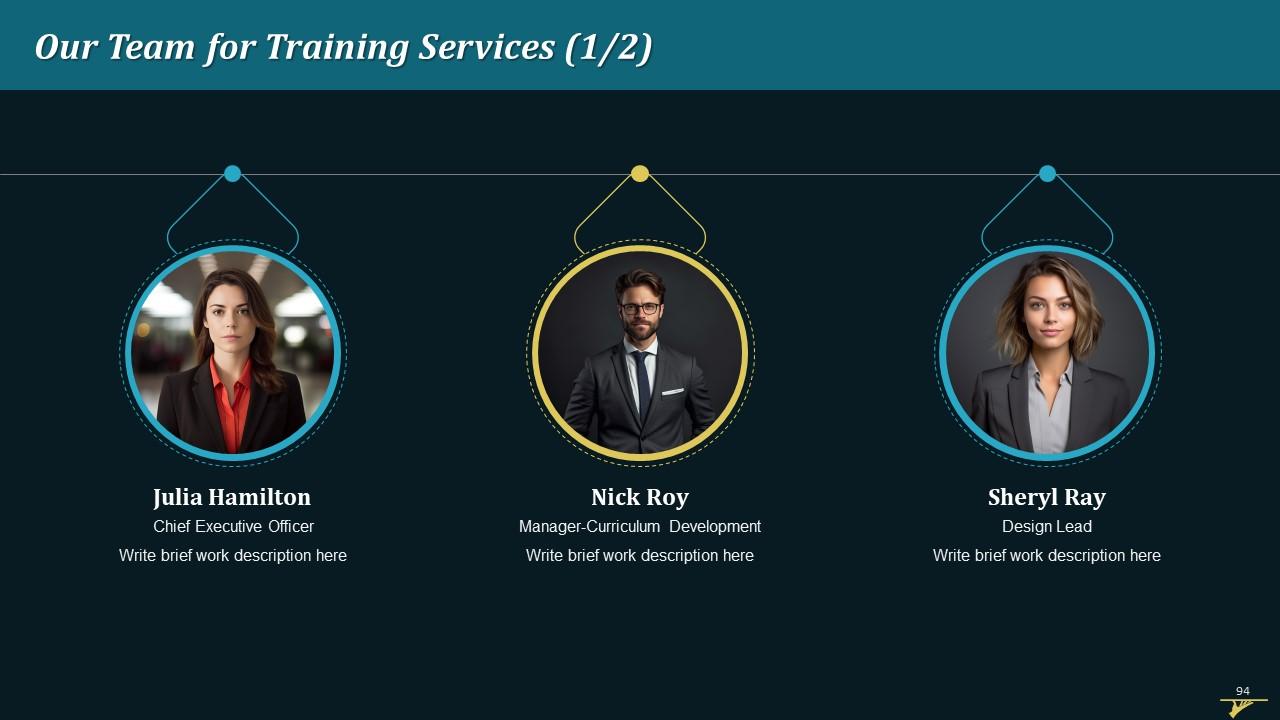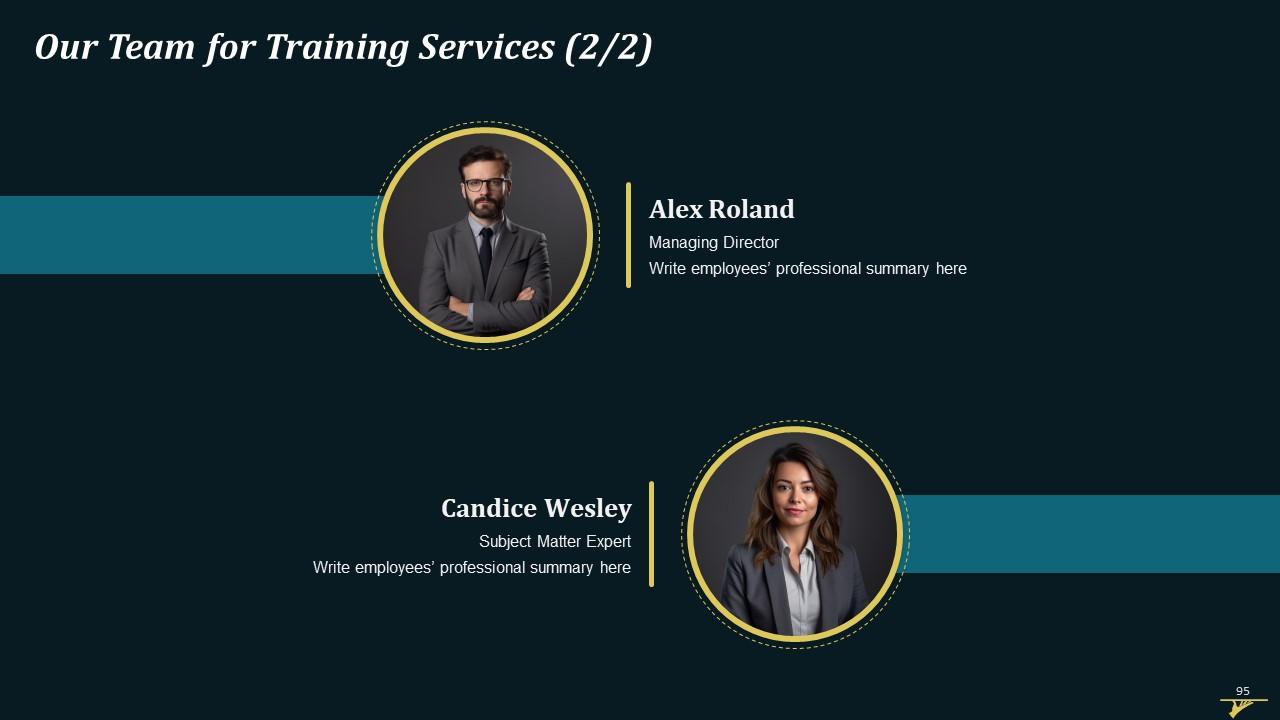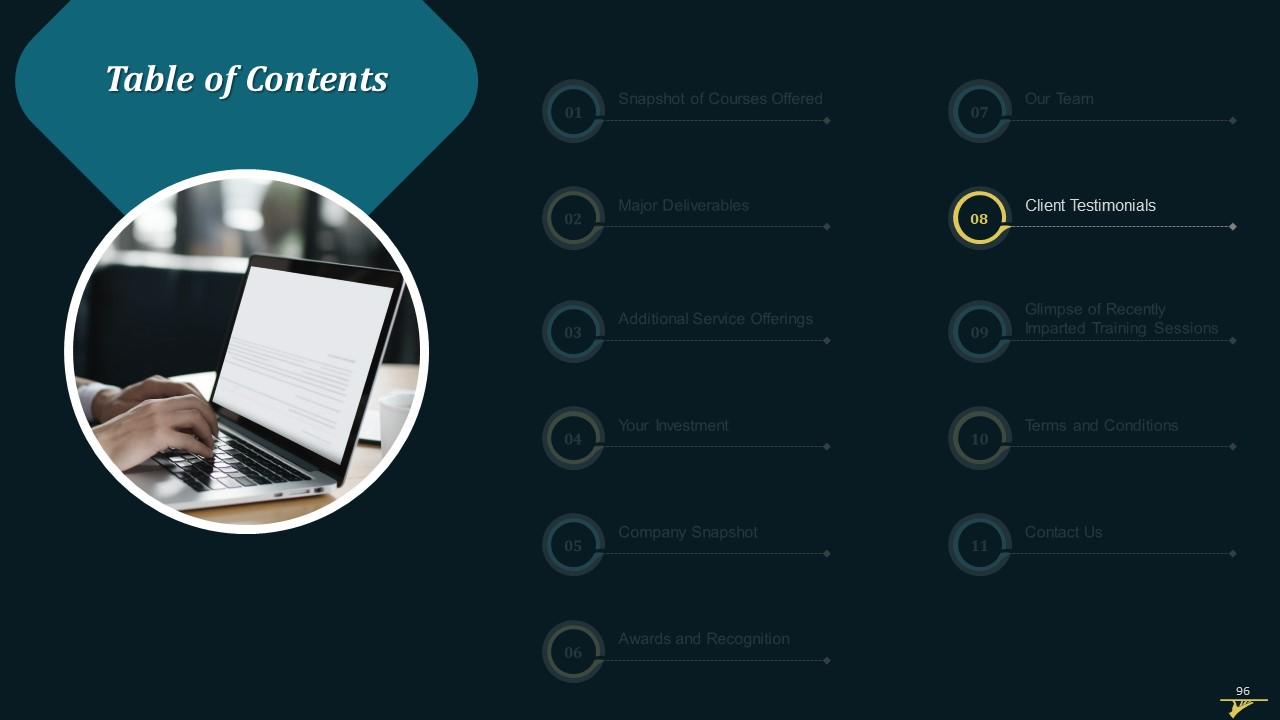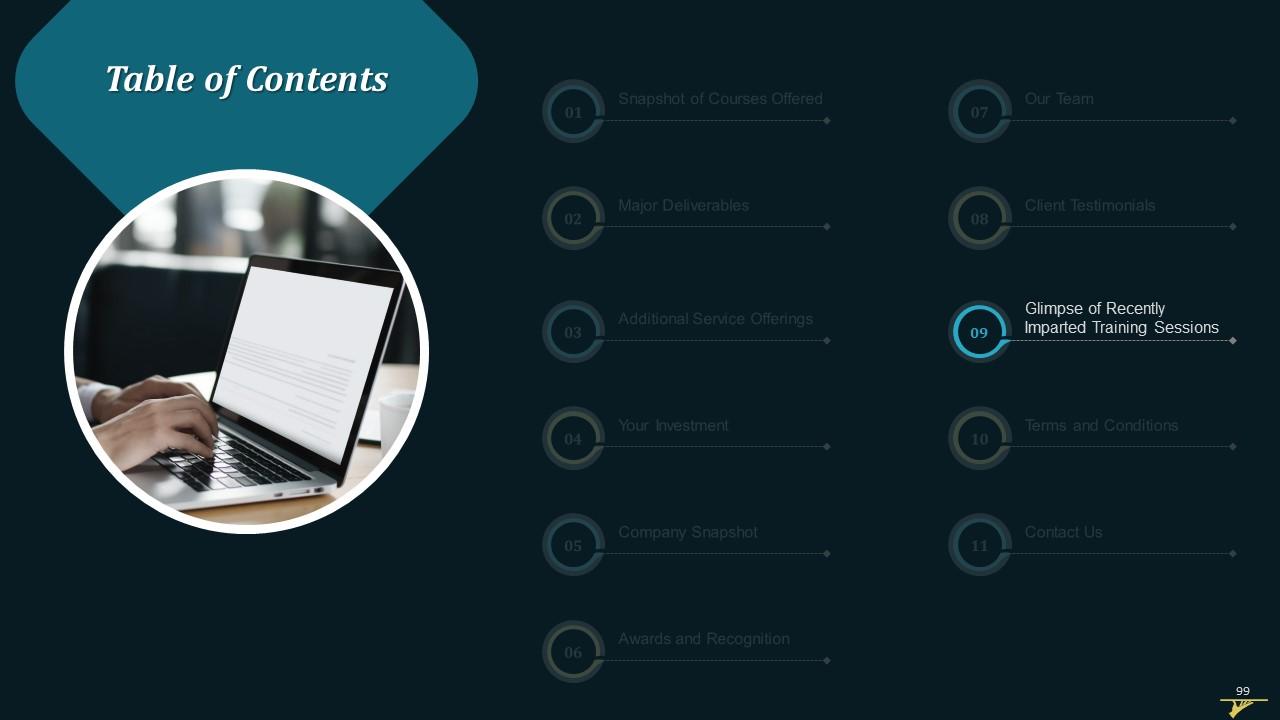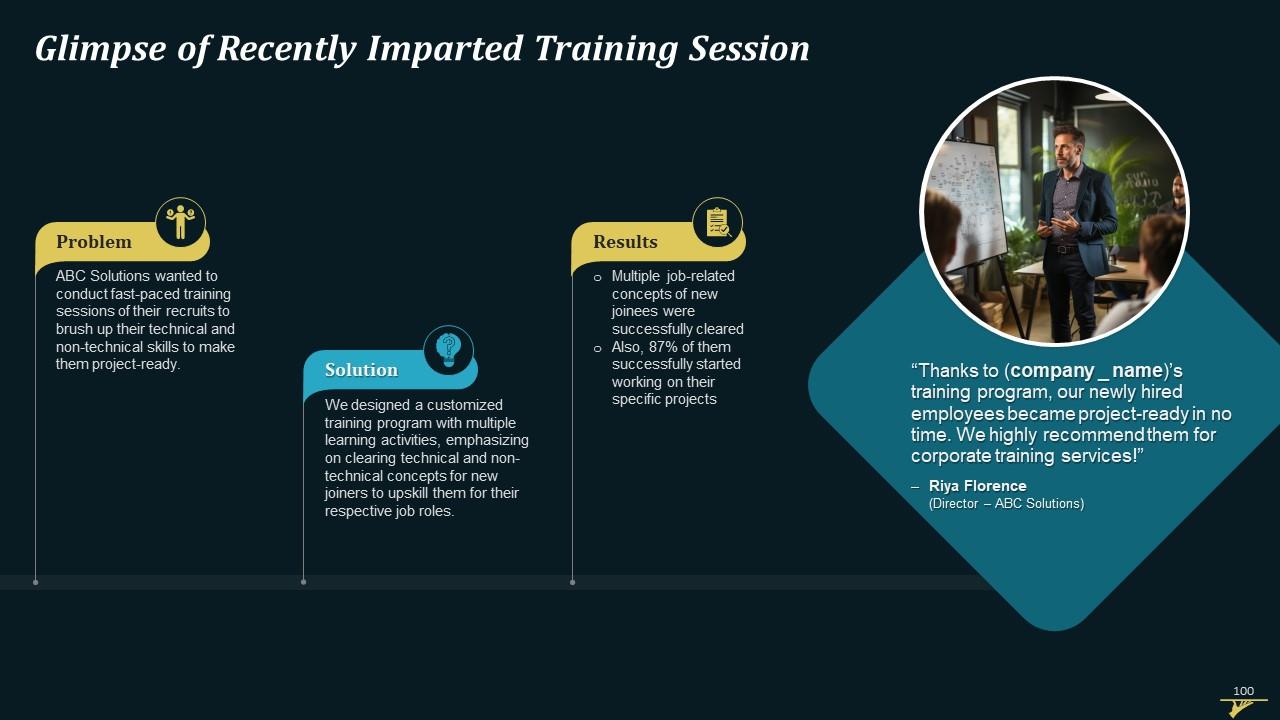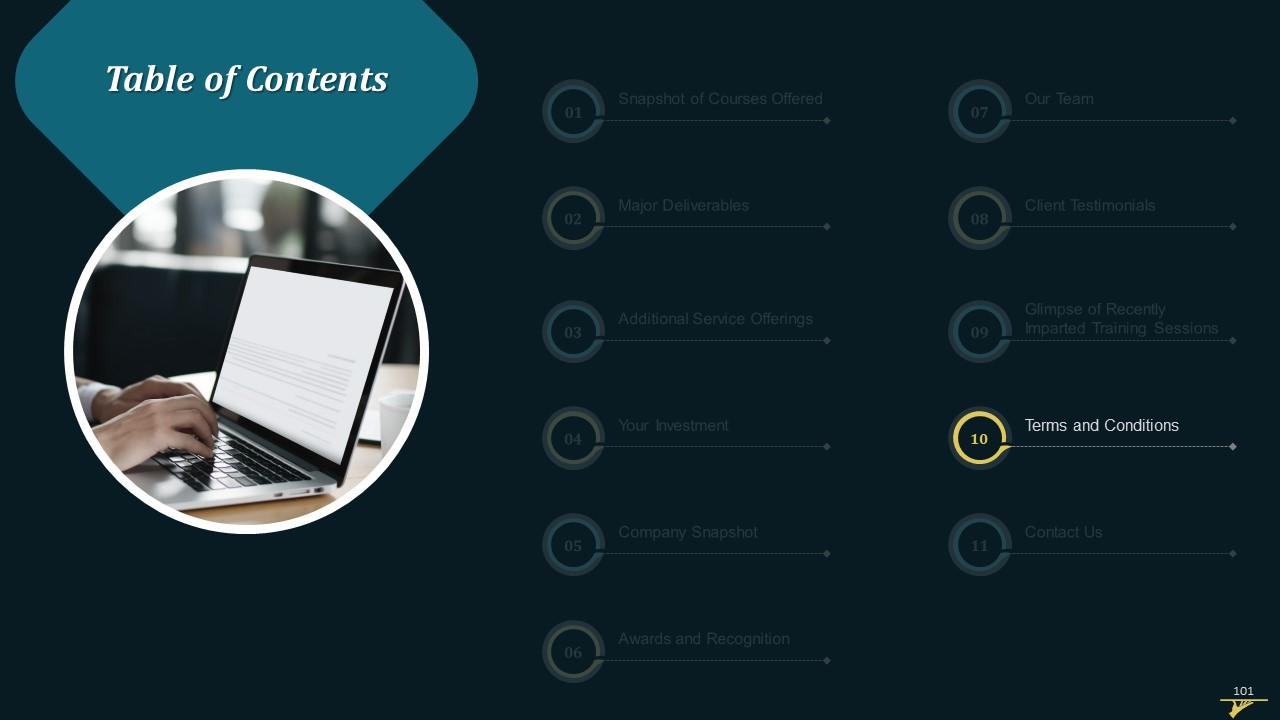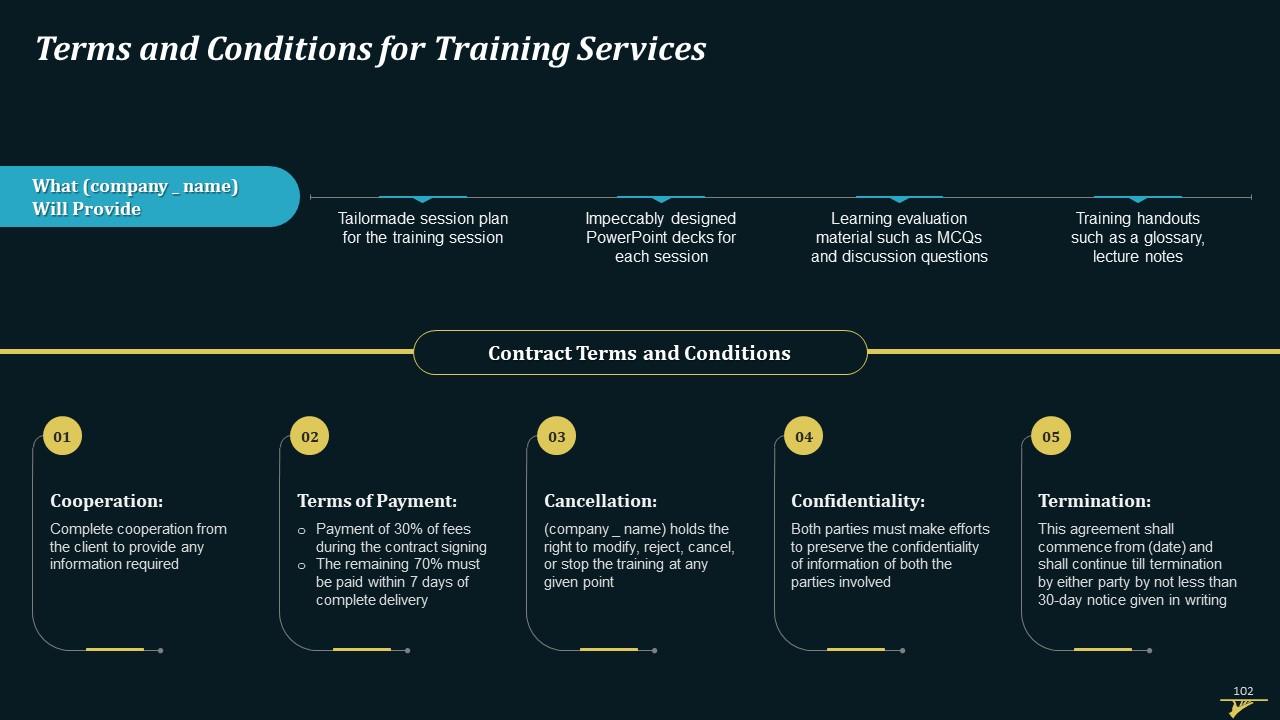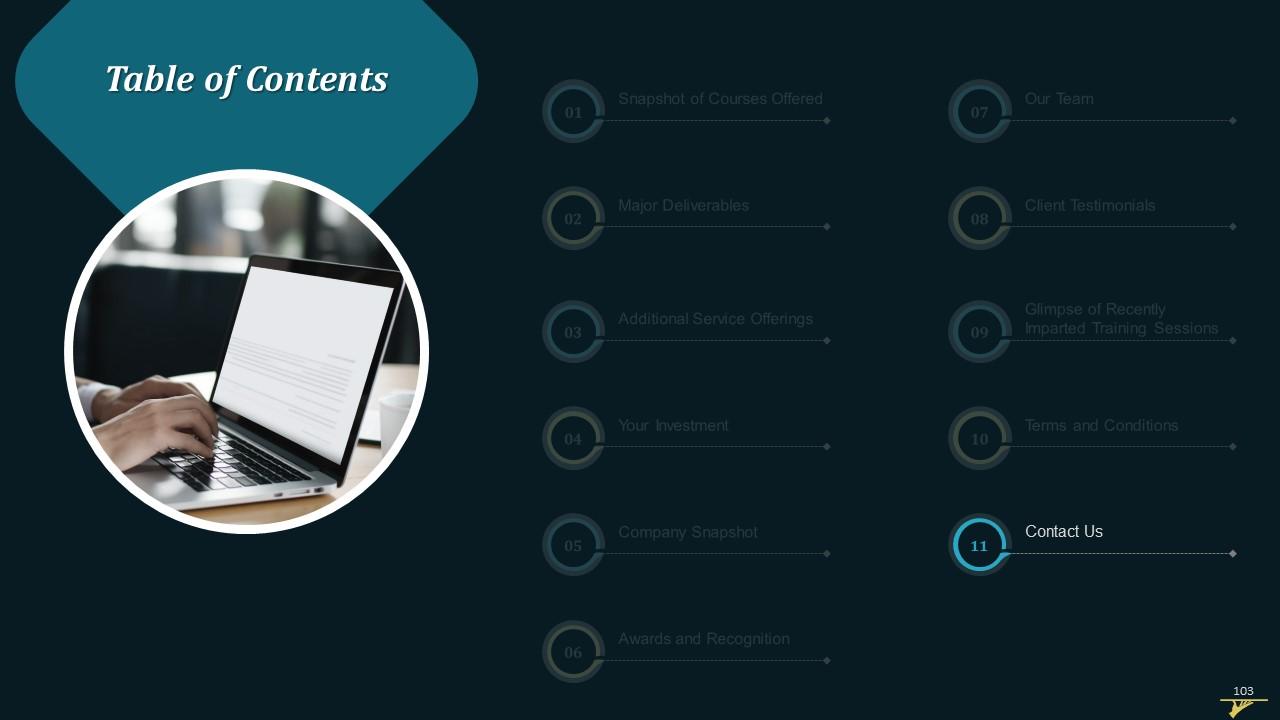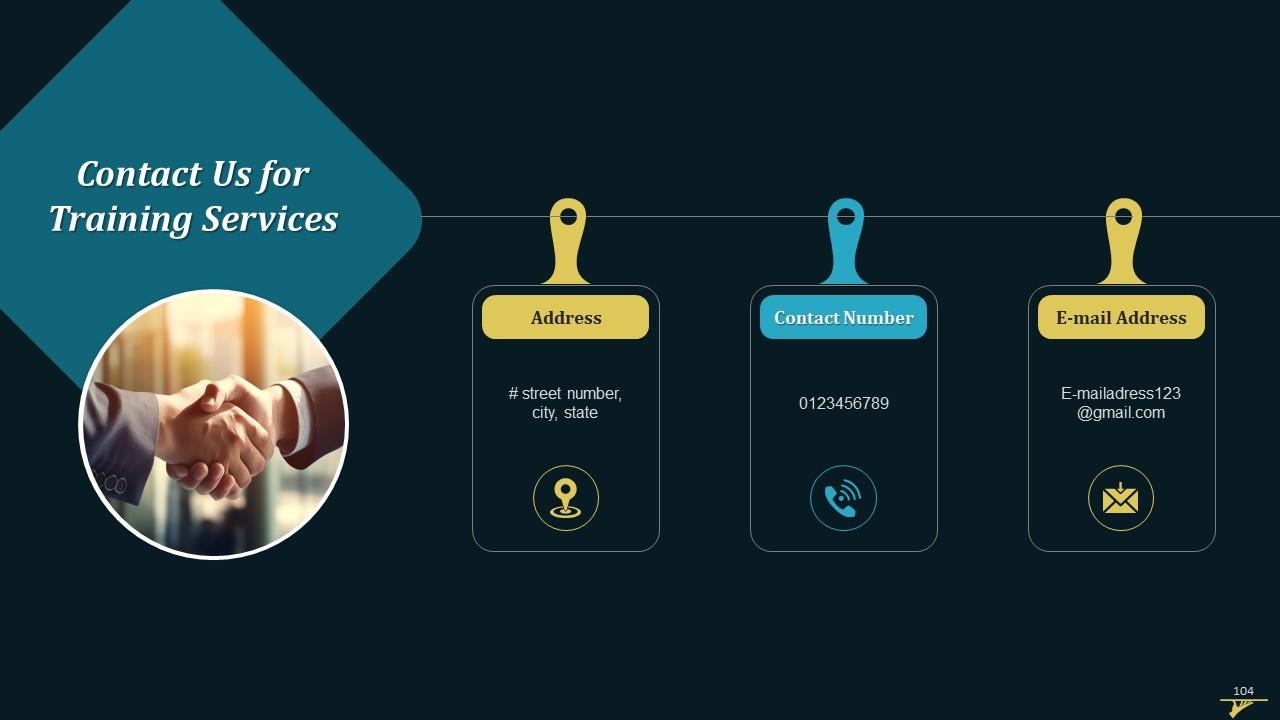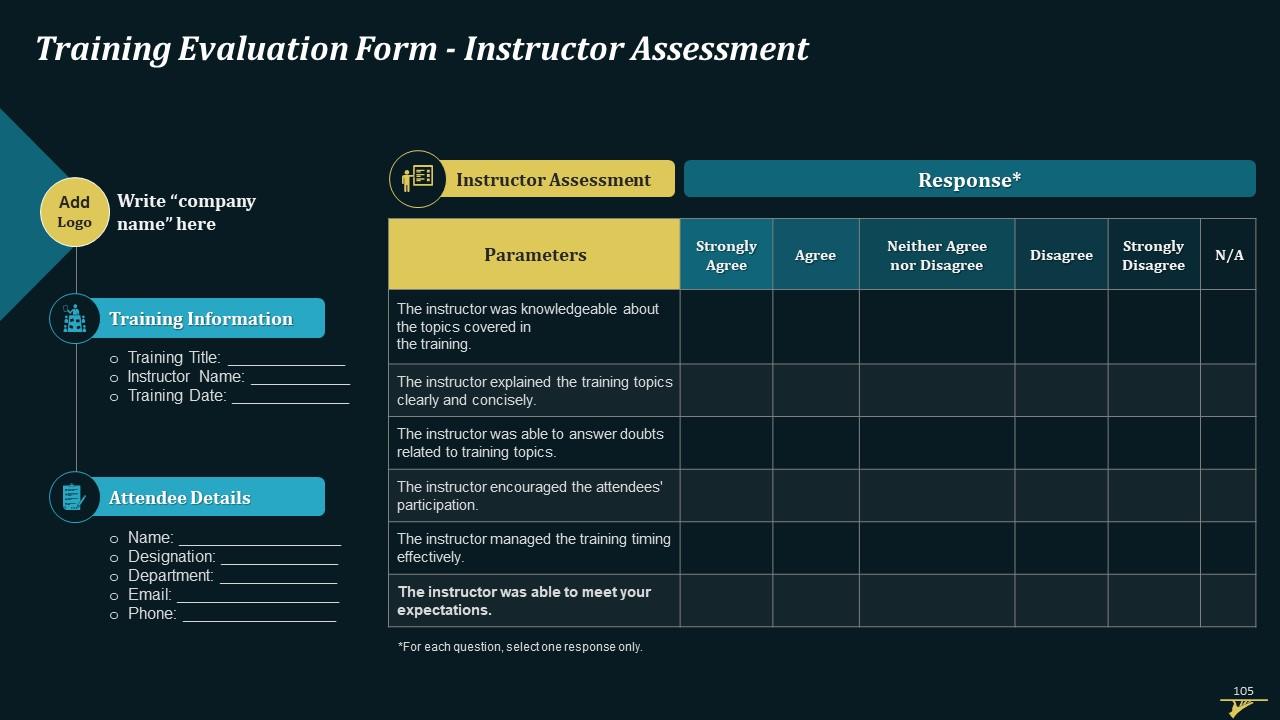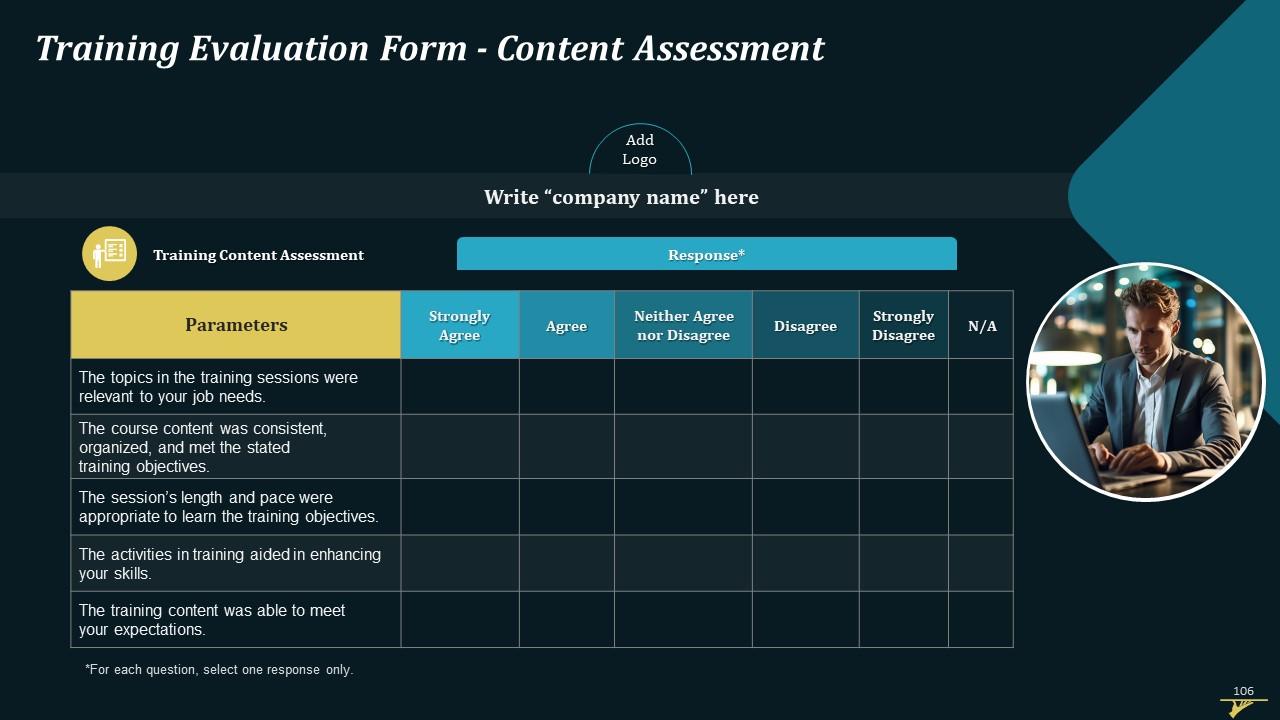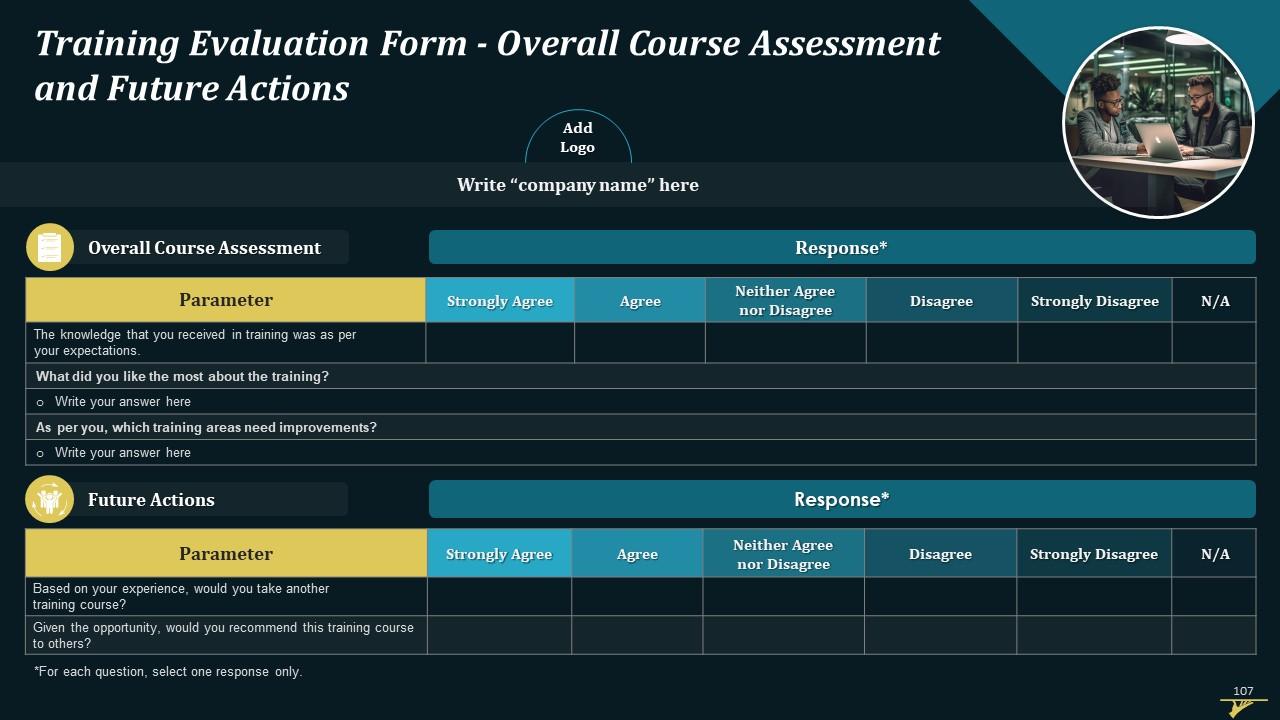Making Catering A Success In Hospitality Industry Training Ppt
This PowerPoint Training Module on Making Catering a Success in Hospitality Industry, covers a detailed walkthrough on the Art of Table Setting, introducing innovative techniques like F.O.R.K.S. and B and D to ensure elegance and efficiency. It explores various table settings suitable for a range of events, from Formal to Casual, including specific styles like Russian, American, and English, alongside guidelines for organizing buffets. The PPT Deck also includes essential Event Planning tools such as Checklists and Budget Plans. Culminating with Key Takeaways and thought-provoking Discussion Questions, it arms hospitality professionals with the knowledge to create memorable catering experiences.
This PowerPoint Training Module on Making Catering a Success in Hospitality Industry, covers a detailed walkthrough on the ..
- Google Slides is a new FREE Presentation software from Google.
- All our content is 100% compatible with Google Slides.
- Just download our designs, and upload them to Google Slides and they will work automatically.
- Amaze your audience with SlideTeam and Google Slides.
-
Want Changes to This PPT Slide? Check out our Presentation Design Services
- WideScreen Aspect ratio is becoming a very popular format. When you download this product, the downloaded ZIP will contain this product in both standard and widescreen format.
-

- Some older products that we have may only be in standard format, but they can easily be converted to widescreen.
- To do this, please open the SlideTeam product in Powerpoint, and go to
- Design ( On the top bar) -> Page Setup -> and select "On-screen Show (16:9)” in the drop down for "Slides Sized for".
- The slide or theme will change to widescreen, and all graphics will adjust automatically. You can similarly convert our content to any other desired screen aspect ratio.
Compatible With Google Slides

Get This In WideScreen
You must be logged in to download this presentation.
PowerPoint presentation slides
Presenting Training Deck on Making Catering a Success in Hospitality Industry. This deck comprises of 49 slides. Each slide is well crafted and designed by our PowerPoint experts. This PPT presentation is thoroughly researched by the experts, and every slide consists of appropriate content. All slides are customizable. You can add or delete the content as per your need. Not just this, you can also make the required changes in the charts and graphs. Download this professionally designed business presentation, add your content, and present it with confidence.
People who downloaded this PowerPoint presentation also viewed the following :
Content of this Powerpoint Presentation
Slide 3
This slide showcases the importance of great hotel catering as it helps to make the event memorable, sets the ambiance and gives opportunities to expand business network.
Instructor’s Notes:
Catering is a crucial aspect of hospitality due to following reasons:
- Food Shows Hospitality: Gratitude and respect for a friendship or a relationship is easily expressed through food. It not only provides nourishment to guests, but also gives them the opportunity to stimulate their creative energies
- Makes the Event Memorable: A good catering service creates a great impression on guests and allows the event to stand out. The catering a hotel provides makes or breaks the event as guests will never forget a good or a bad experience
- Sets the Ambiance: The way a table is set at an event depicts the casual or formal nature of setting. A colorful buffet with an exotic touch indicates a formal setting, whereas fries or burgers on the table depict a casual setup, and accordingly the mood of the event is set with the help of food
- Gives Opportunities to Expand Business Network: Sharing food with people we already know makes our bond with them stronger, whereas sharing it with people we don't know helps to create new bonds. These connections go a long way, especially in business scenarios
Slide 4
This slide highlights the recommendations for successful hotel catering. These are prepare food that stands out, match the food with the event theme, host tasting events, comply with standard food safety practices, ensure proper liaison between teams, and adequate staff.
Slide 5
This slide contains information that, at events, uniquely prepared and presented dishes helps to catch the attention of guests. Hotel staff must be creative while conceiving, cooking, and displaying the meal.
Slide 6
This slide contains information that, at events, uniquely prepared and presented dishes helps to catch the attention of guests. Hotel staff must be creative while conceiving, cooking, and displaying the meal.
Slide 7
This slide includes a tip to ensure successful hotel catering. It is to host tasting events in which prospective clients would be invited as tasters for food and beverages.
Slide 8
This slide contains information on the importance of food safety for successful hotel catering. The ways by which hotel can ensure food safety while catering are scrutinization at procurement, proper storage and transportation, and prepare with care.
Instructor’s Notes:
The ways by which hotel can ensure food safety while catering are:
- Scrutinization at Procurement: The major part of the food safety job is done if raw materials (vegetables, fruits, dairy, meat, and even packaged foods) are freshly procured. The manufacturing date, use by date, and expiry date should always be checked beforehand
- Proper Storage and Transportation: Ensure that food items are stored at correct temperatures in airtight containers. They should never be left out of the refrigerator for more than two hours as it will lead to food poisoning. During transportation, hot and cold foods should be stored separately at the proper temperature
- Prepare With Care: Food items should be separated to avoid contamination. Raw food must be stored separately from cooked foods. Disinfecting surfaces, washing all equipment frequently, and disposing off gloves after each use play a vital role in food safety. Never prepare food a long time (hours) before the event.
Slide 9
This slide showcases the role of proper liaison between catering team, chefs, and hotel managers for smooth coordination in order to ensure successful hotel catering. Assigning one point of contact and making use of technology are the two best ways to do it.
Instructor’s Notes:
To ensure successful hotel catering, have a proper liaison between multiple teams. This can be achieved by:
- Assigning One Point of Contact: One person may be assigned as a point of contact through which all the communication between waiters and kitchen staff will flow. This will help avoid any unnecessary noise in an already hectic kitchen, and waiters will be able to share guests’ needs properly
- Utilizing Technology: Spoken or written communication leaves room for avoidable human error. Thus, proper and continuous availability of technology removes the issue. It will lead to happier customers and a confident workforce that can focus on serving the customers
Slide 10
This slide highlights the need of talented and adequate staff for successful hotel catering. The energy and talent of the culinary team in the kitchen and the serving team on the floor must be channelized to treat guests with warmth and positivity. The staff required for successful hotel catering are supervisors, chefs and waiters.
Instructor’s Notes:
The staff required for successful hotel catering are:
- Supervisors: The chief responsibility of the supervisor is to ensure that the tasks of the cooking staff are completed on time. This manager is responsible if any problem such as a food shortage arises. Also, this person deals with any of the guest complaints/issues
- Chefs: The chef handles decisions regarding the menu and prepares the food. For smaller events, one chef is usually enough to handle all food preparation. For bigger events, a sous chef is kept as backup and he/she can assist the chef with preparation of meals
- Waiters: Waiters bring food to all guests, resupply food that runs out, and pass trays around. It is important that the staff are more in number than what is actually required. These must be skilled enough in guest interaction
Slide 11
This slide contains information and the basic rules and etiquette about table setting in a hotel. The general table setting rules are creativity, flexibility and functionality
Instructor’s Notes:
The general table setting rules are:
- Creativity: Adding creativity to the table enhances and elevates the whole dining experience of guests. Setting a theme for the meal, adding flowers and candlesticks, and making use of the latest trends are some simple, yet effective ways to do add this aura of creativity
- Flexibility: In case of space limitations, flexibility has to be built in table-setting/arrangement to allow guests to make changes as required and, maintain consistency as well
- Functionality: A table setting should be such that it makes dining easy and functional. As if it doesn't work for the guest, nothing else will matter in the end
Slide 12
This slide contains information about some tried and tested table setting guidelines which includes placement of glassware, knives, forks, spoons etc.
Slide 13
This slide provides information about the FORKS tip for table setting that helps one memorize crockery placement.
Slide 14
This slide highlights the B&D technique for table setting which is one of the best tricks for knowing on which side the bread plate is kept and on which side drinks are kept.
Slide 15
This slide provides information about types of table setting in hospitality industry. These are formal, informal, casual, Russian, American, English, and buffet.
Instructor’s Notes:
Types of table setting in hospitality industry are:
- Formal Table Setting: A formal table setting is done at formal events and black-tie weddings. This setting employs the most flatware and glassware
- Informal Table Setting: The informal table setting is used at casual weddings, dinner parties, or other such occasions that need a bit of dressing without being too formal
- Casual Table Setting: The casual table setting gives a special touch to the event and is prevalent at big events such as weddings and dinner parties
- Russian Table Setting: It is the most formal way of table setting where the cooking and completion of food are done in the kitchen, but the food is served in a unique way to guests.
- American Table Setting: The American table setting is prevalent in less formal events since it is an efficient and simple choice wherein food is plated in the kitchen and brought out to the guests individually
- English Table Setting: The English table setting is less formal and best suited when the guests require a high level of interaction with their host. It is designed to make the guests feel at home
- Buffet Table Setting: Here, food and drinks are placed on separate tables, away from the seating area. The dining plates are positioned at the beginning of the buffet with napkins and cutlery alongside these or at the end
Slide 16
This slide highlights elements in a formal table setting which are charger plate, napkin, dinner fork, salad fork, fish fork, dinner knife, salad knife, fish knife, soup spoon, butter plate, butter knife, dessert spoon, dessert fork, white wine glass, red wine glass, champagne flute, water glass, and place card.
Instructor’s Notes:
Everything at the table should be geometrically spaced, with the centerpiece at the exact center and place settings at equal distances. Flower arrangements and decorations can be varied according to requirement.
Slide 17
This slide highlights the placement and order of cutlery in a formal table setting. The positions of cutlery, glassware and other utensils are given in brief.
Slide 18
This slide depicts about the center elements in a formal table setting which are charger plates and a napkin.
Slide 19
This slide illustrates the placement of forks on the left side of table. The elements are dinner fork, salad fork, and fish fork.
Slide 20
This slide contains information about the utensils that are kept on the right side of the table. These are the dinner knife, salad knife, fish knife and soup spoon.
Slide 21
This slide highlights the utensils that is kept on the top of the table. These are butter plate, butter knife, dessert spoon, dessert fork, and place card.
Slide 22
This slide highlights cutlery placed on the top of the table. These are white wine glass, red wine glass, champagne flute, and water glass.
Slide 23
This slide highlights the meaning and elements in an informal table setting. This setting is used at casual weddings, dinner parties, or other such occasions that need a bit of dressing up from guests, without being too formal.
Slide 24
This slide contains information about the placement and order of utensils, cutlery and glassware in an informal table setting.
Slide 25
This slide showcases the elements that is dinner plate and napkin that are placed at the center of an informal table setting.
Slide 26
This slide showcases the elements of an informal table setting placed on the left. These are salad fork and dinner fork.
Slide 27
This slide showcases elements of an informal table setting that lie on the right. Soup spoon, salad knife and dinner knife are the cutlery used on the right side of dinner table in an informal setting.
Slide 28
This slide showcases elements of an informal table setting that are dessert spoon, water glass and wine glass and where these lie on the top of the table placement.
Slide 29
This slide provides information about the meaning and elements of casual table setting which are dinner plate, dinner fork, napkin, water glass, dinner knife, and spoon.
Slide 30
This slide contains information about the position of elements at the center, left & right and top of the table in casual table setting.
Slide 31
This slide contains details about the alignment of cutlery and glasses, holding of flatware and maintenance of elbow room between two place settings.
Slide 32
This slide contains details on the number of pieces of flatware to be kept on either side of plate, the setting of utensils for the fourth course, and seating arrangement in case of uneven numbered people.
Slide 33
This slide visually illustrates the Russian table setting in hospitality industry and the utensils, cutlery and glassware that completes it, with their placement.
Slide 34
This slide contains information about the guidelines related to serving of food to be followed by the servers in a Russian table setting. It is the most formal way of table setting.
Slide 35
This slide illustrates the American table setting in hospitality industry and the utensils, cutlery and glassware that completes it, with their placement.
Slide 36
This slide contains information about the guidelines related to serving of food in an American table setting. It is prevalent in less formal events since it is an efficient and simple choice.
Slide 37
This slide showcases the positioning of elements in an English table setting in hospitality industry.
Slide 38
This slide contains information about the guidelines for an English table setting. It is a fantastic choice for special events and is designed to make the guests feel at home.
Slide 39
This slide highlights the setting of a buffet table in hospitality industry. The placement of flatware, napkins, plates, hot and cold foods etc are given in detail.
Slide 40
This slide contains information on buffet table setting guidelines, wherein the food and drinks are placed on separate tables, away from the seating area.
Slide 41
This slide showcases a checklist containing event information along with the pre, during and post event activities.
Slide 42
This slide highlights the budget plan for a hotel event where the major expenses include venue, décor, and food and beverage.
Slide 43
This slide highlights the key takeaways from the session on essential elements for successful hotel catering. The trainer can use these to highlight vital learnings for the trainees.
Slide 61 to 76
These slides contain energizer activities to engage the audience of the training session.
Slide 77 to 104
These slides contain a training proposal covering what the company providing corporate training can accomplish for the client.
Slide 105 to 107
These slides include a training evaluation form for instructor, content and course assessment.
Making Catering A Success In Hospitality Industry Training Ppt with all 116 slides:
Use our Making Catering A Success In Hospitality Industry Training Ppt to effectively help you save your valuable time. They are readymade to fit into any presentation structure.
-
One word for SlideTeam–Versatile!
-
The team is highly dedicated and professional. They deliver their work on time and with perfection.


